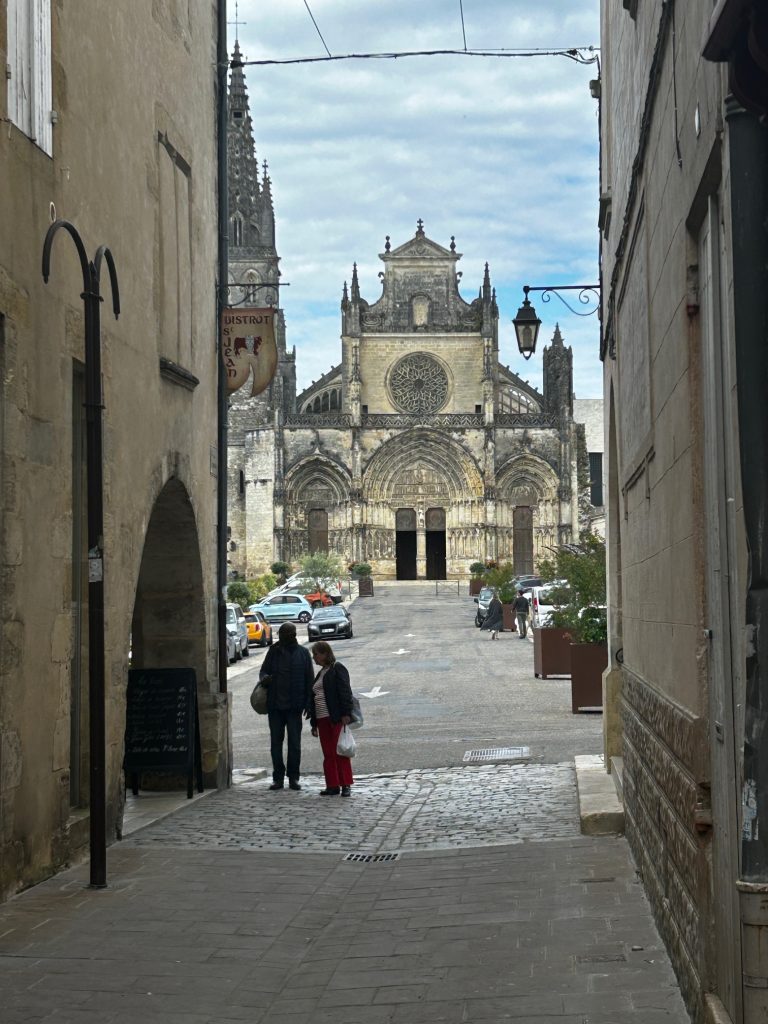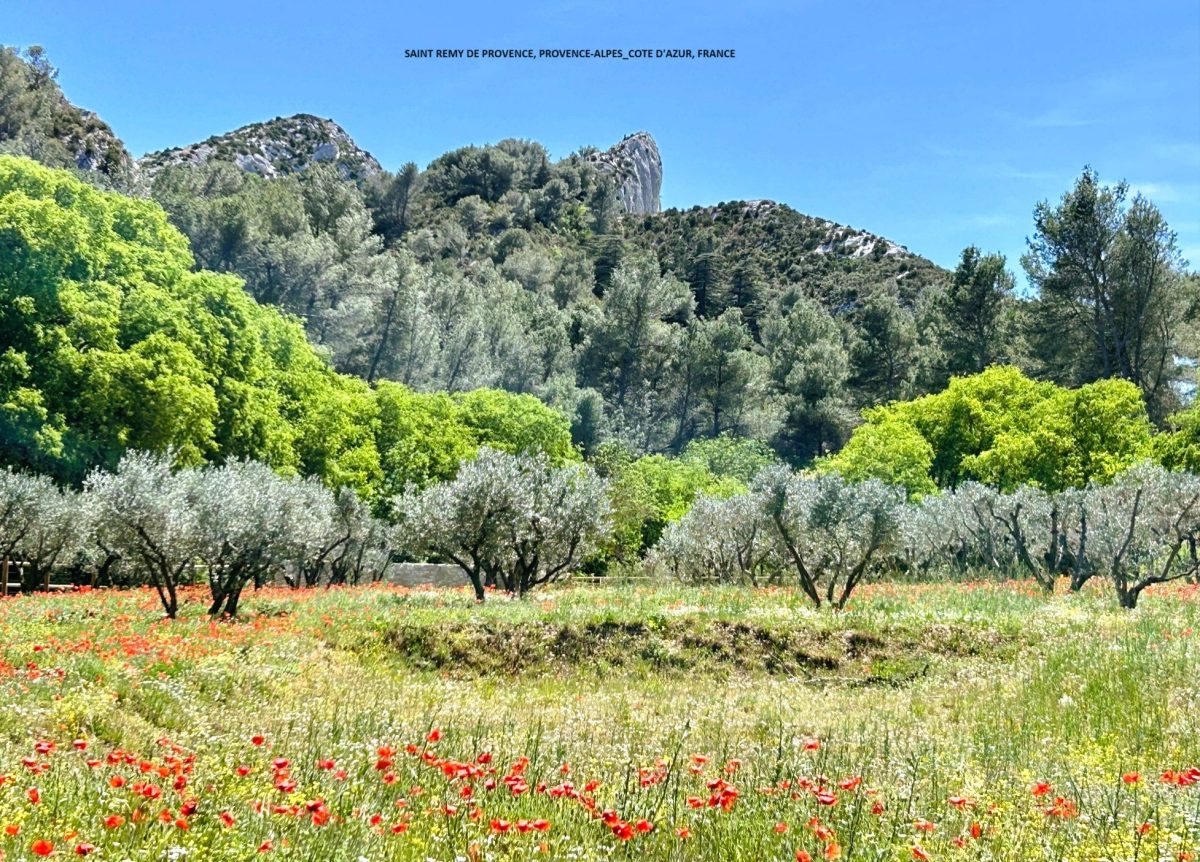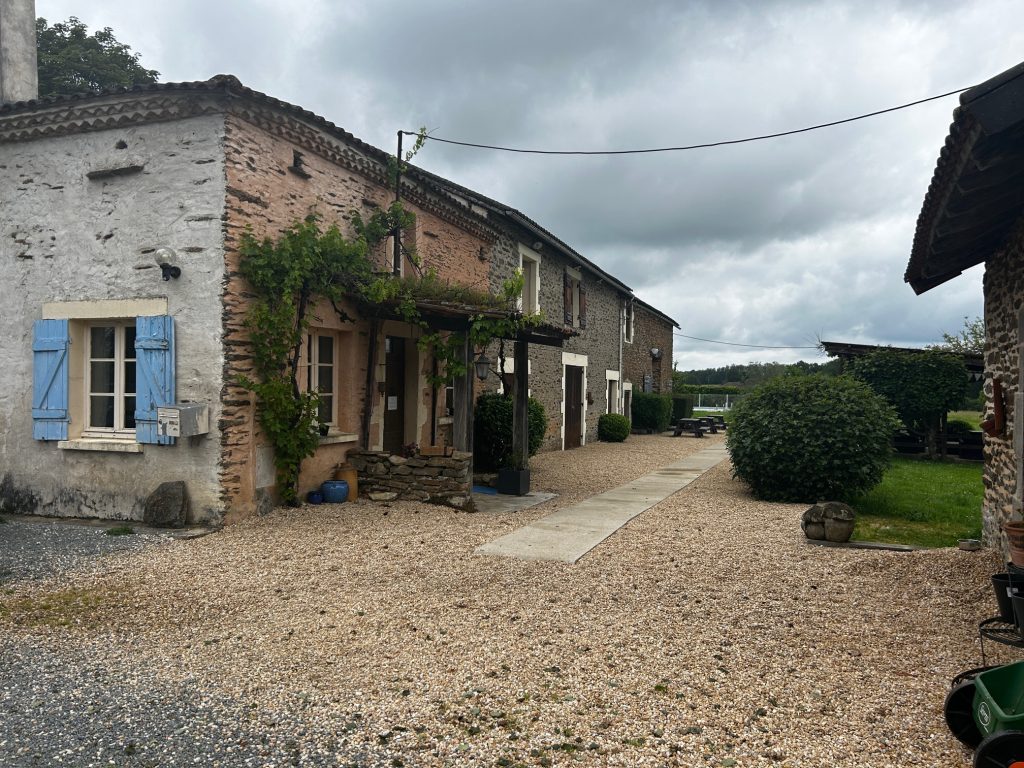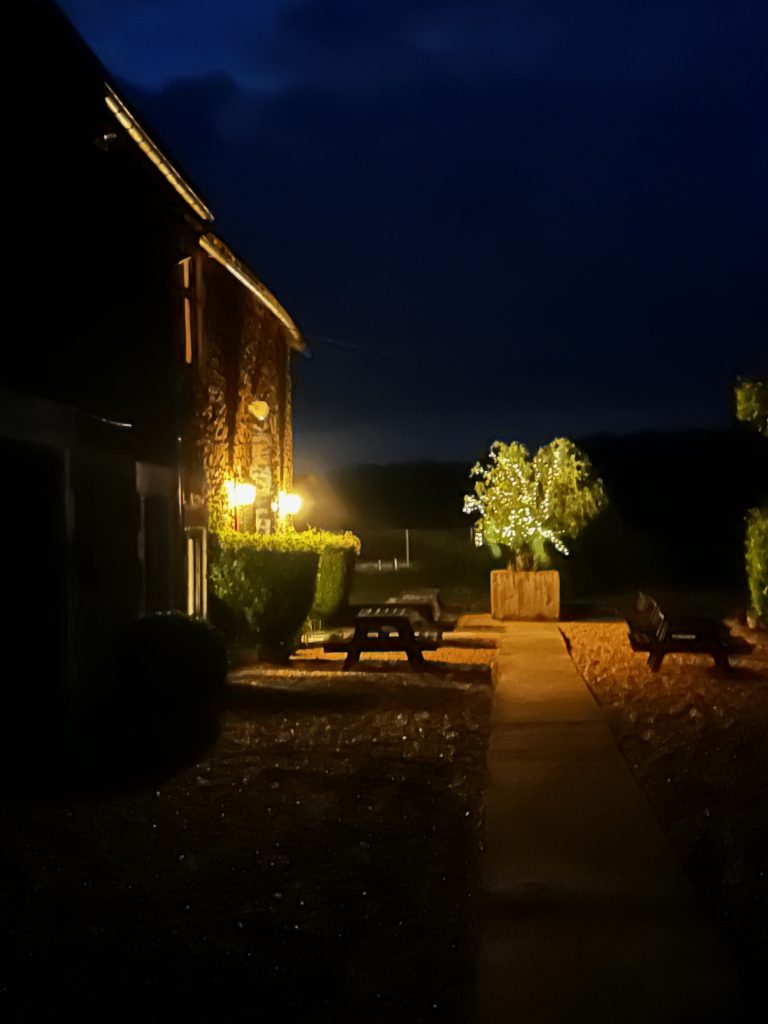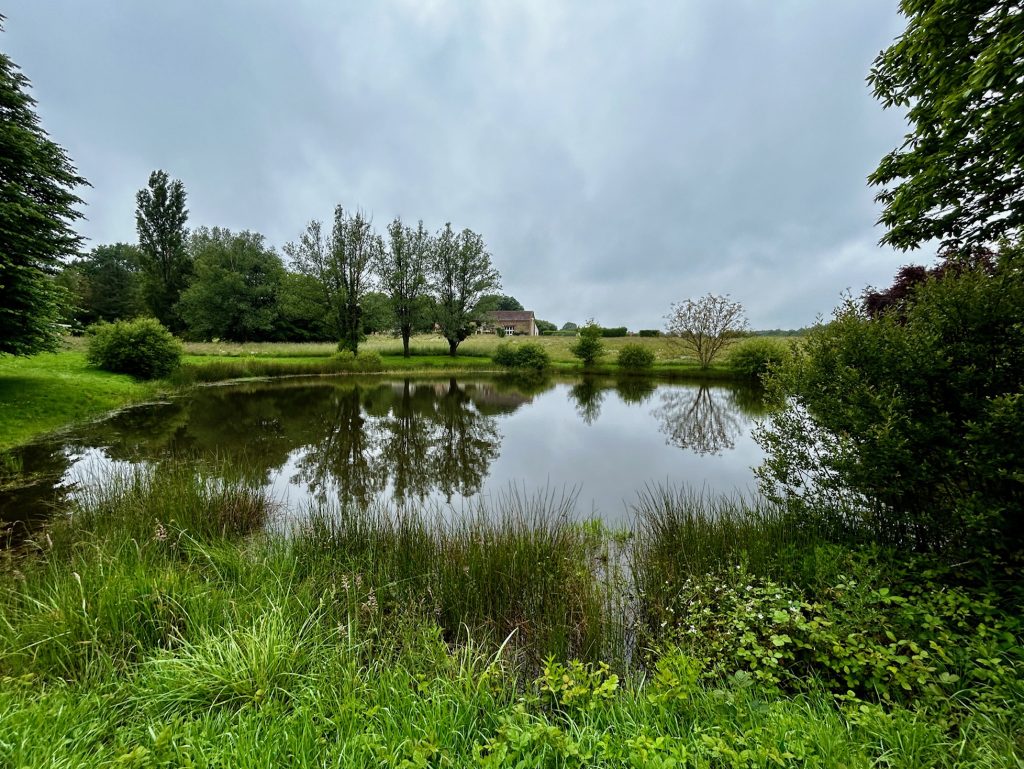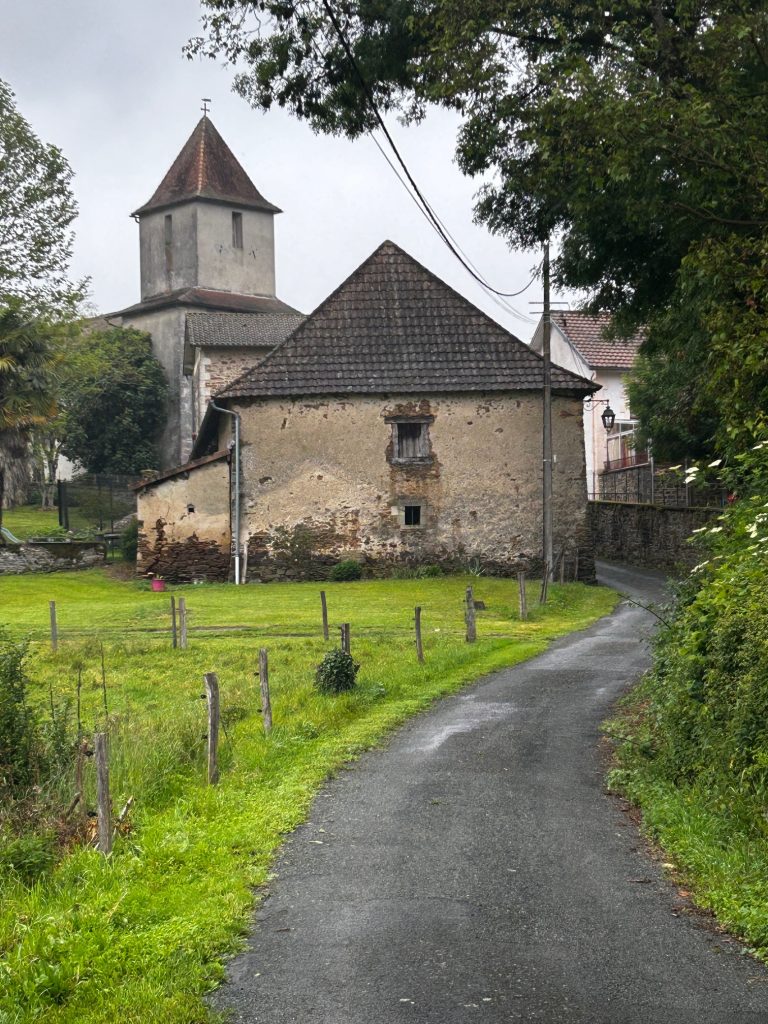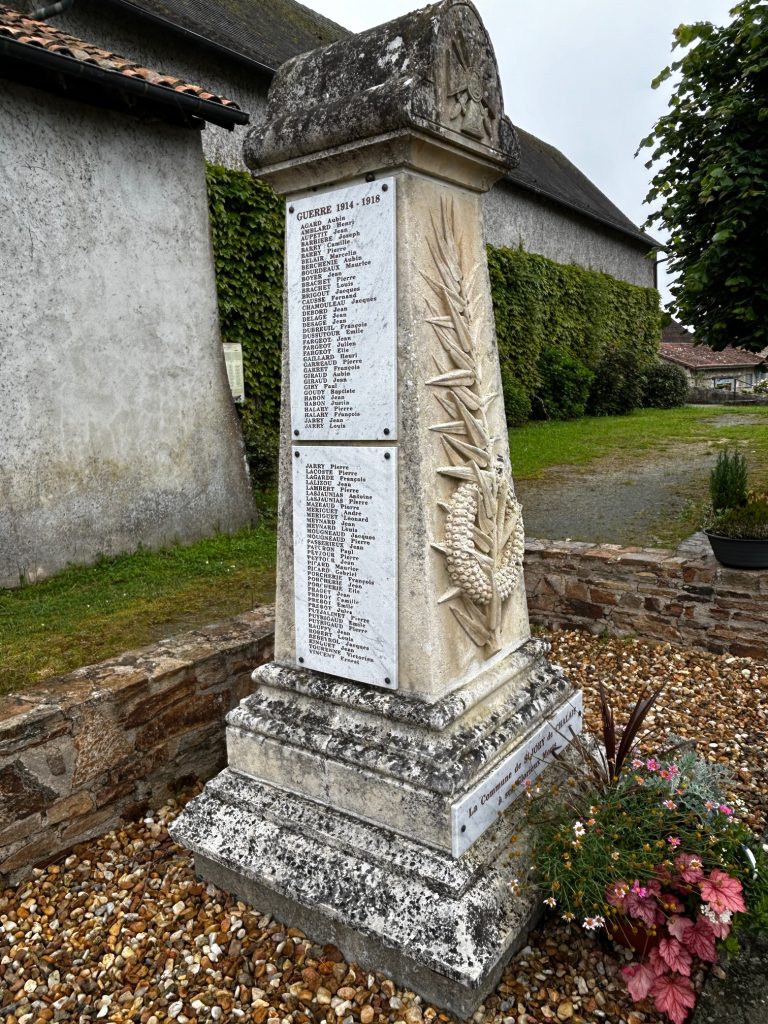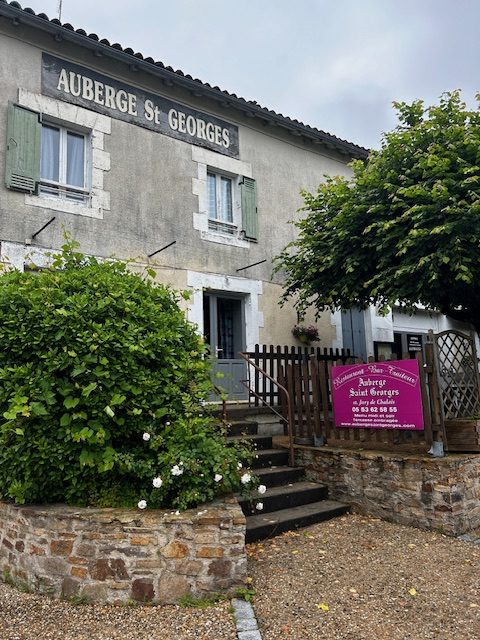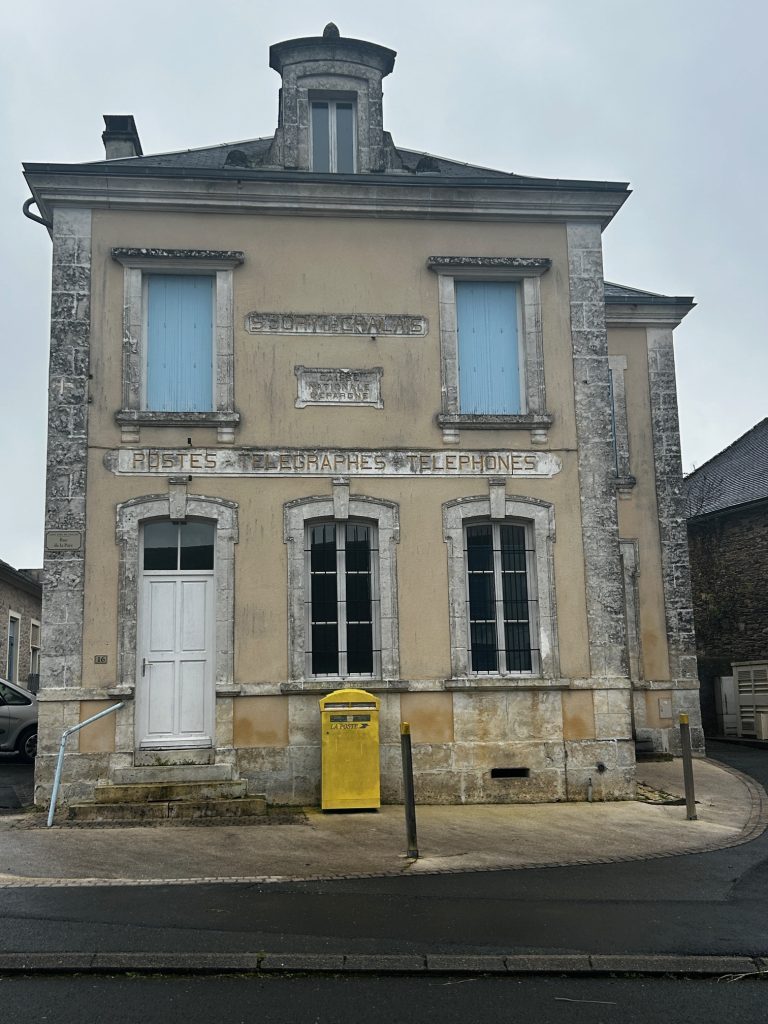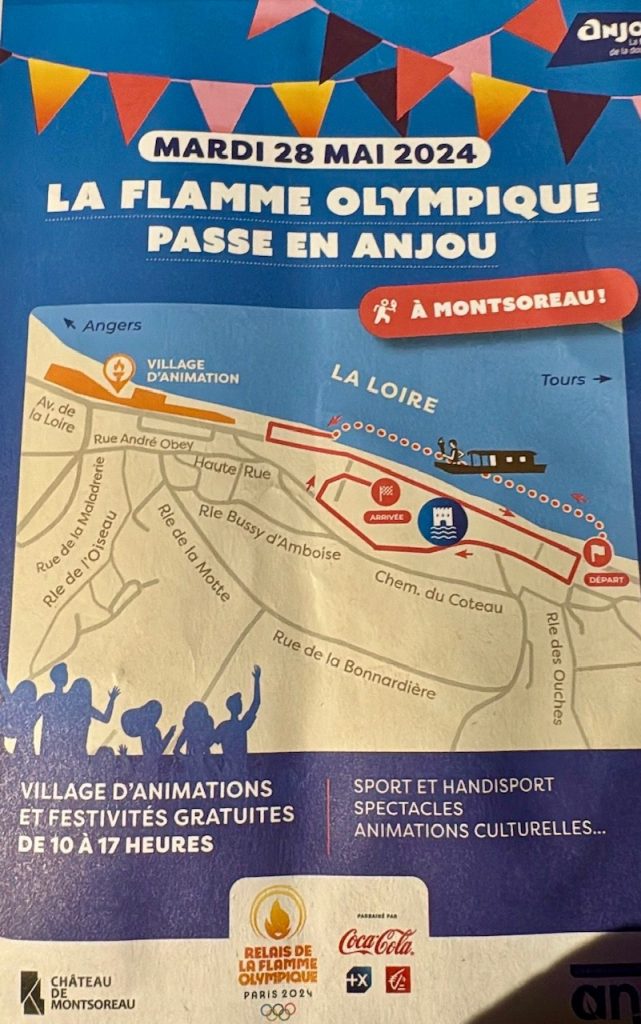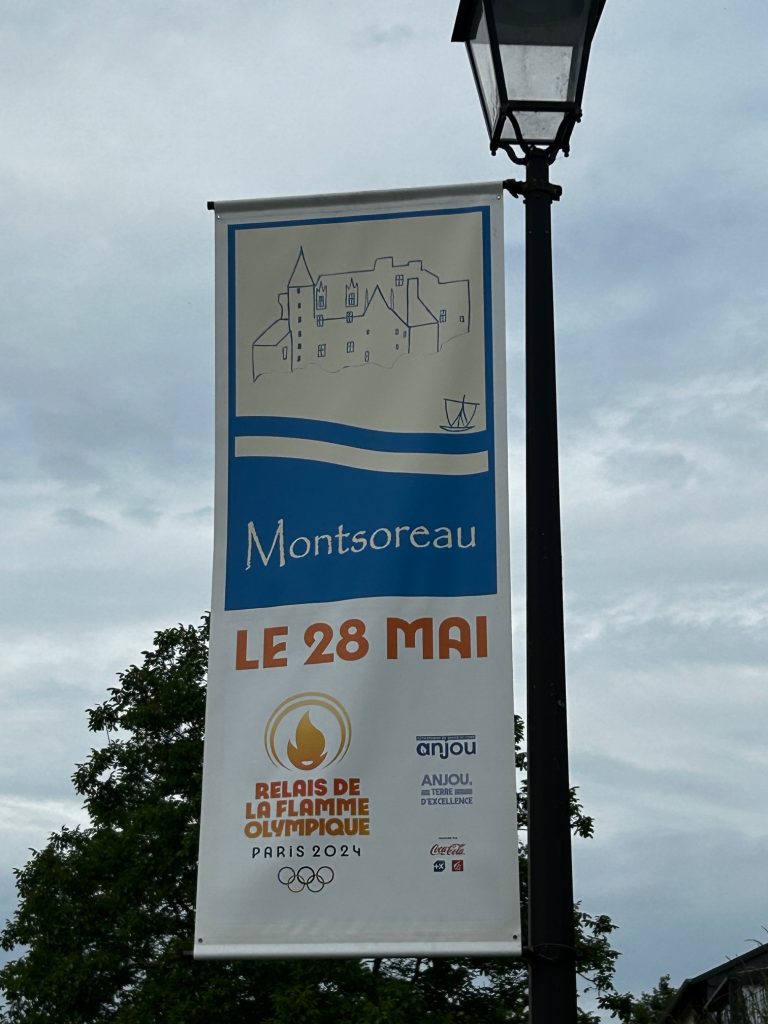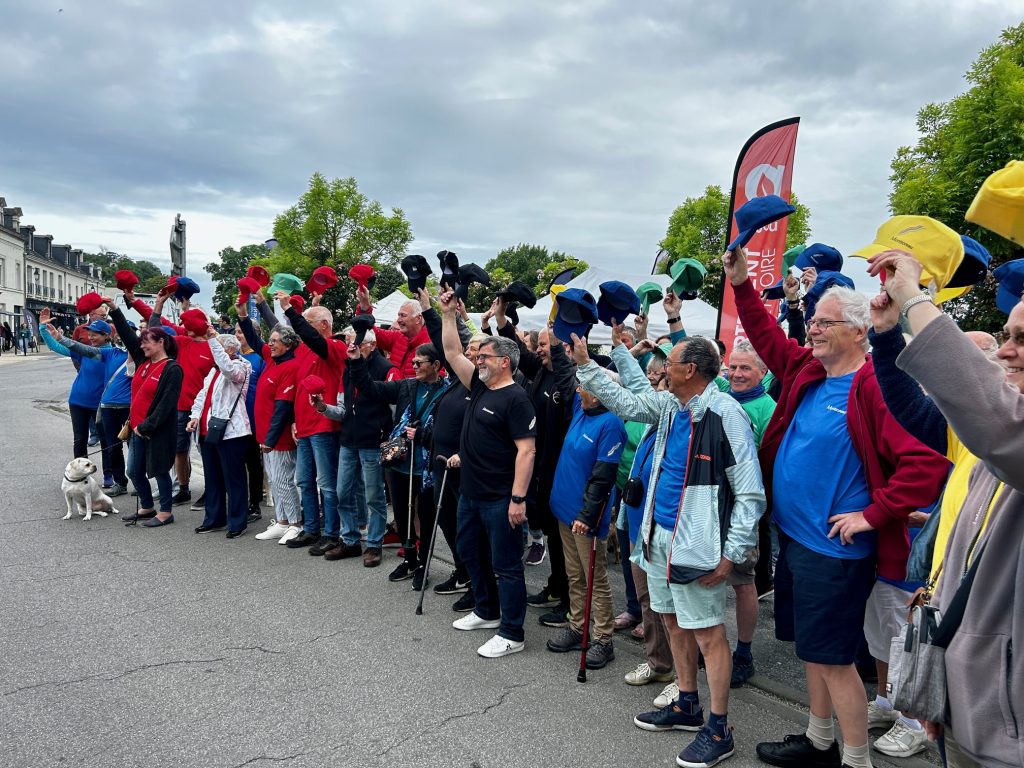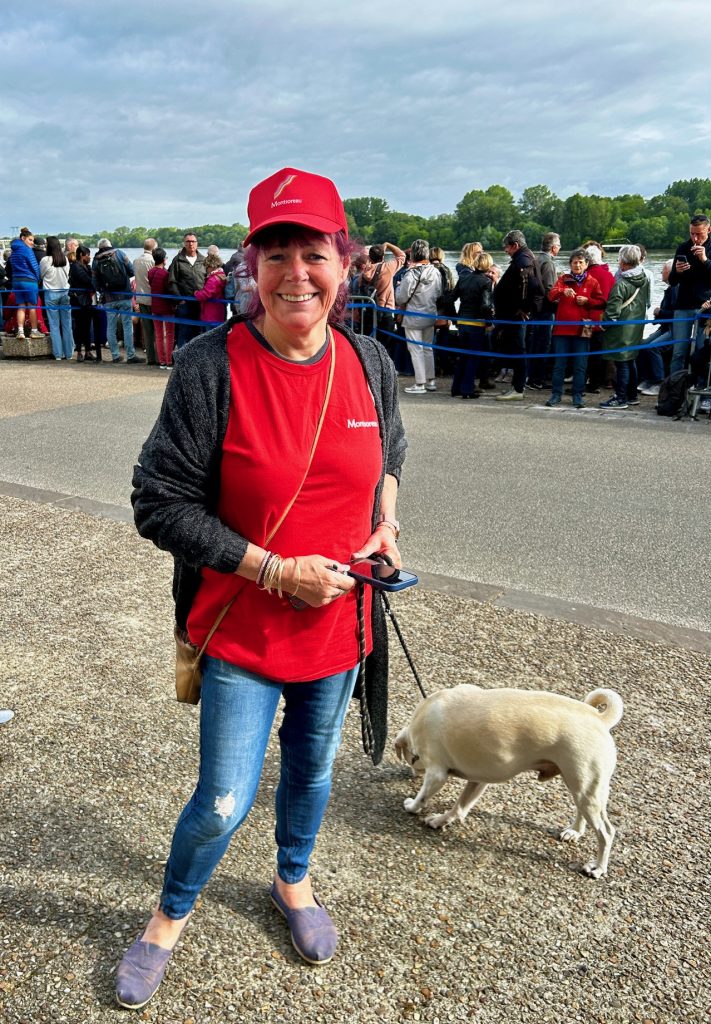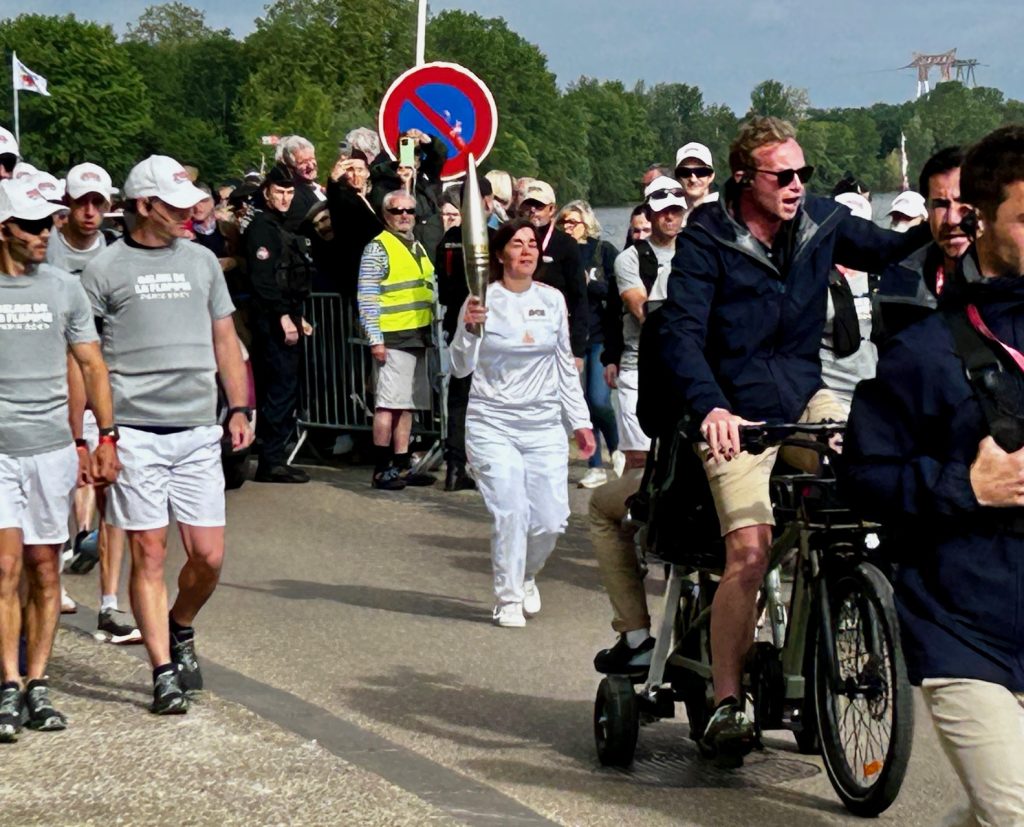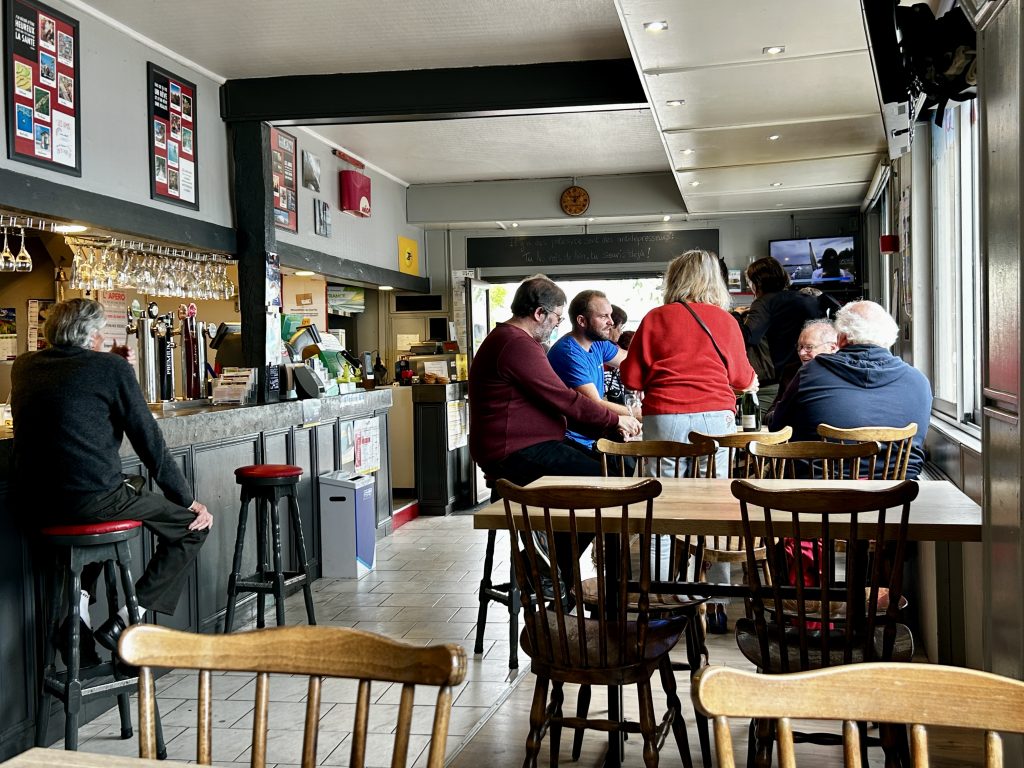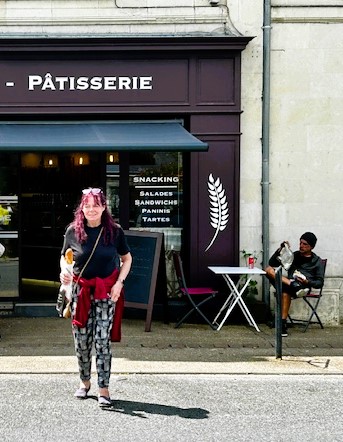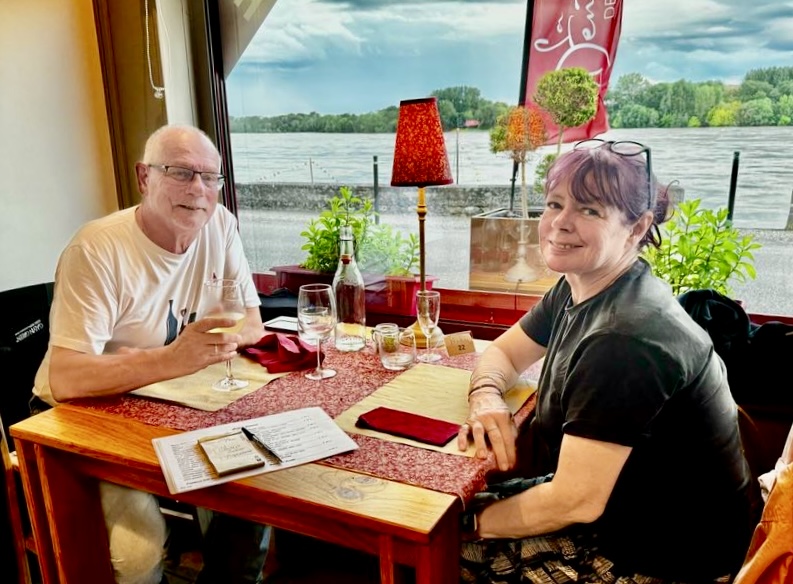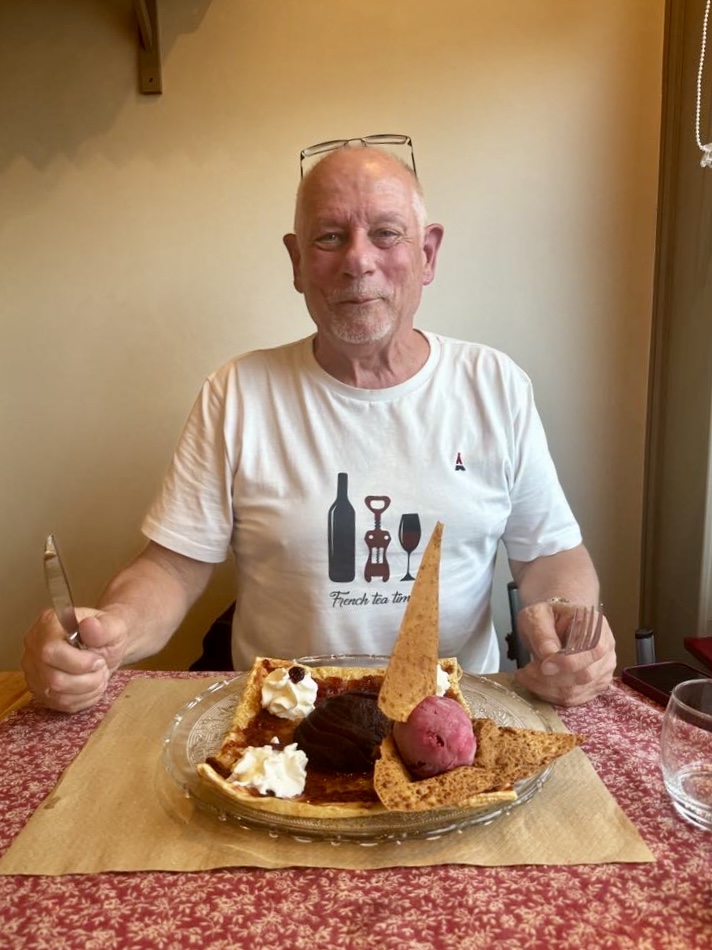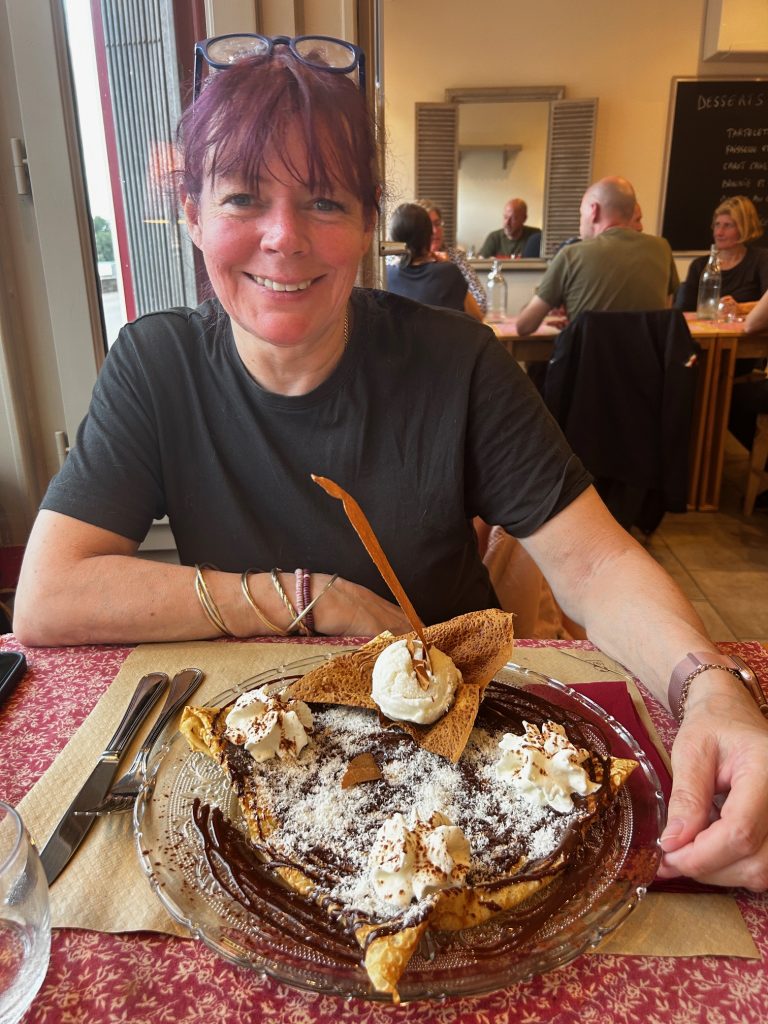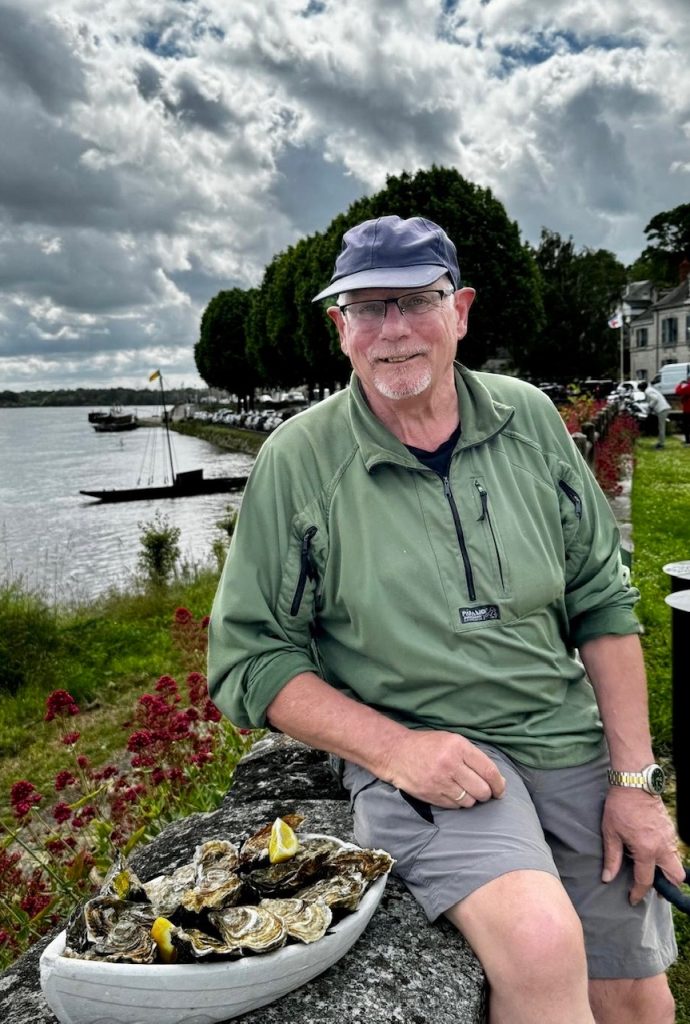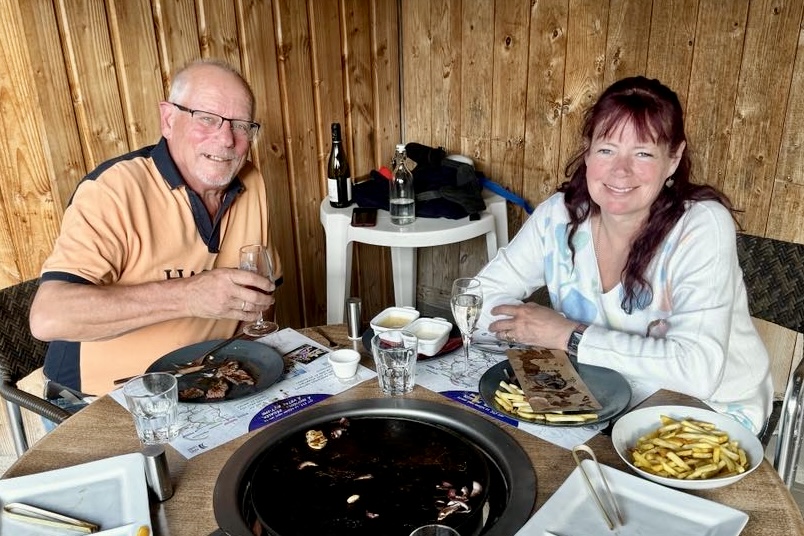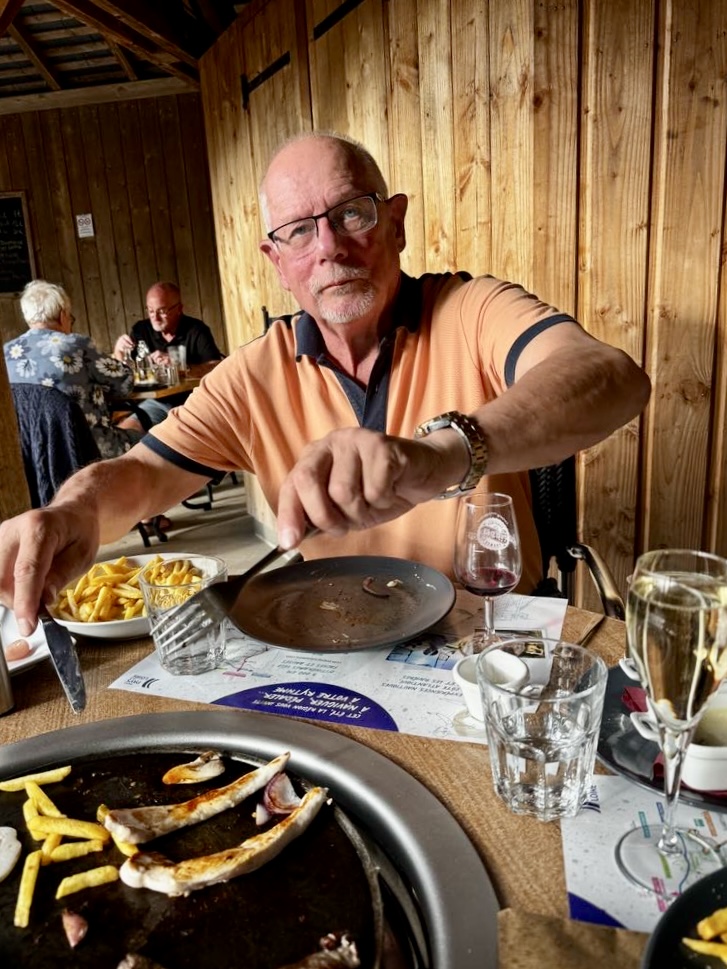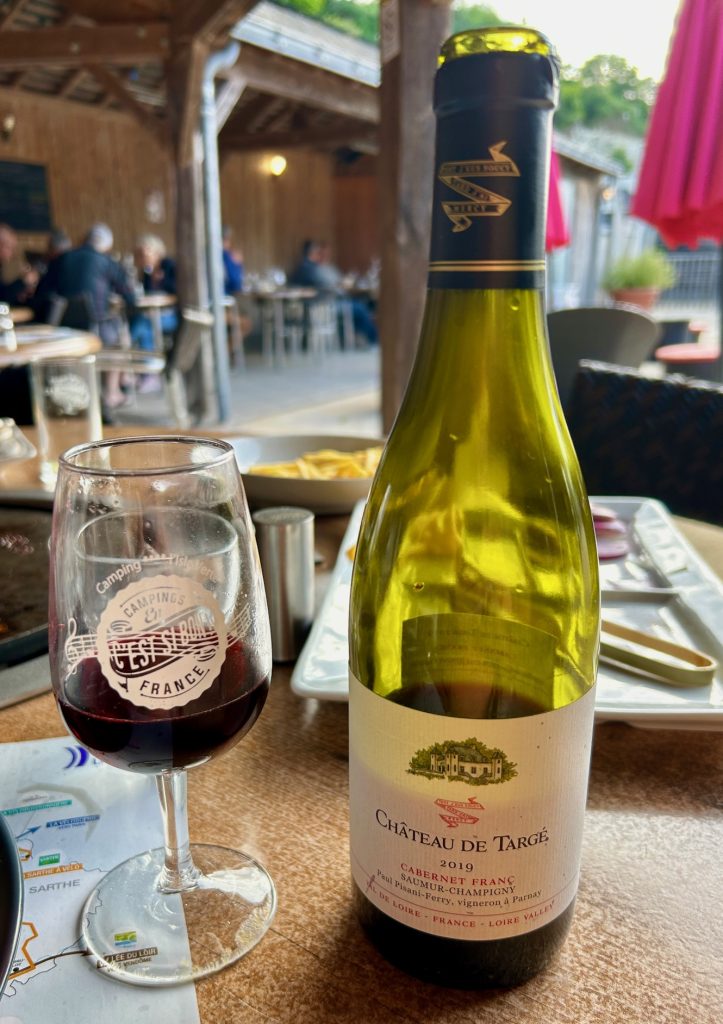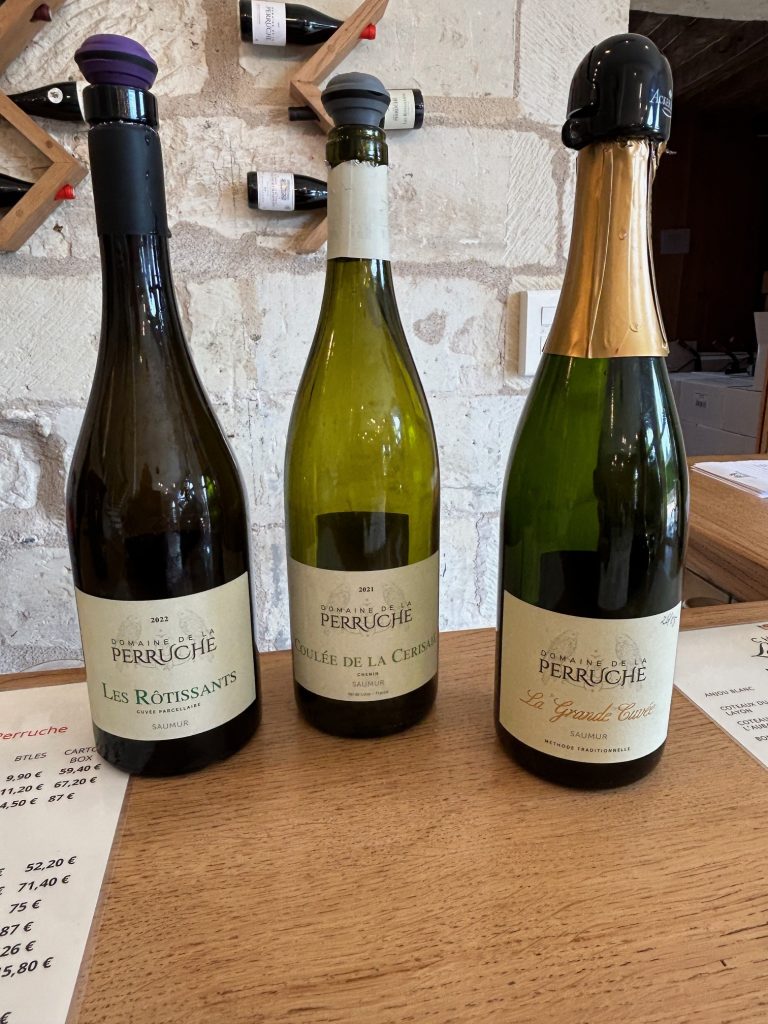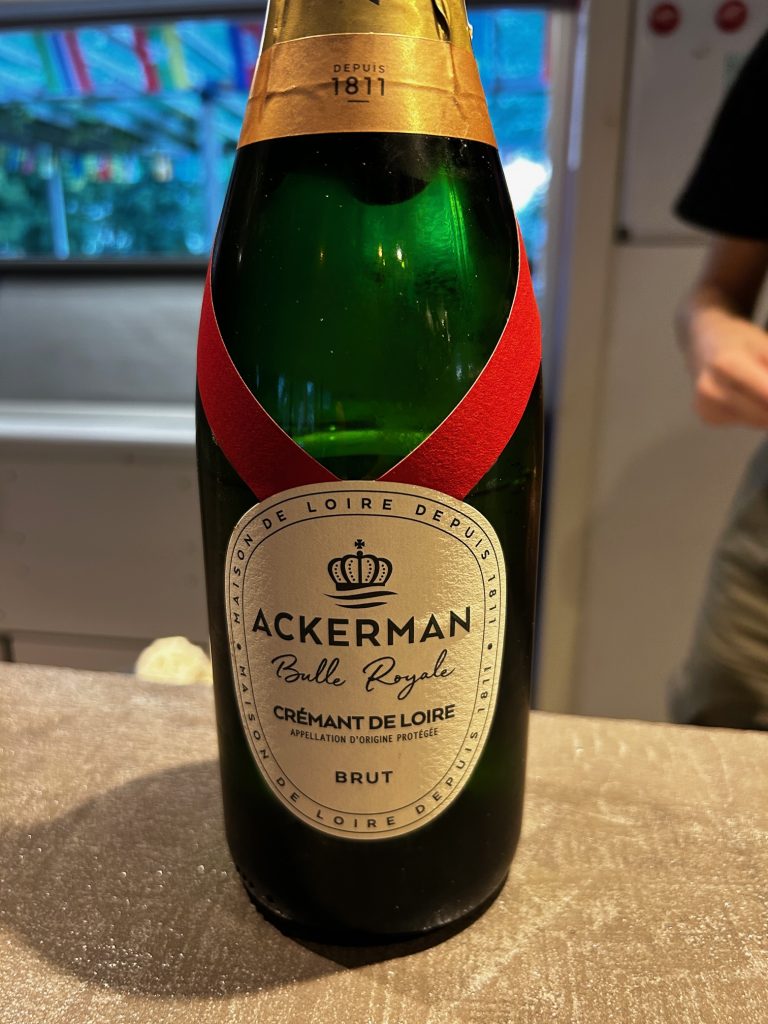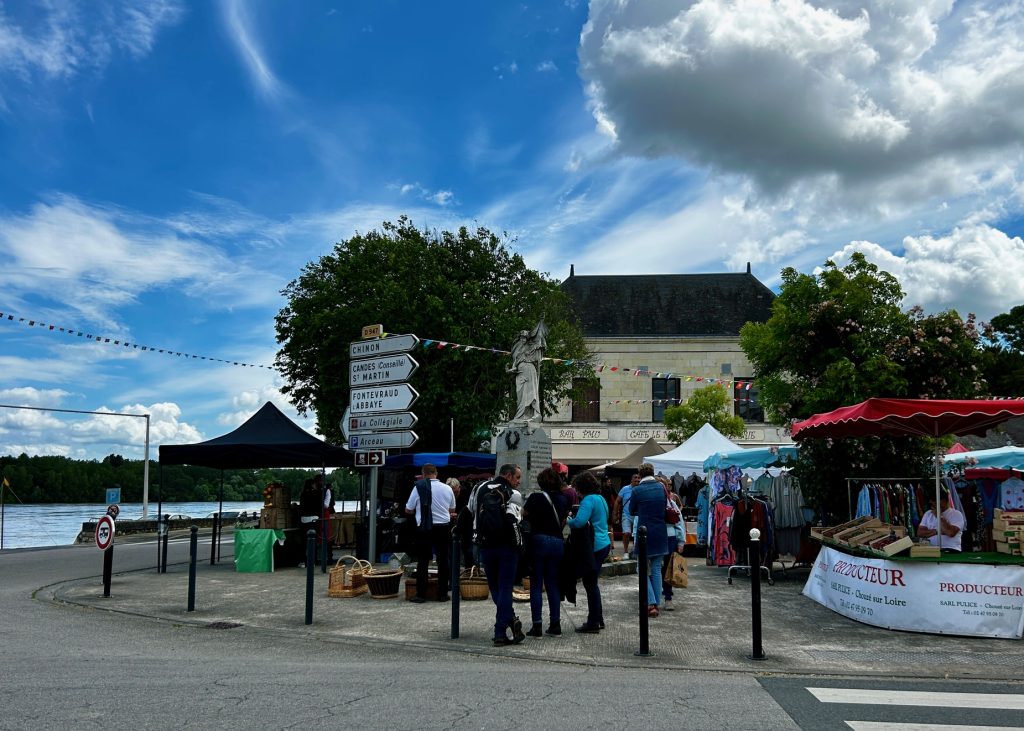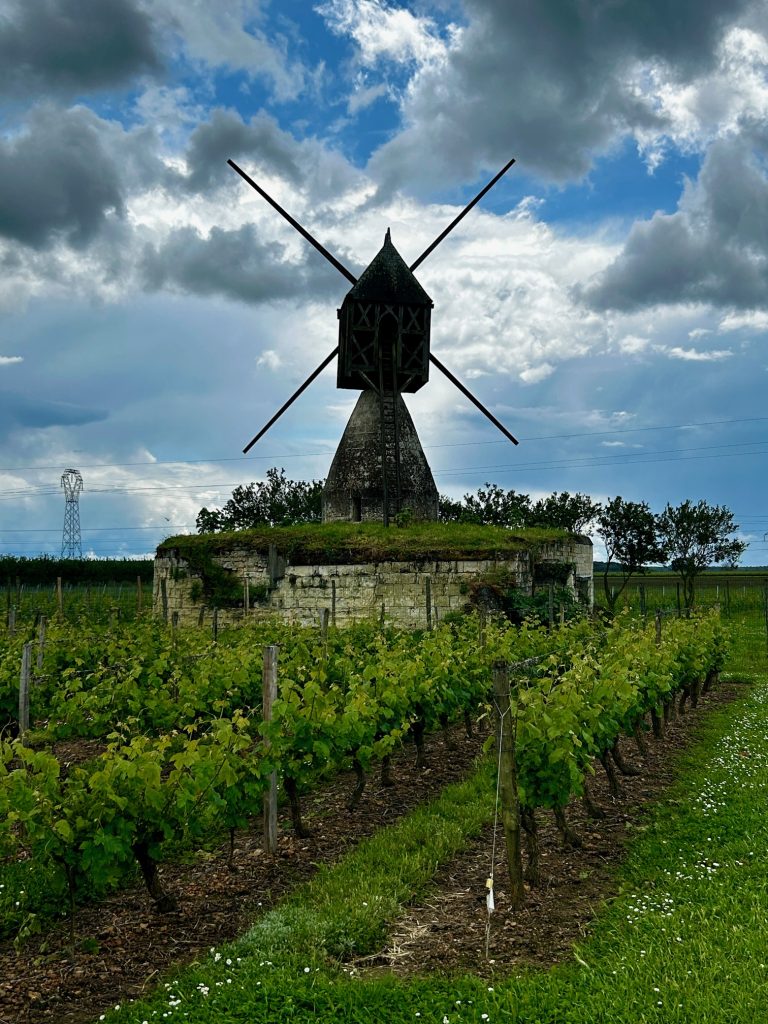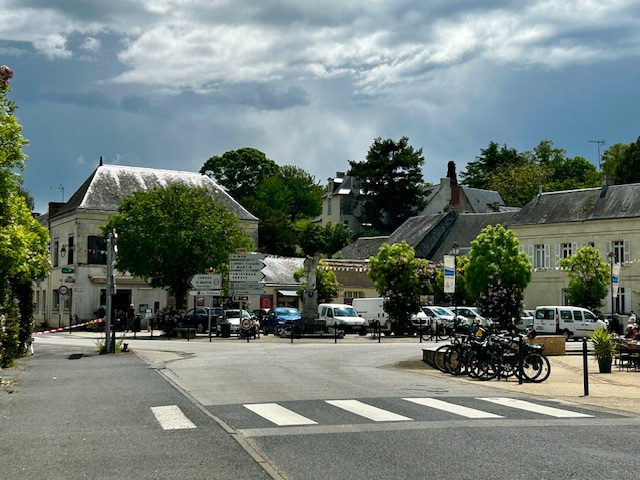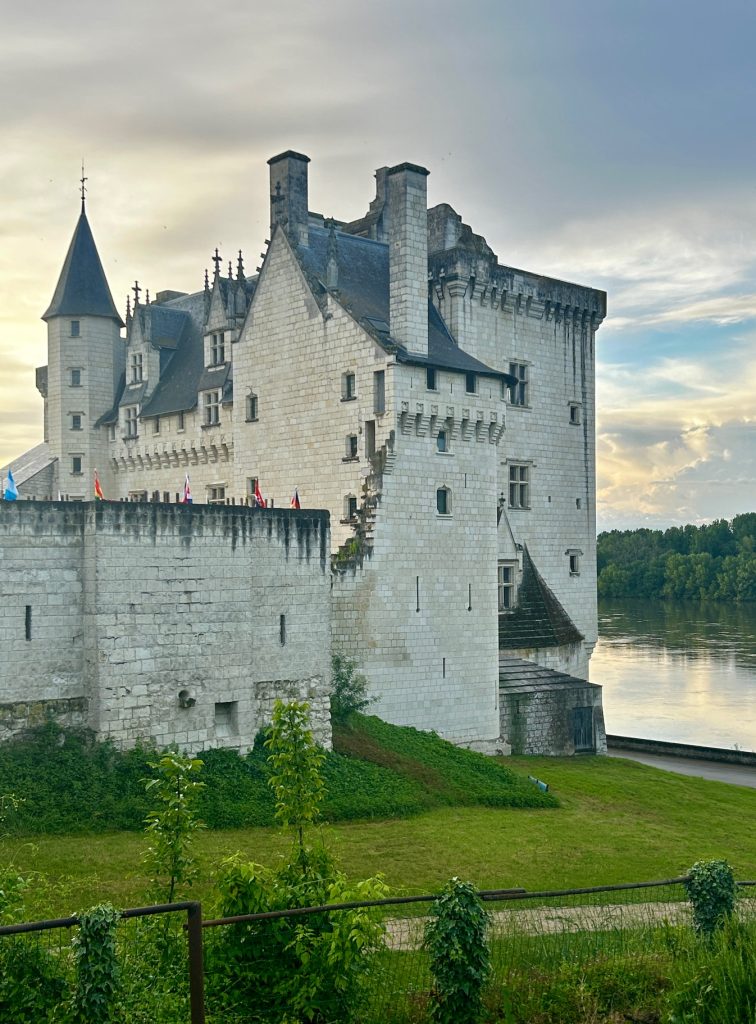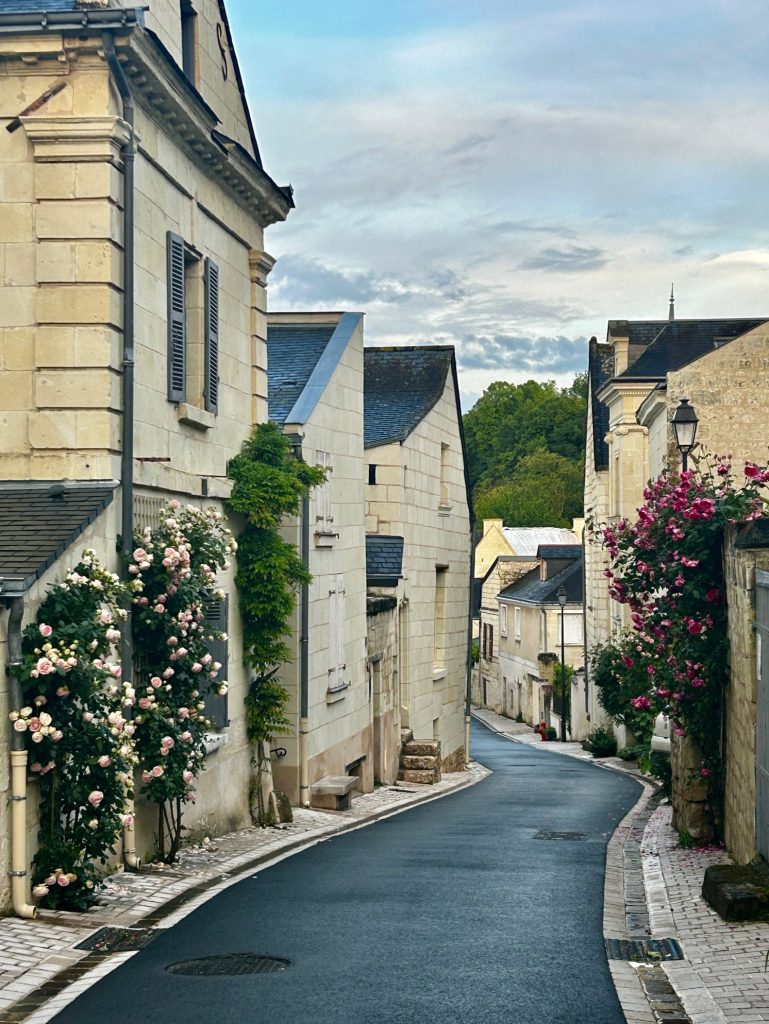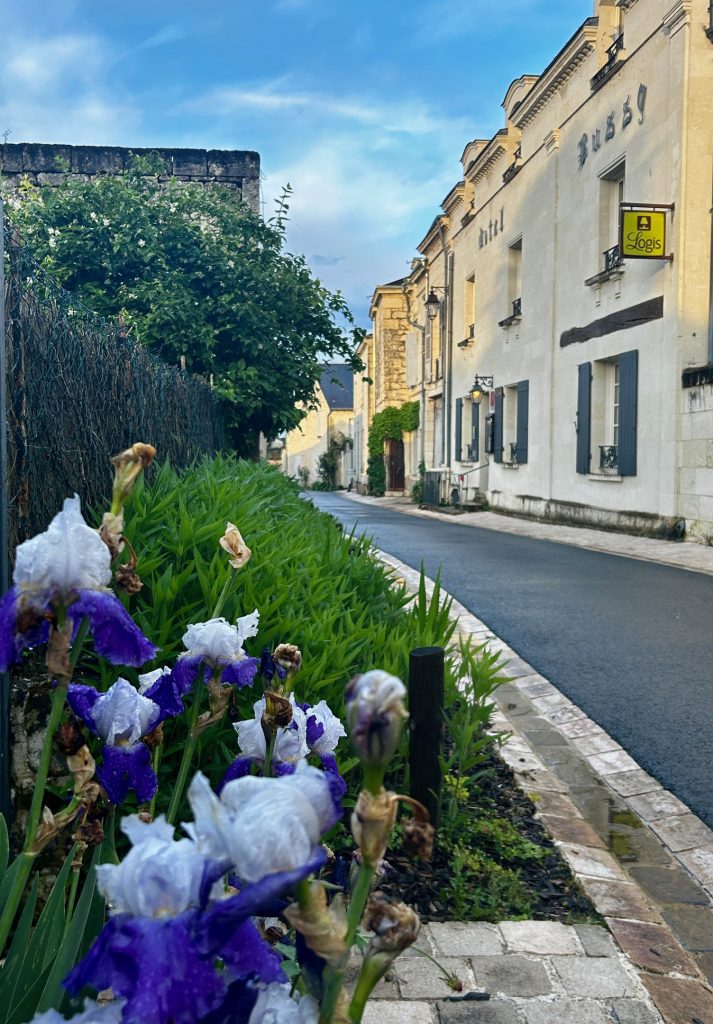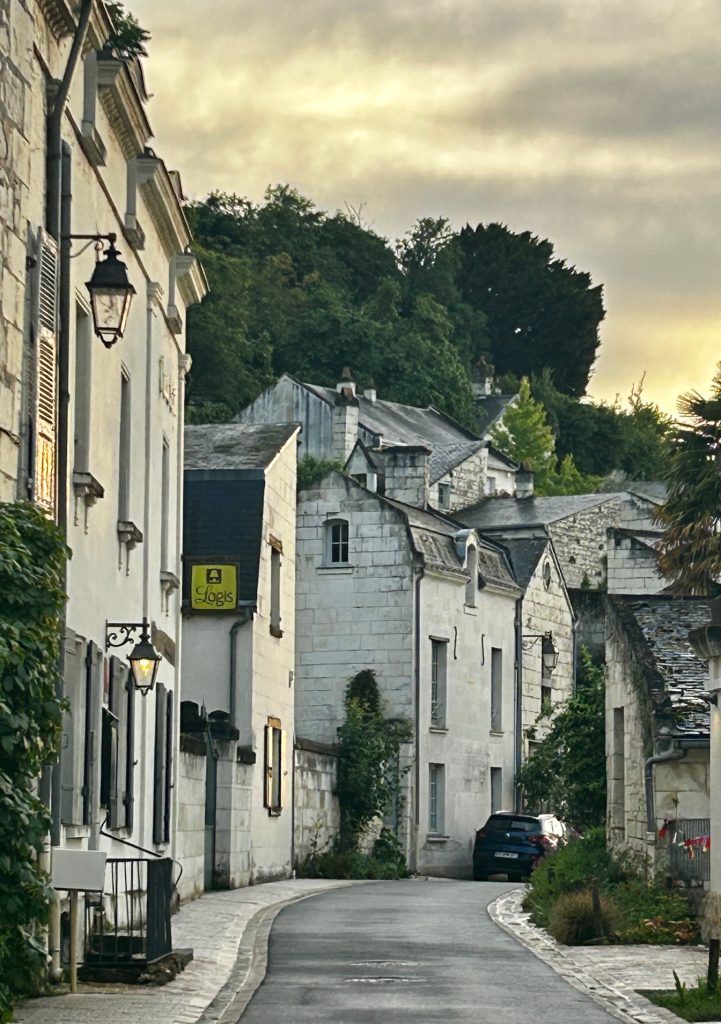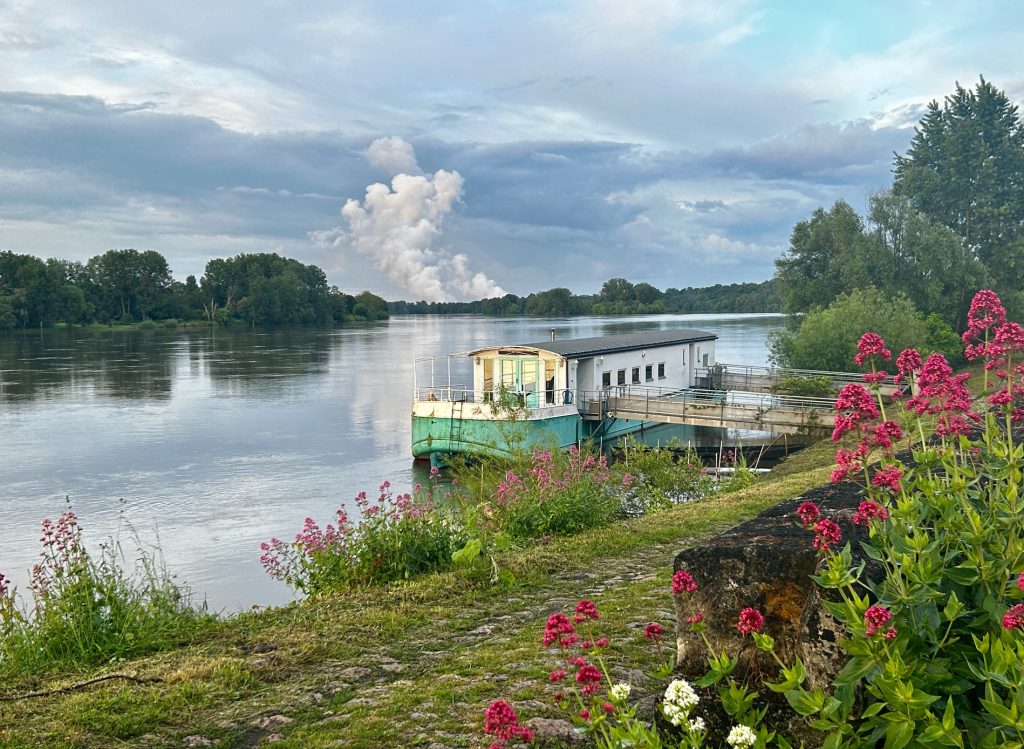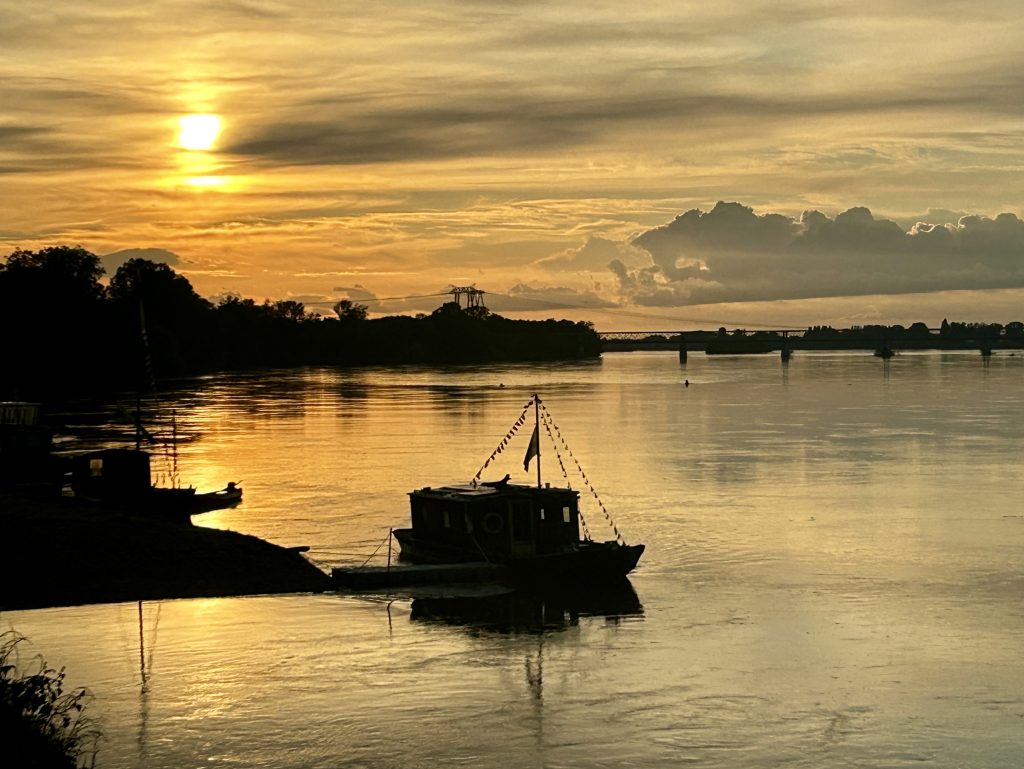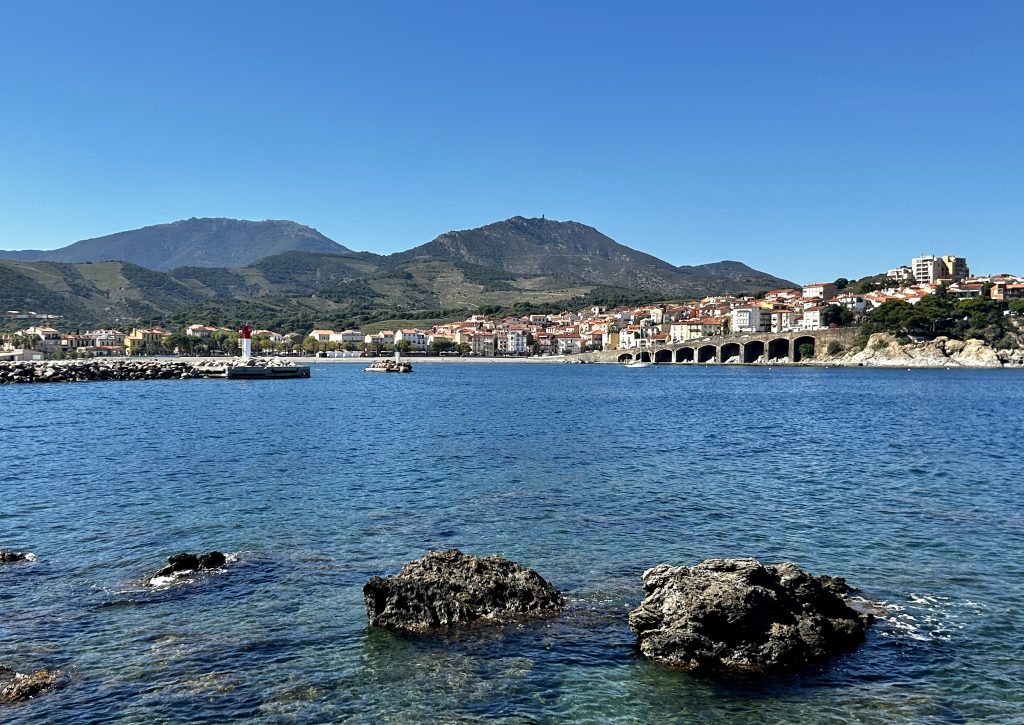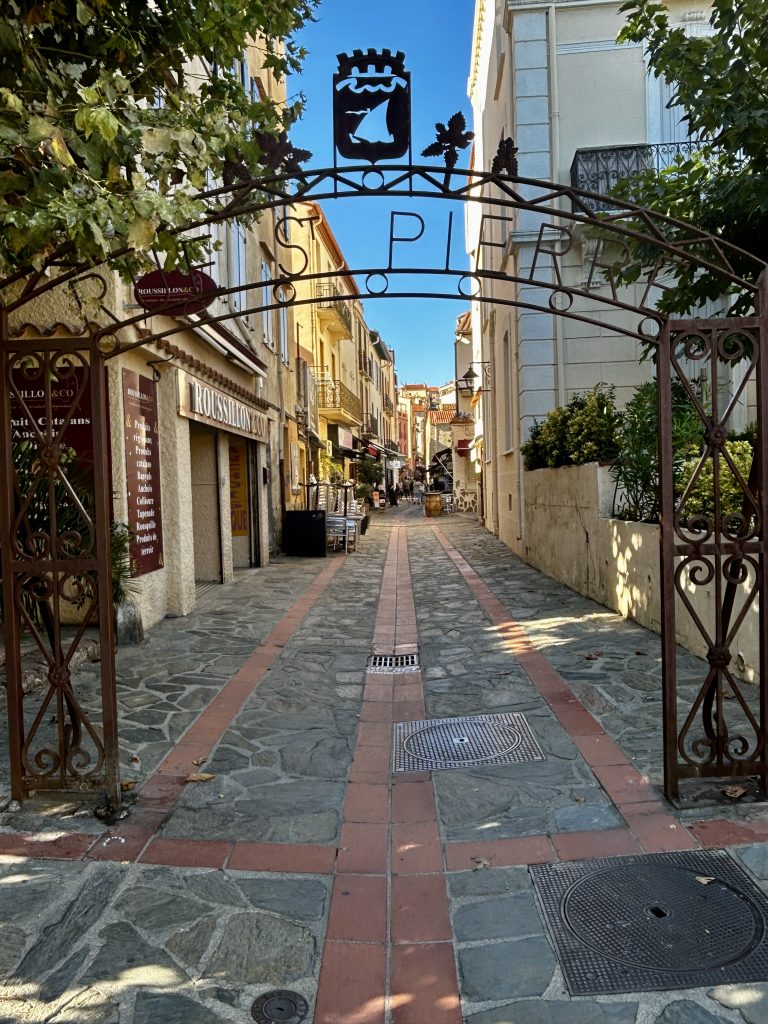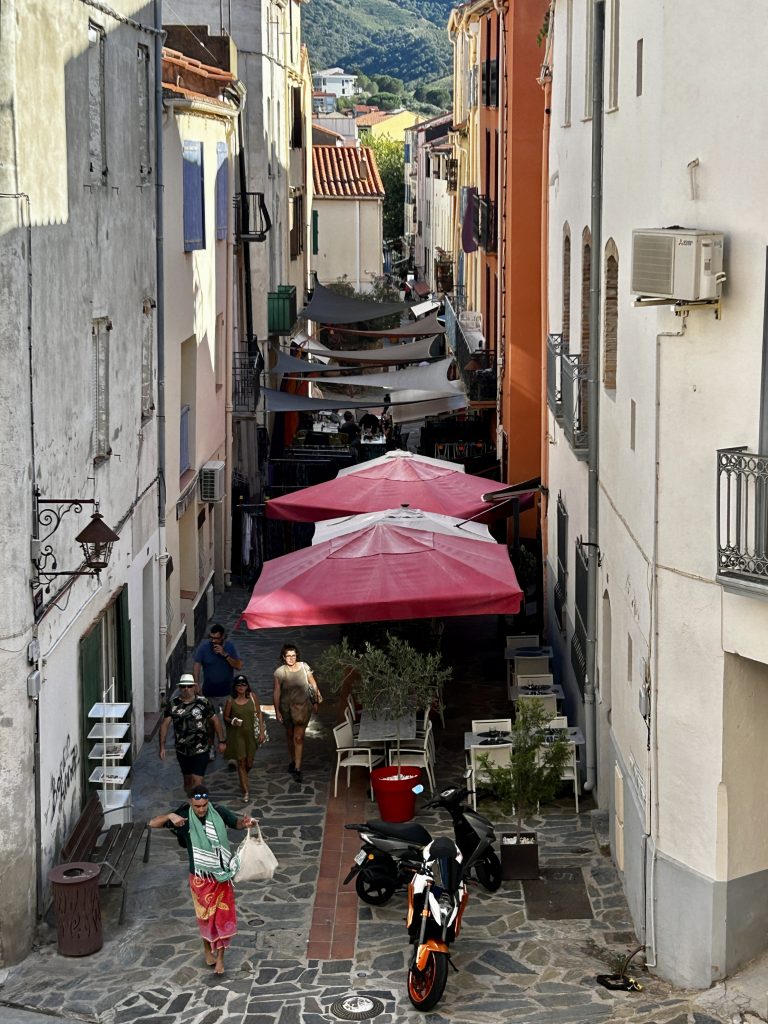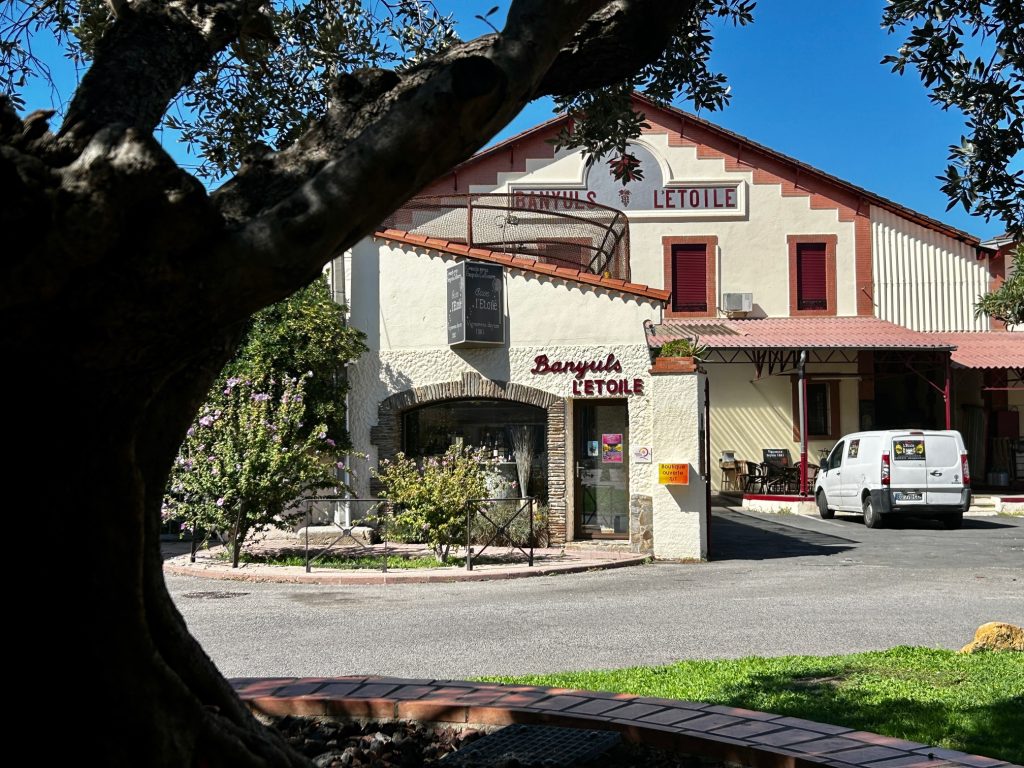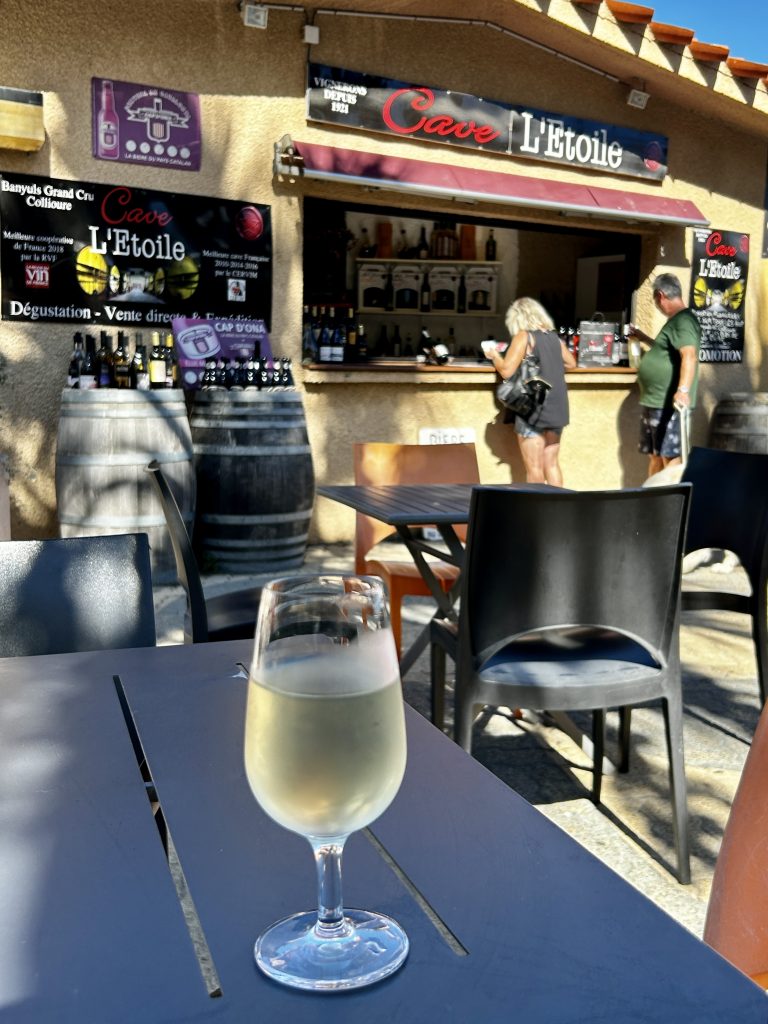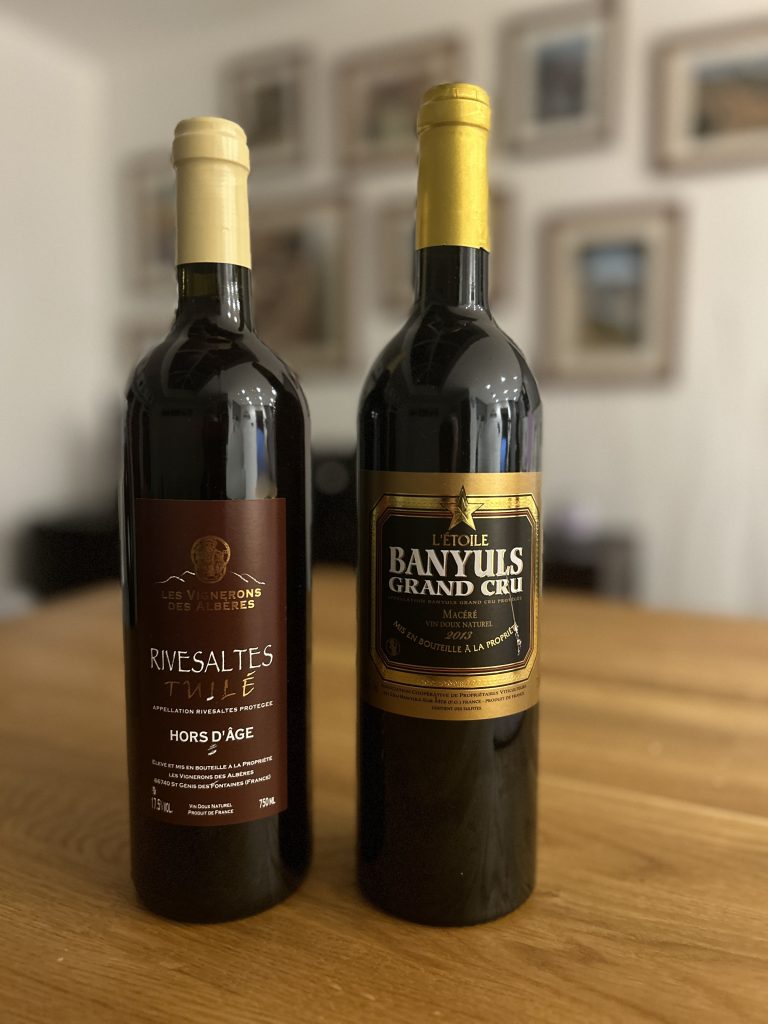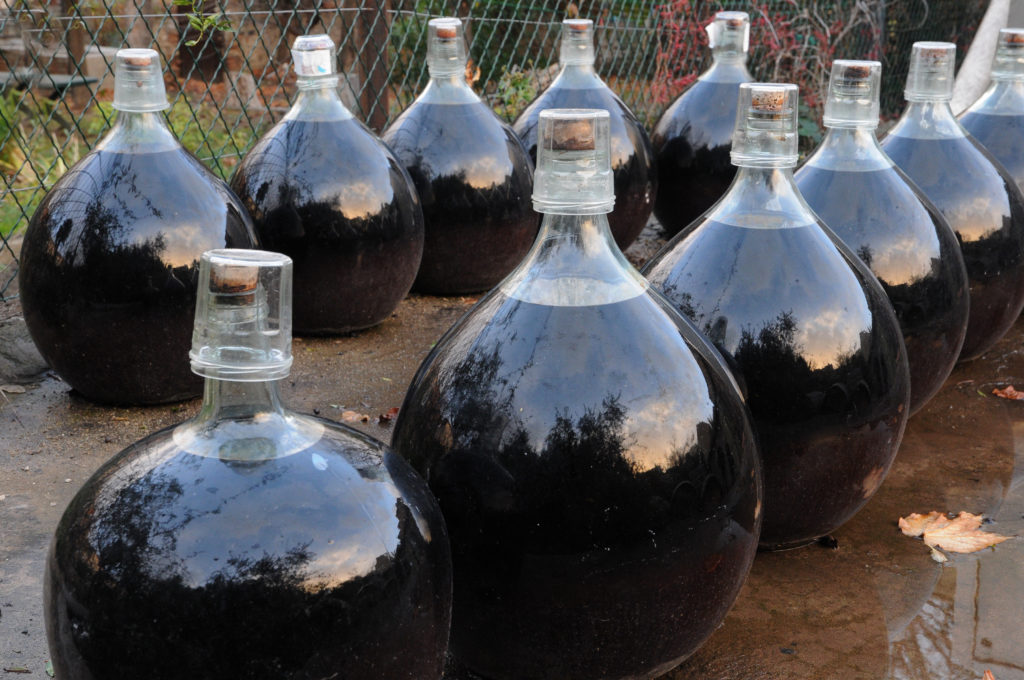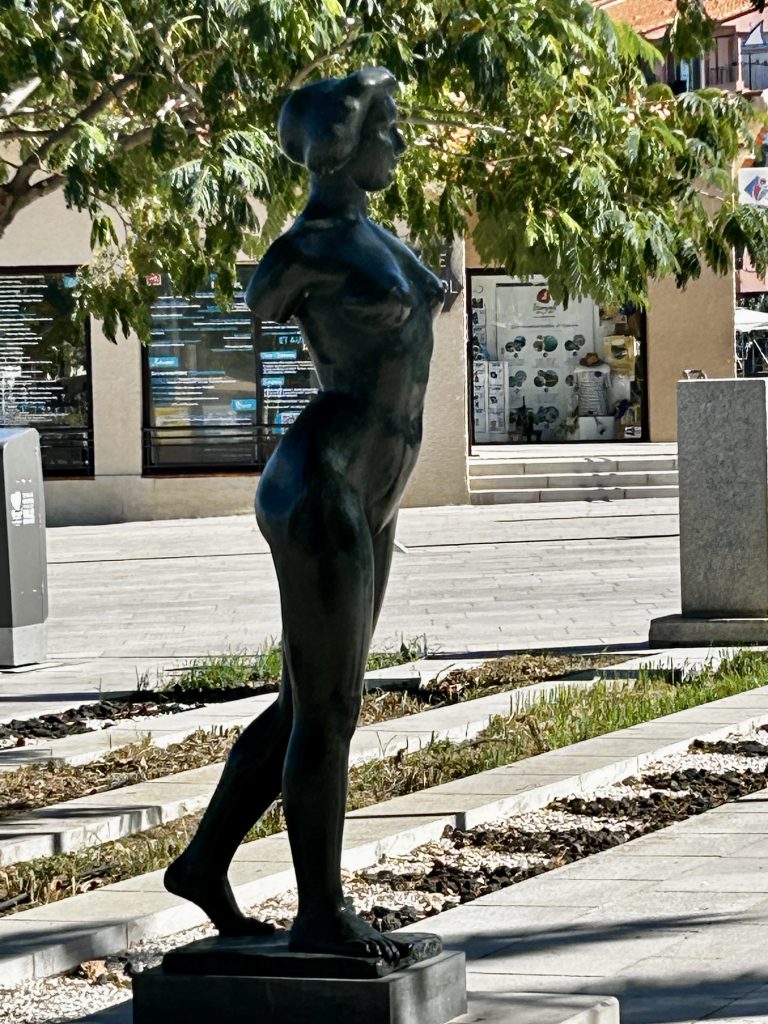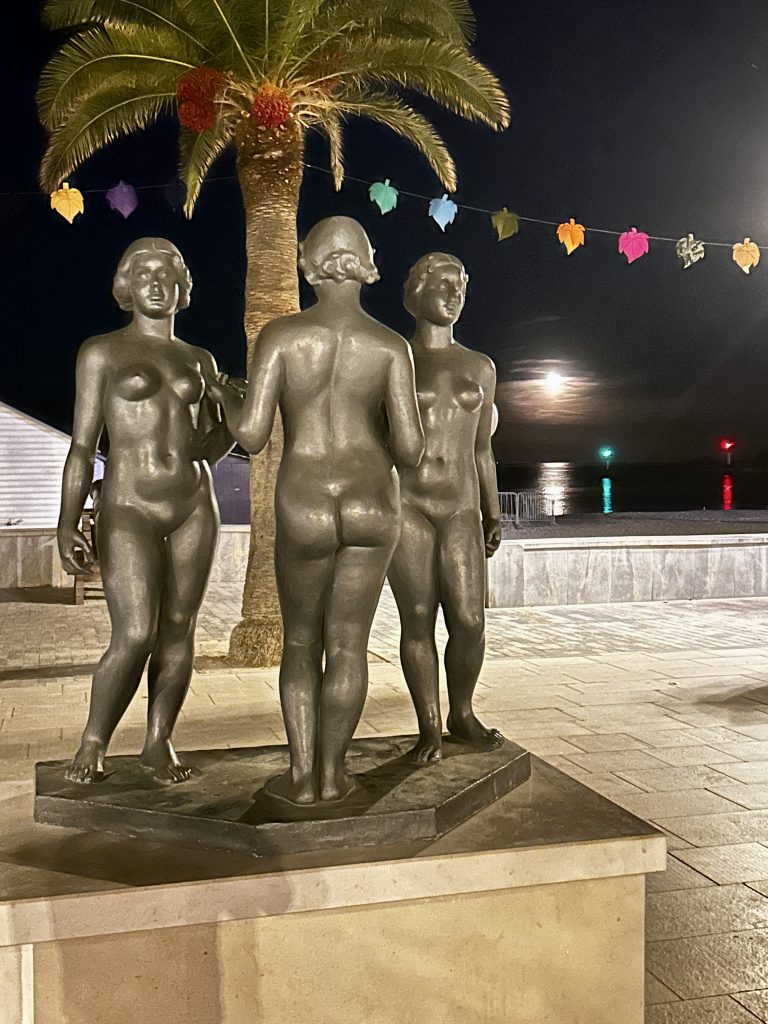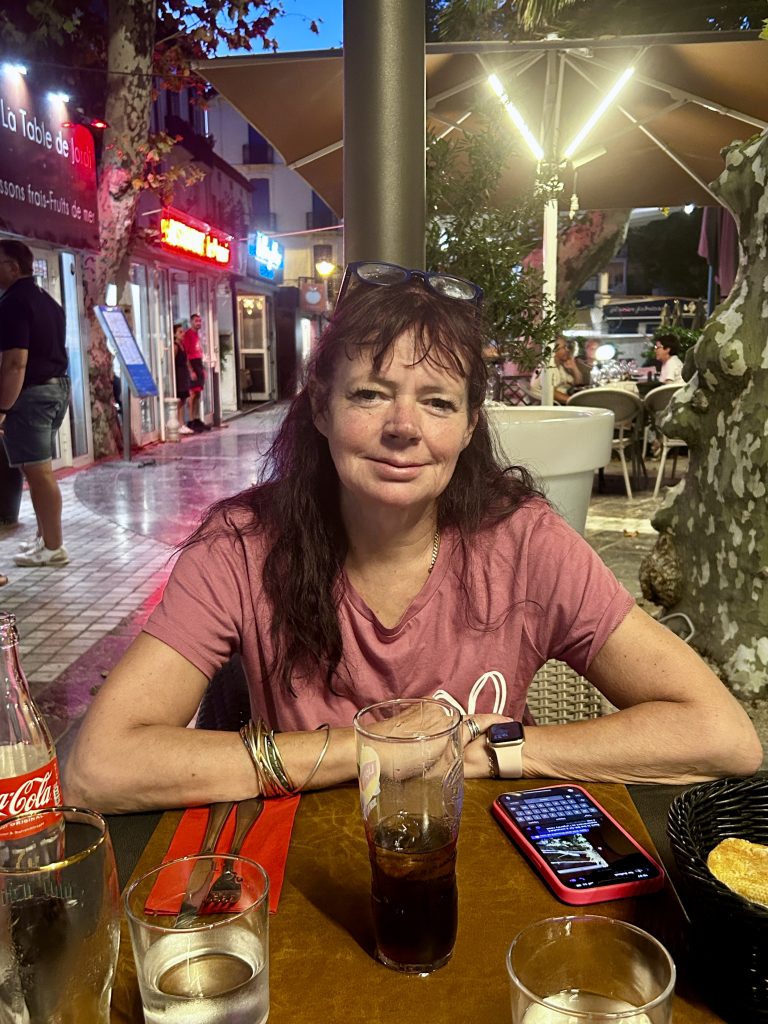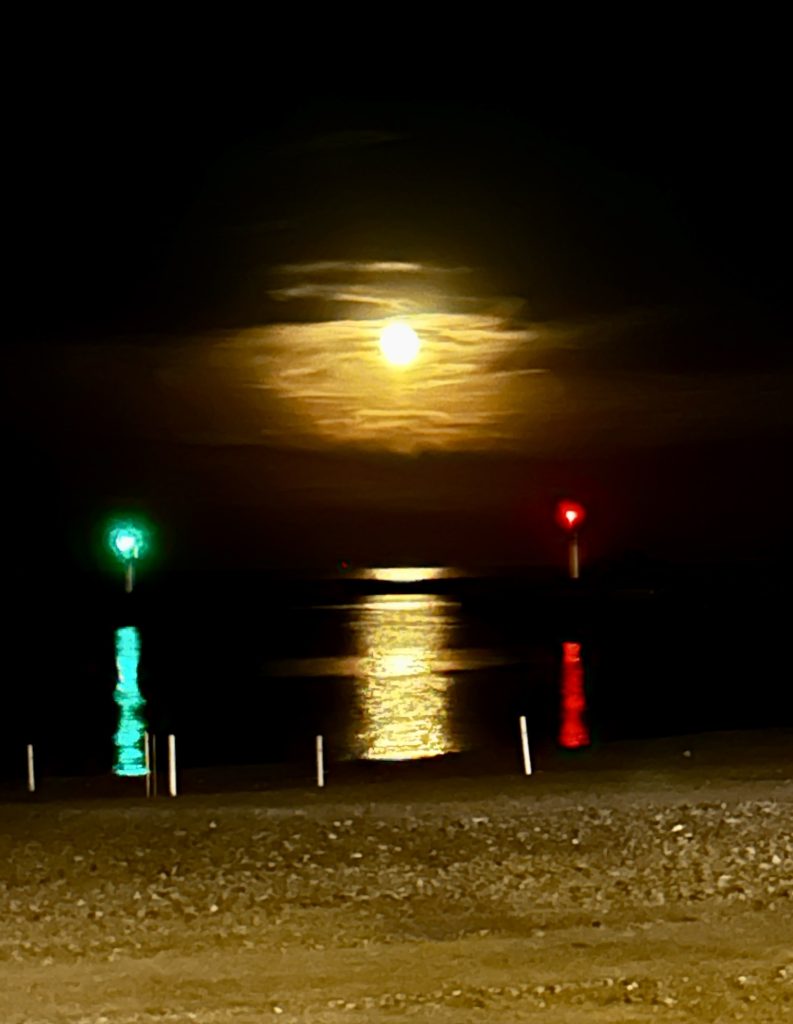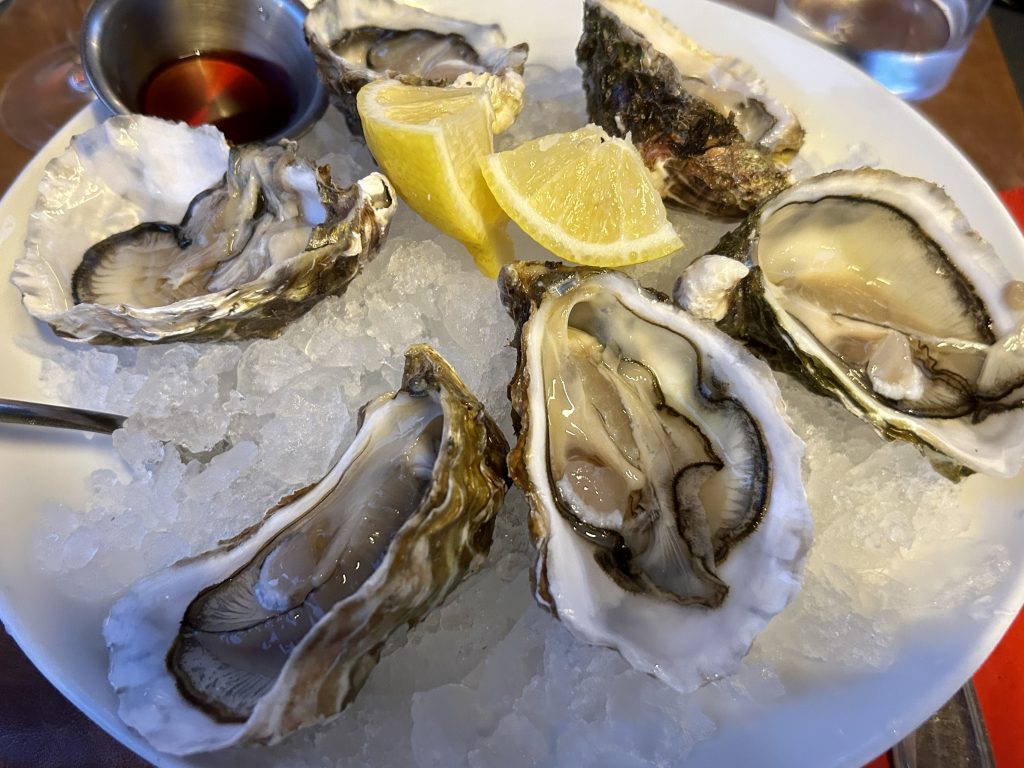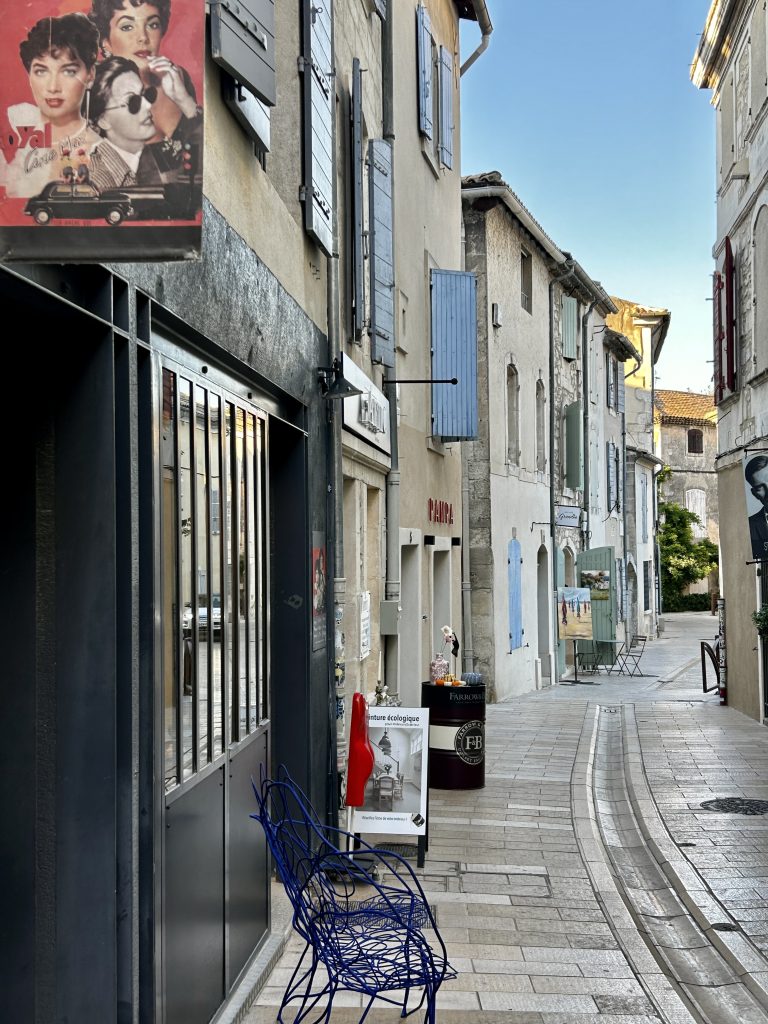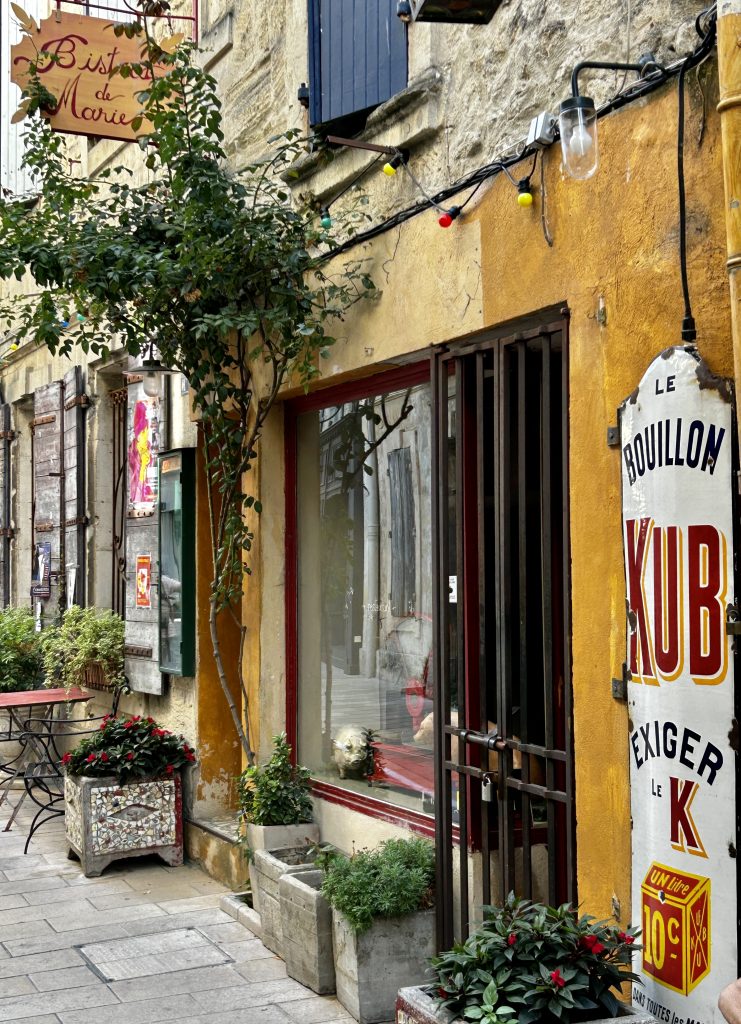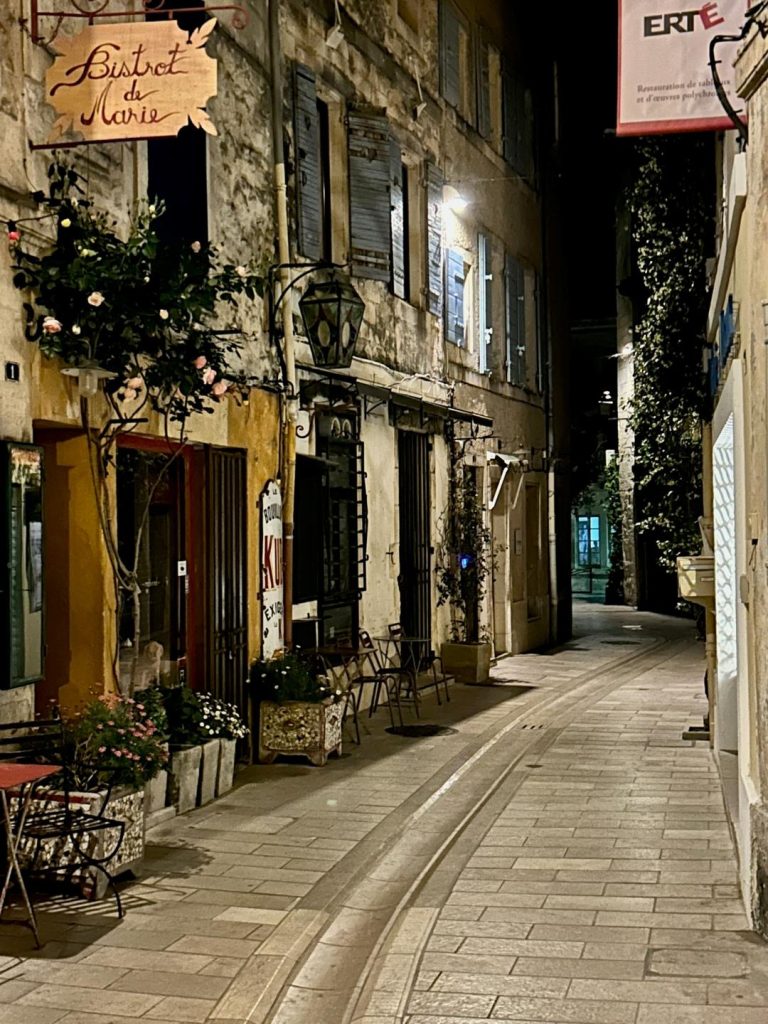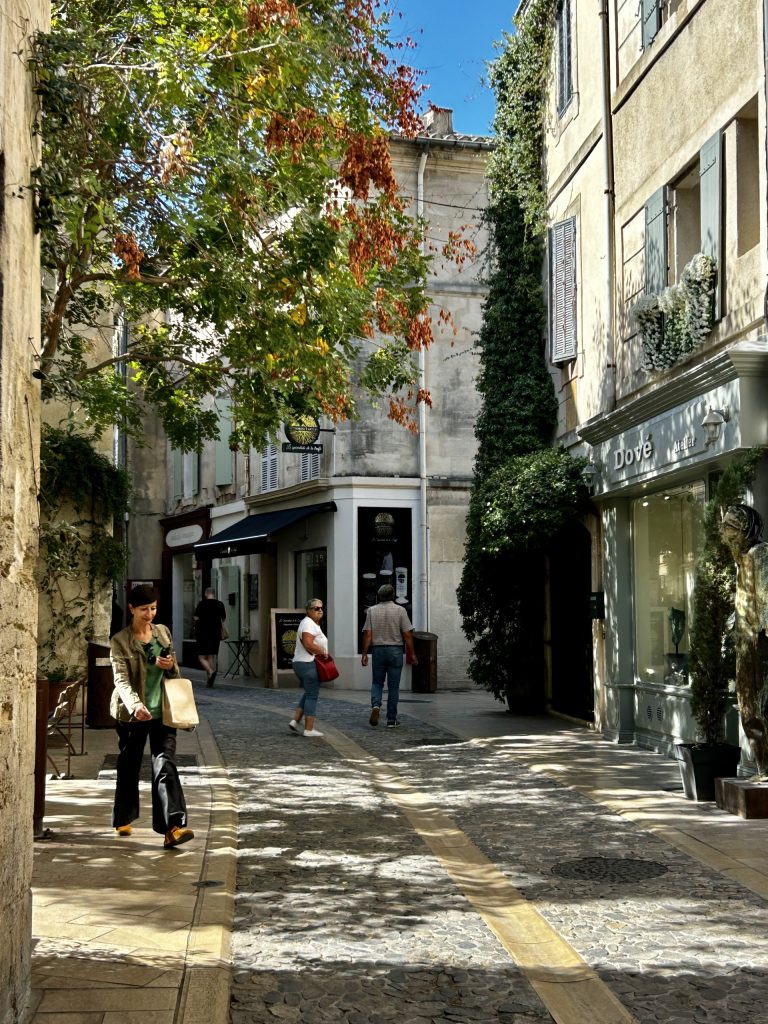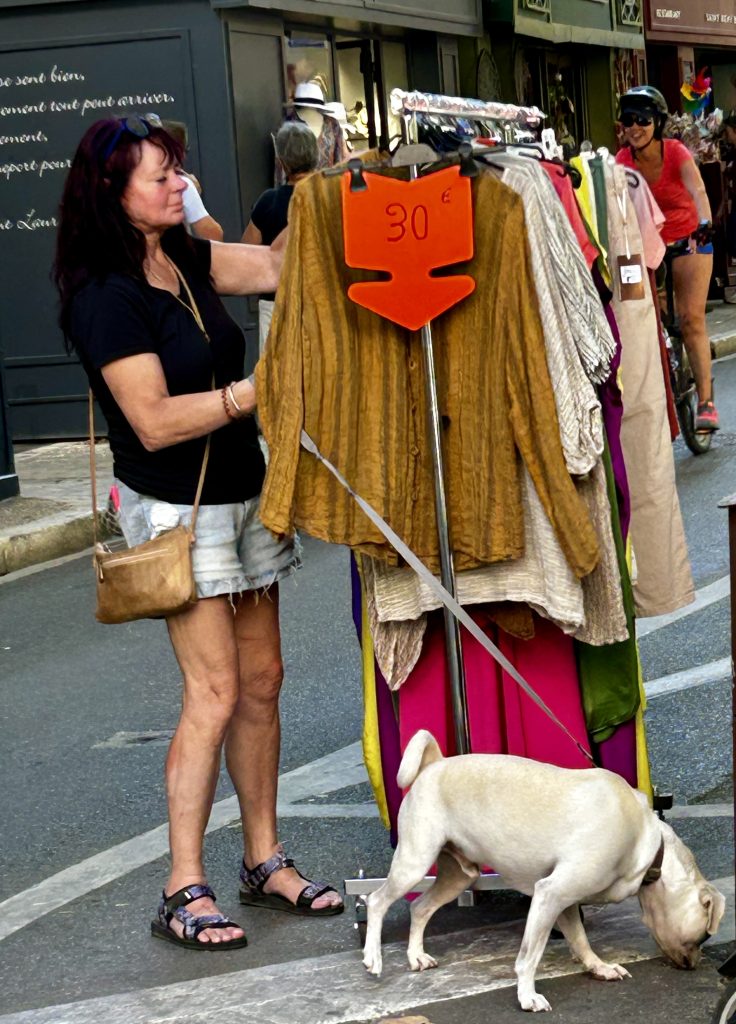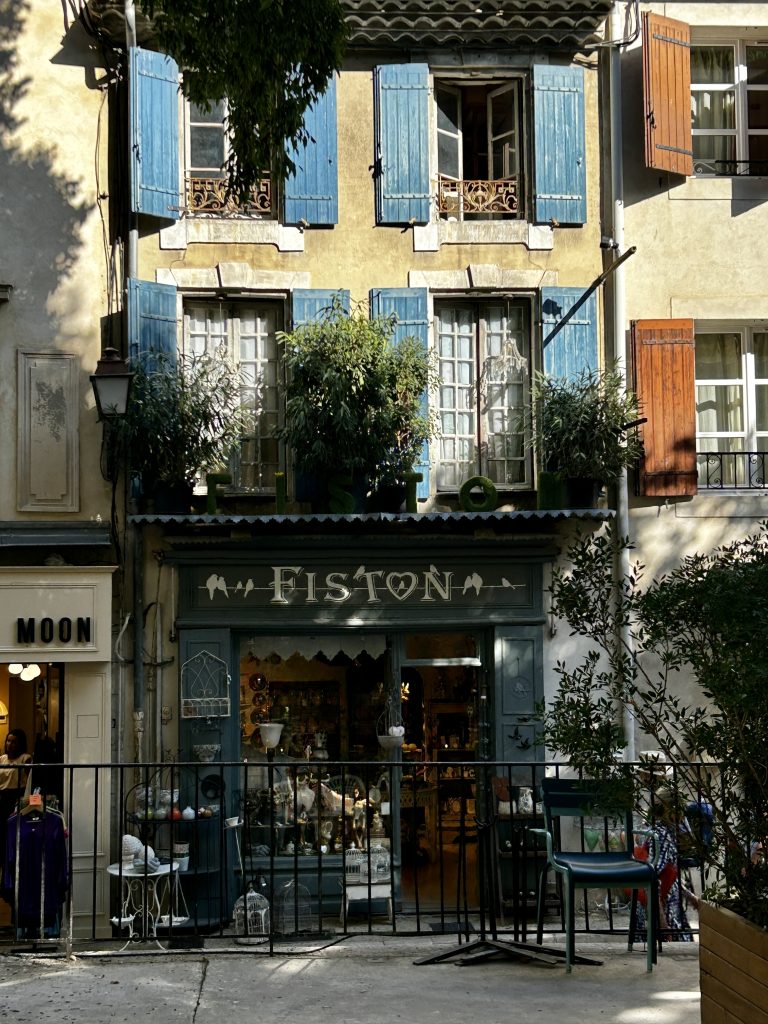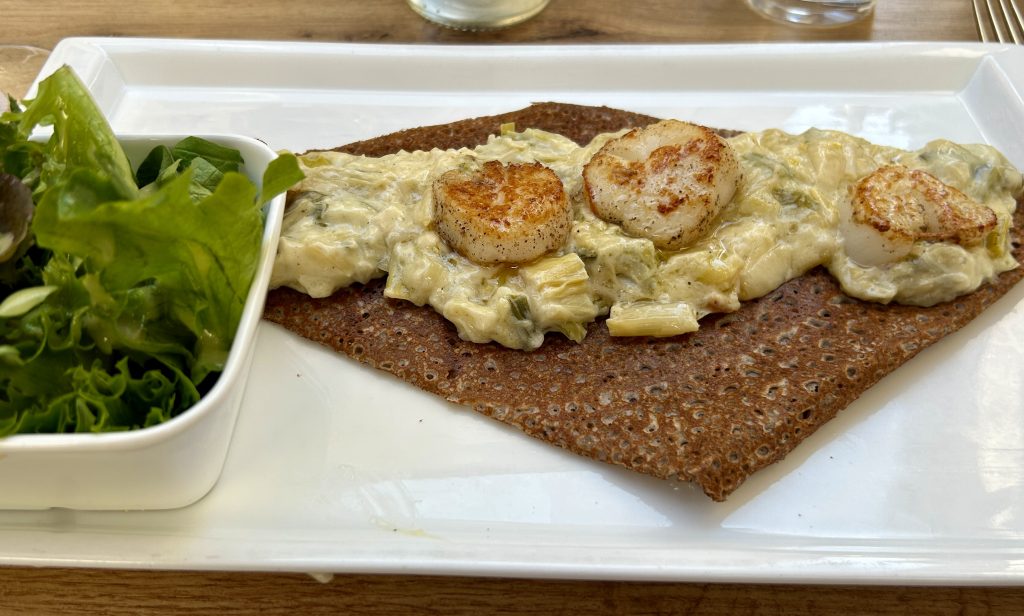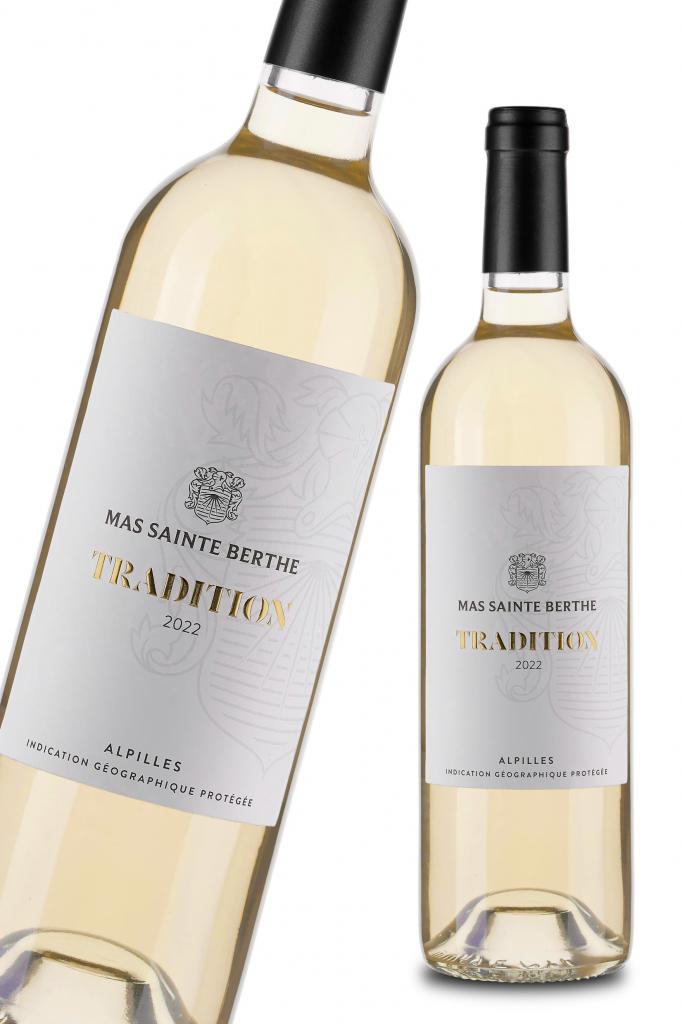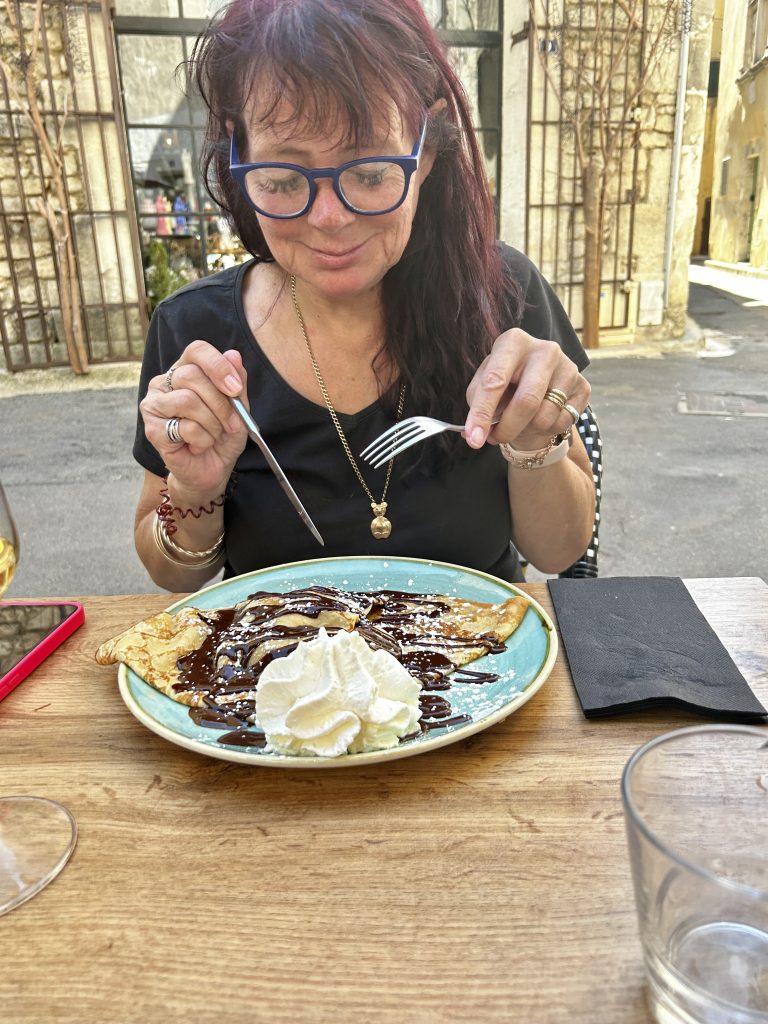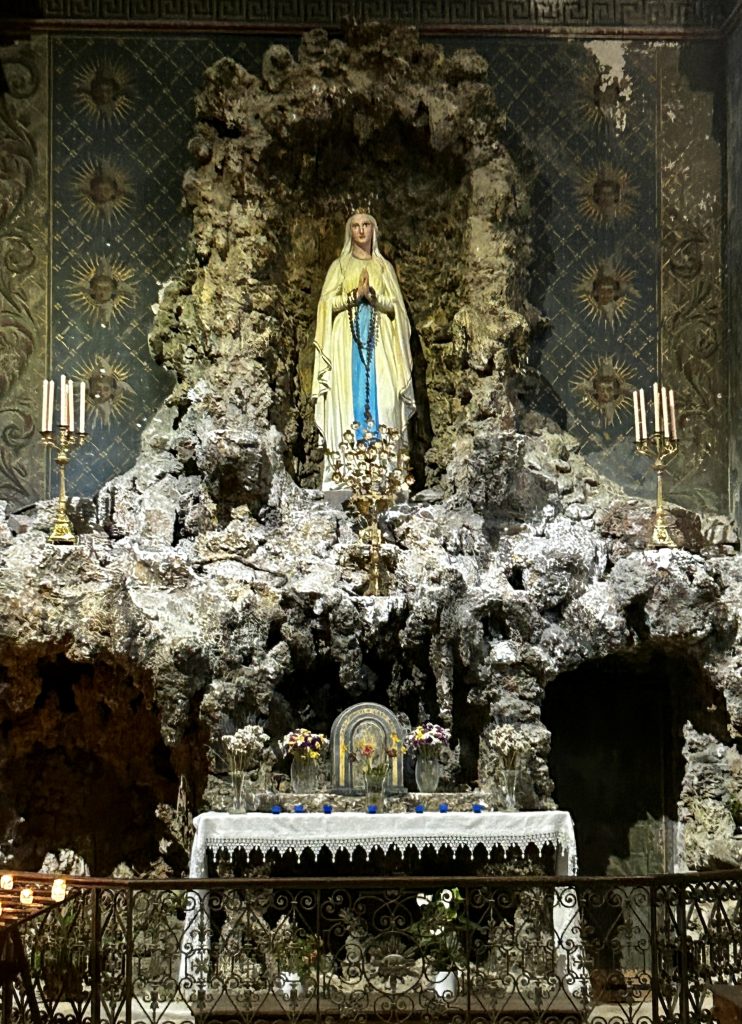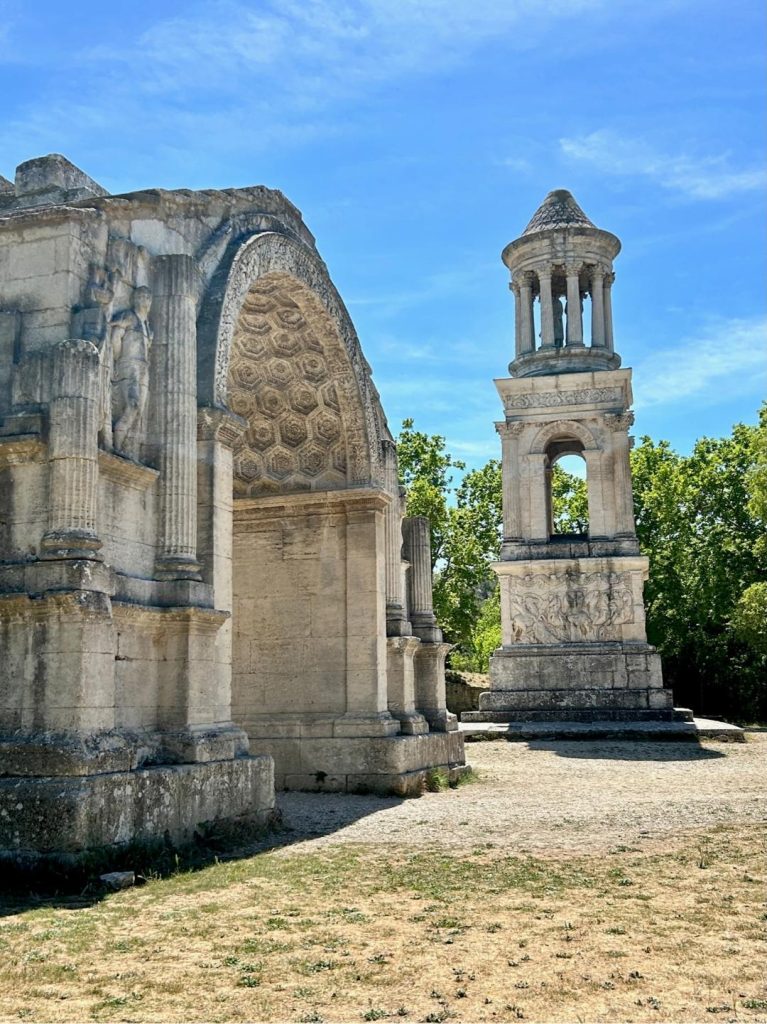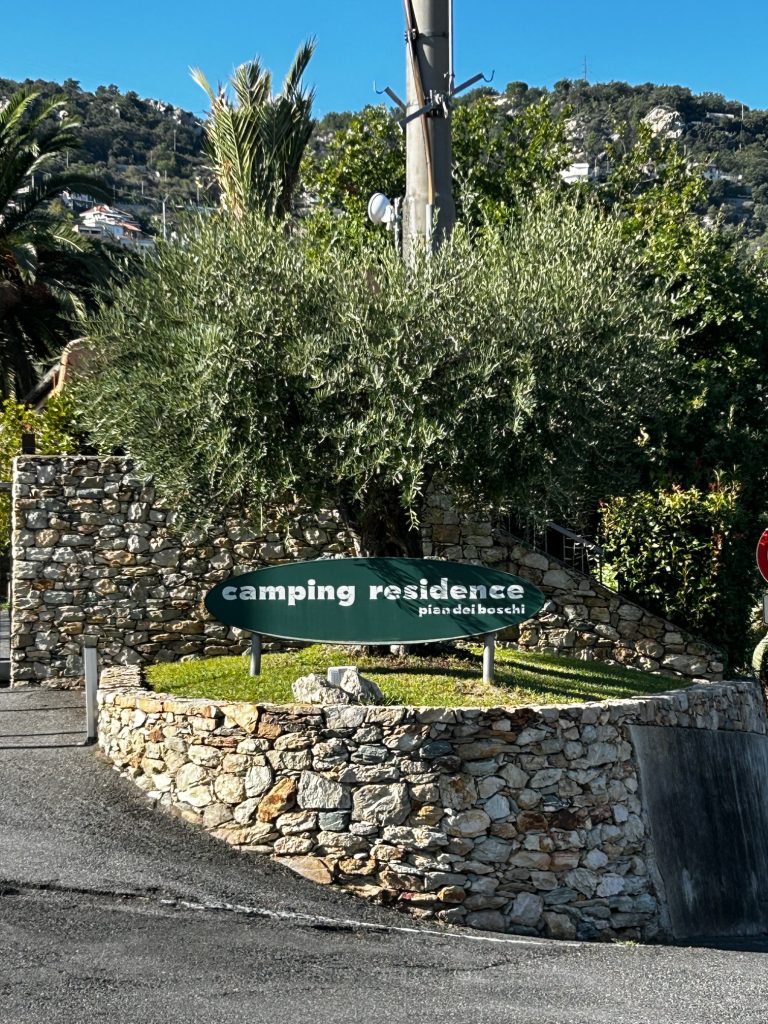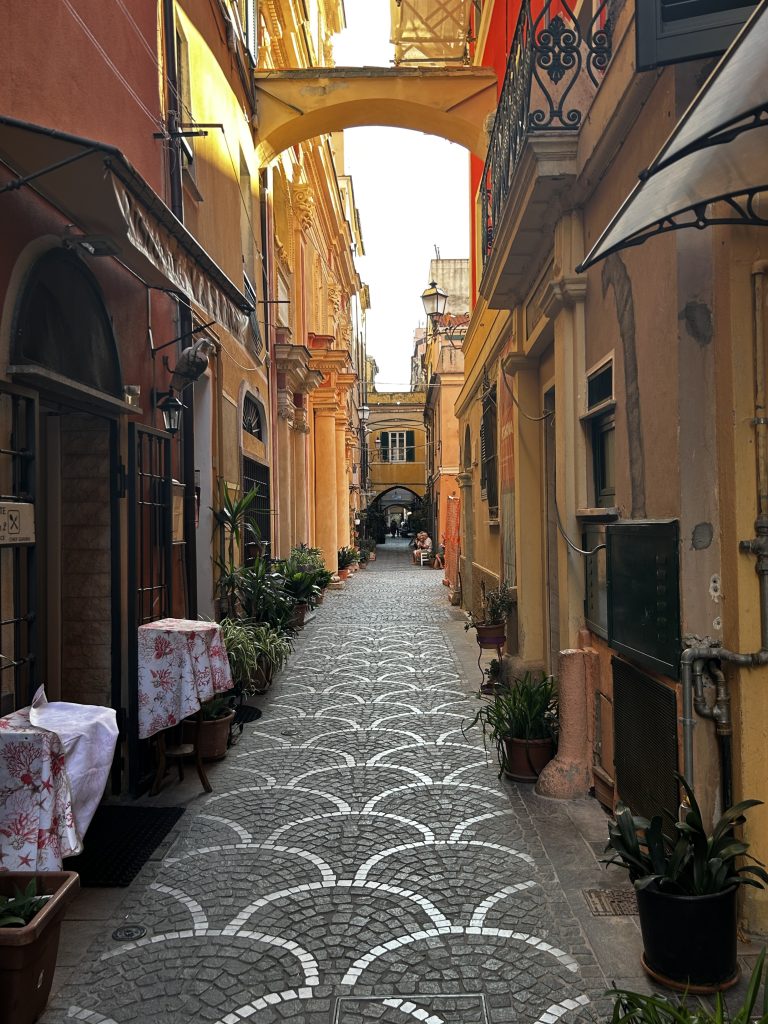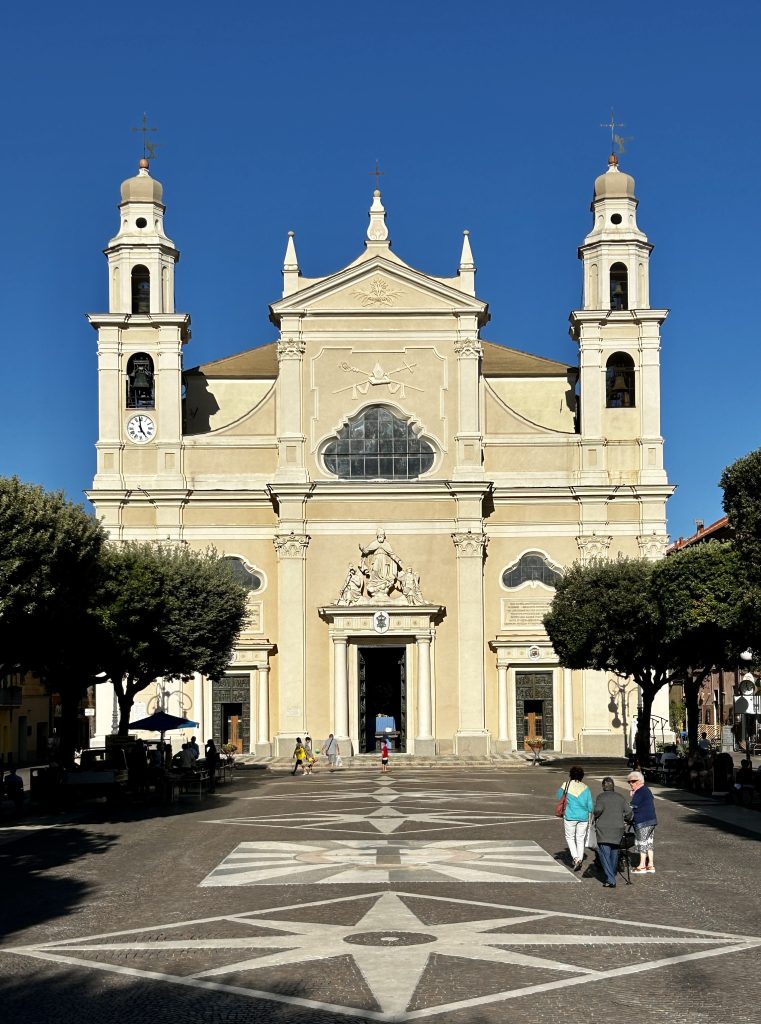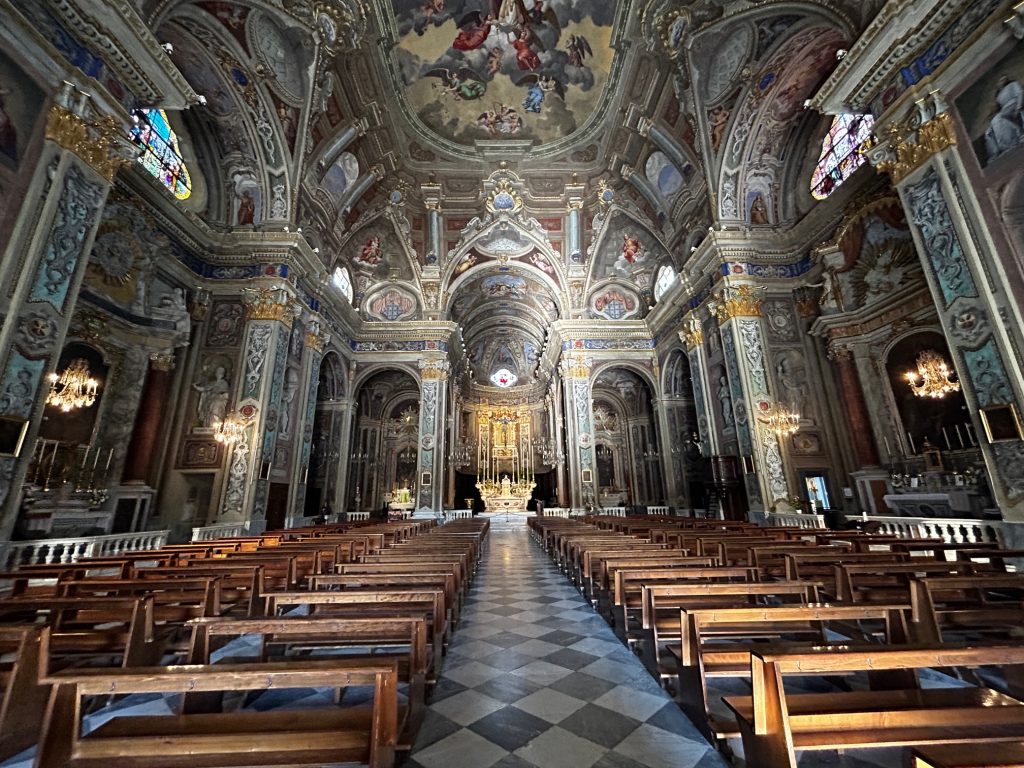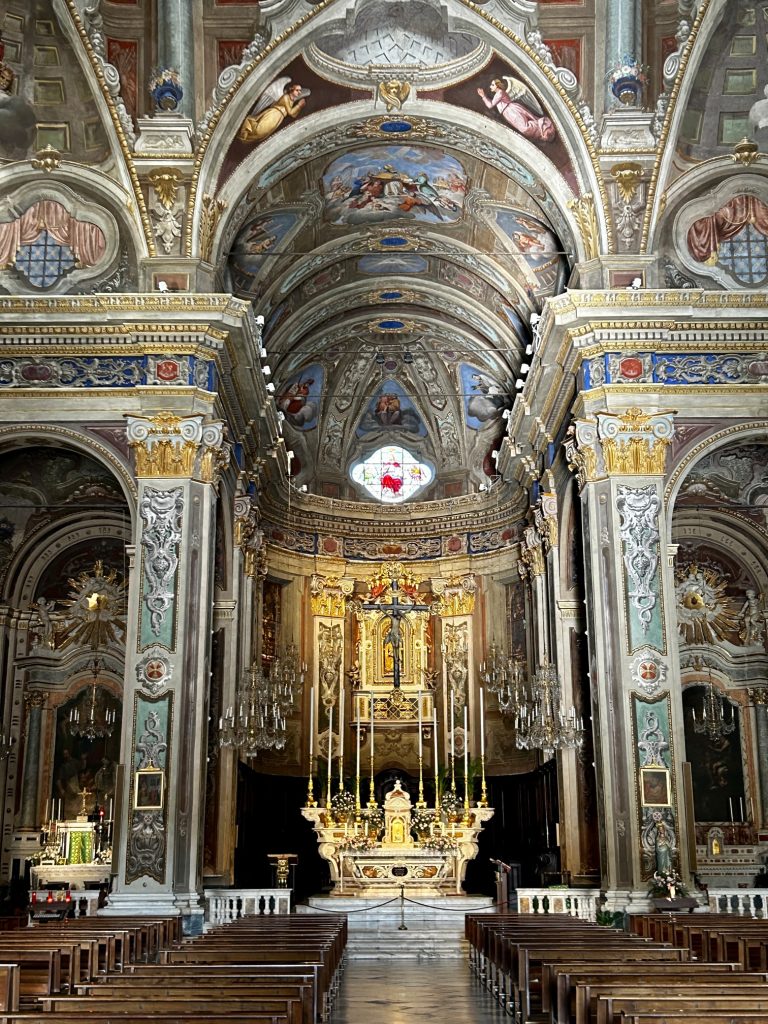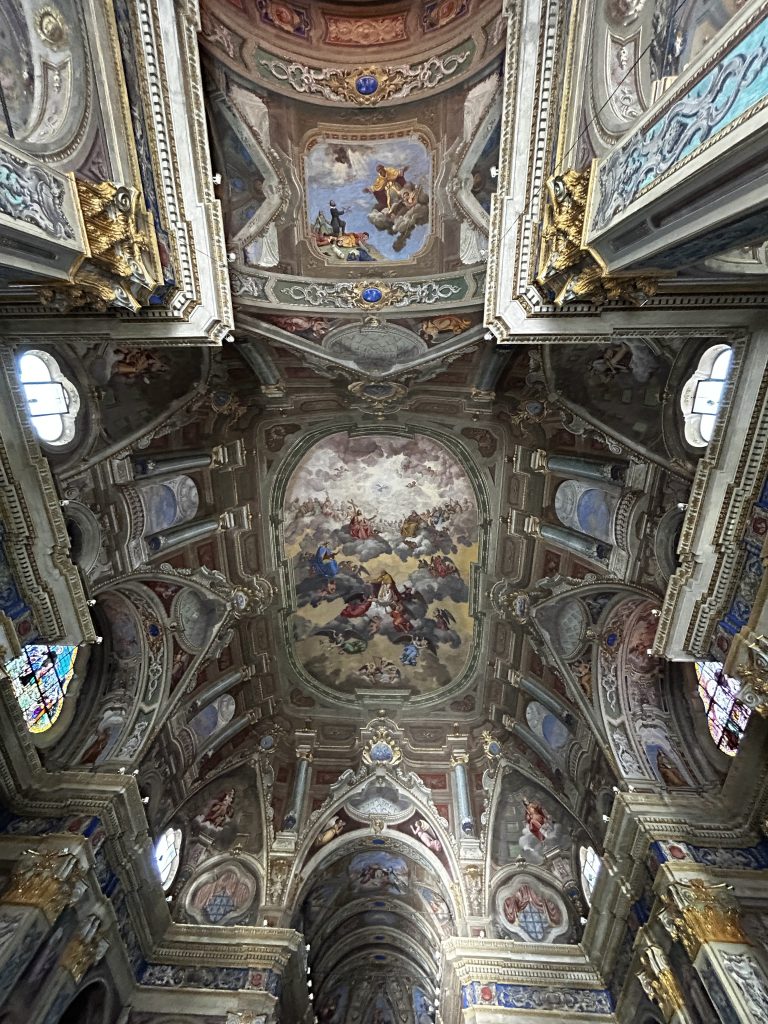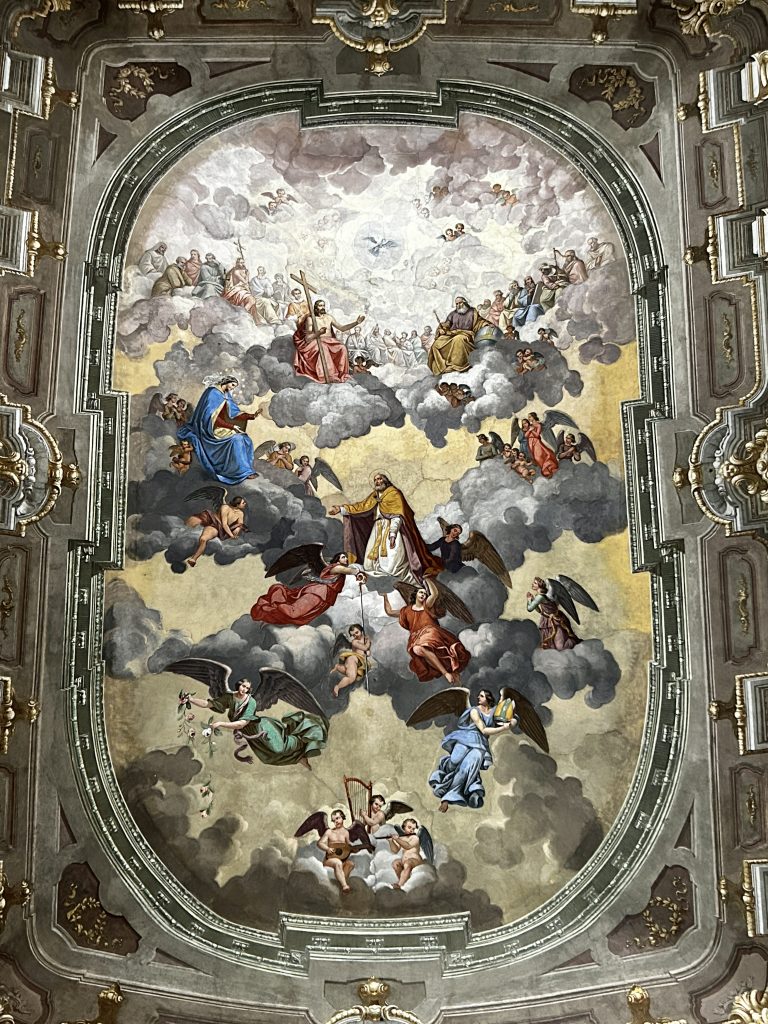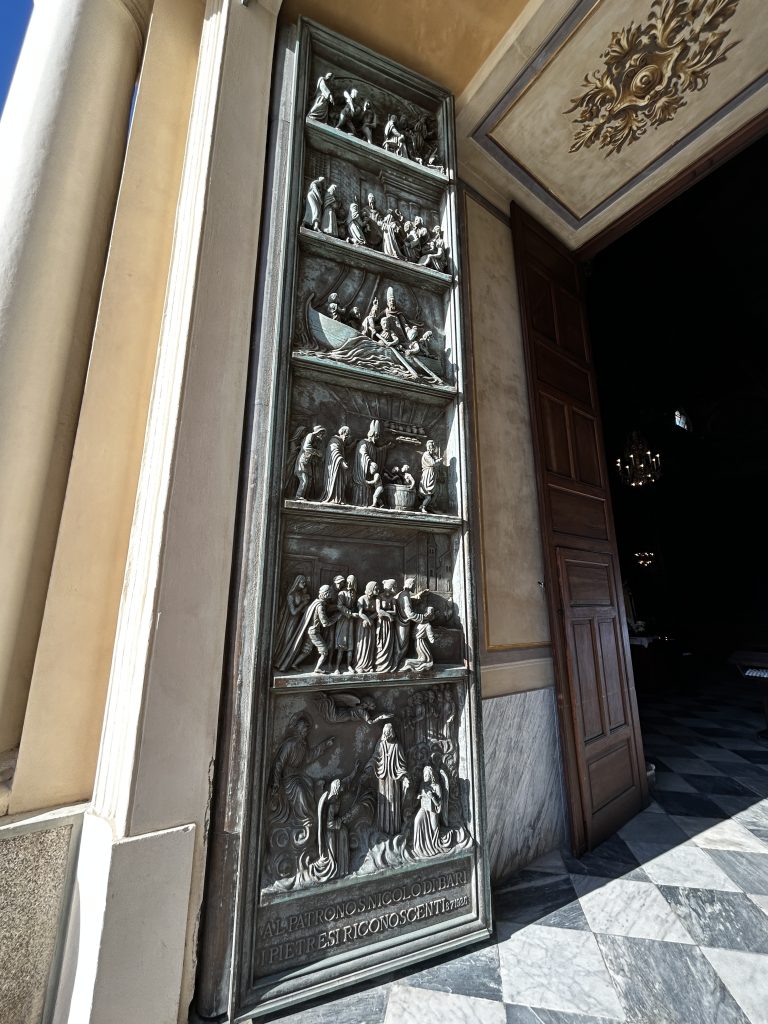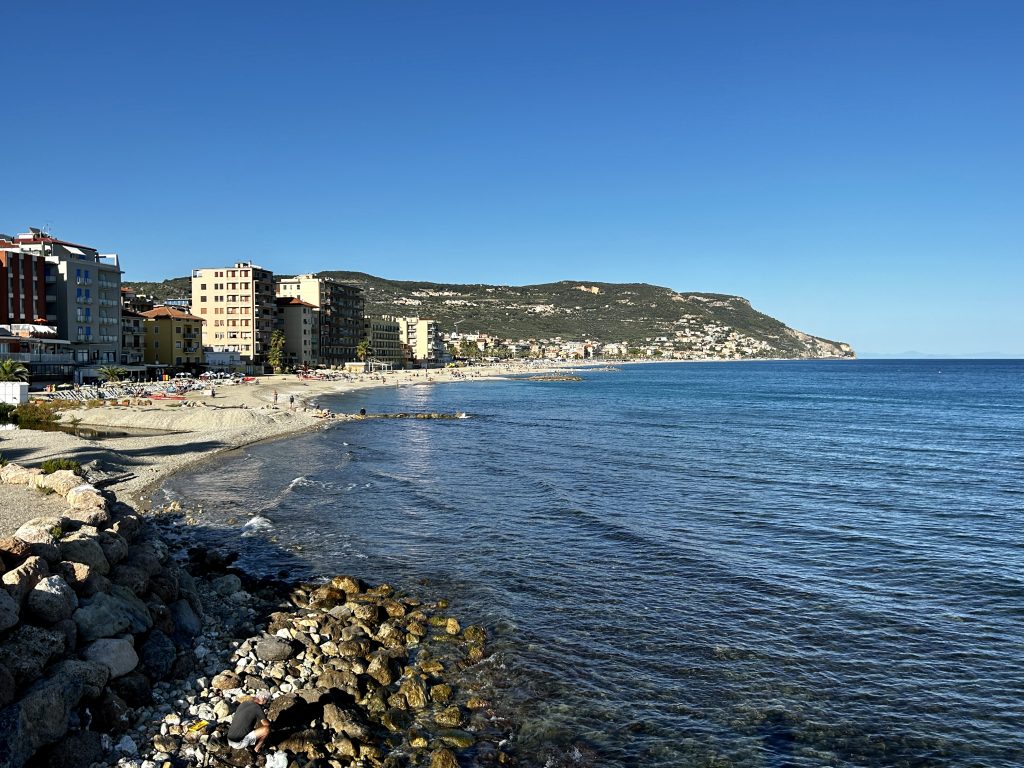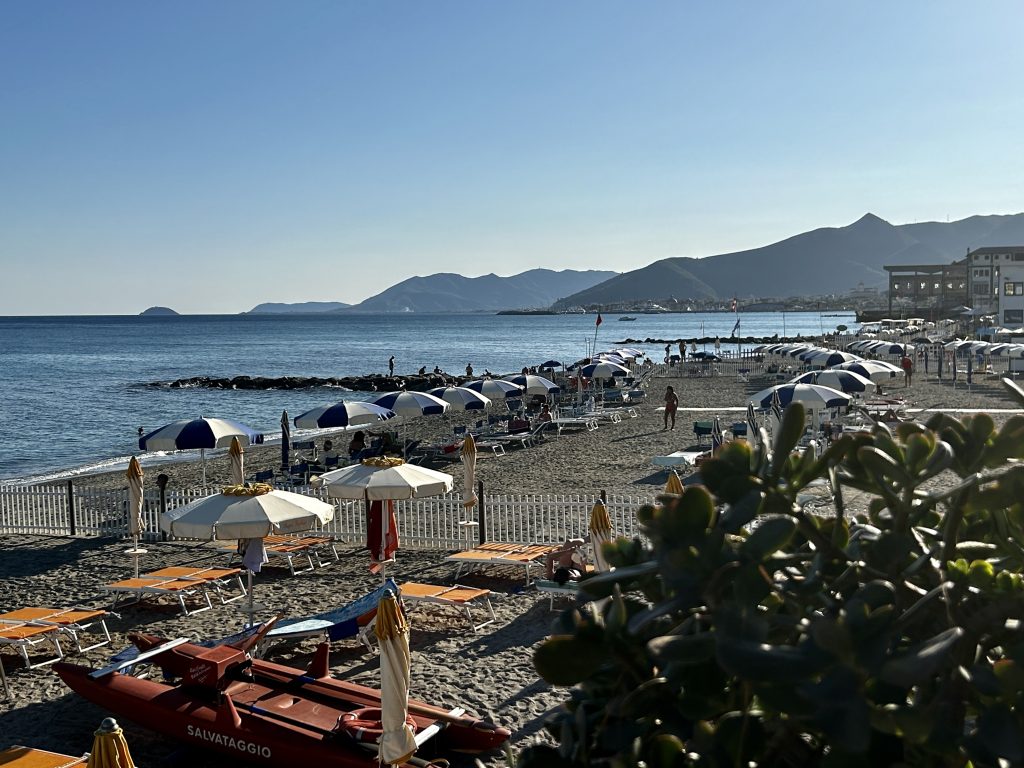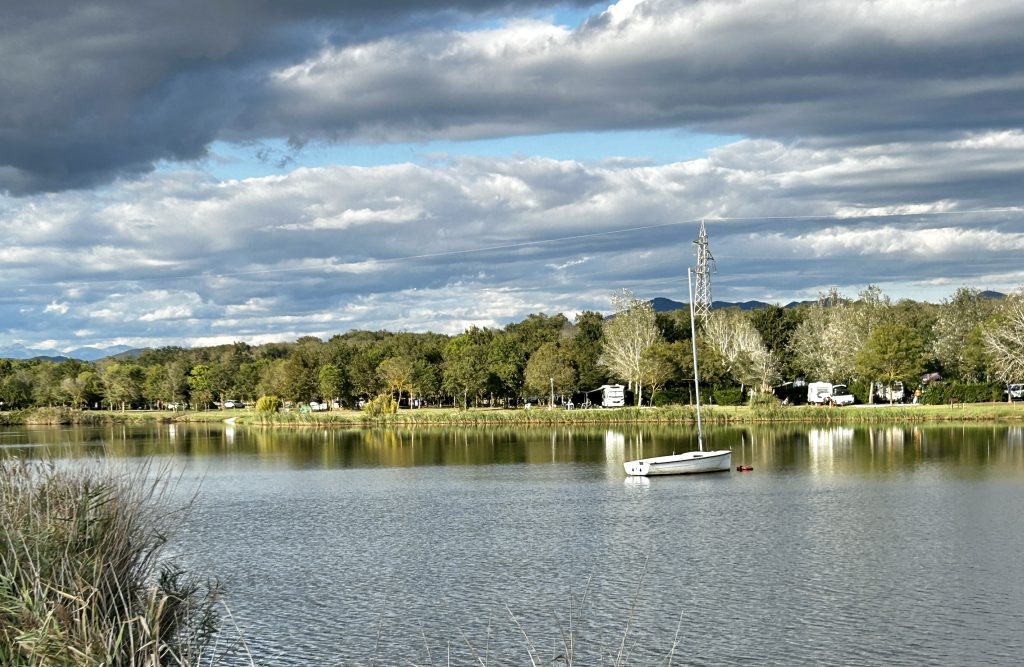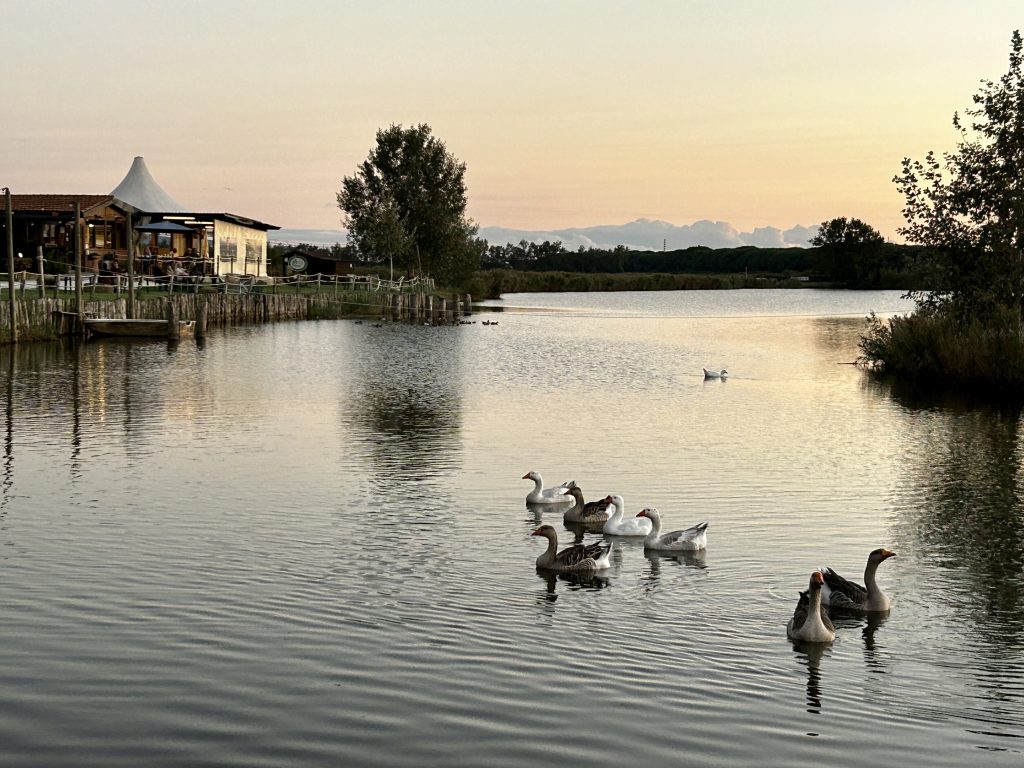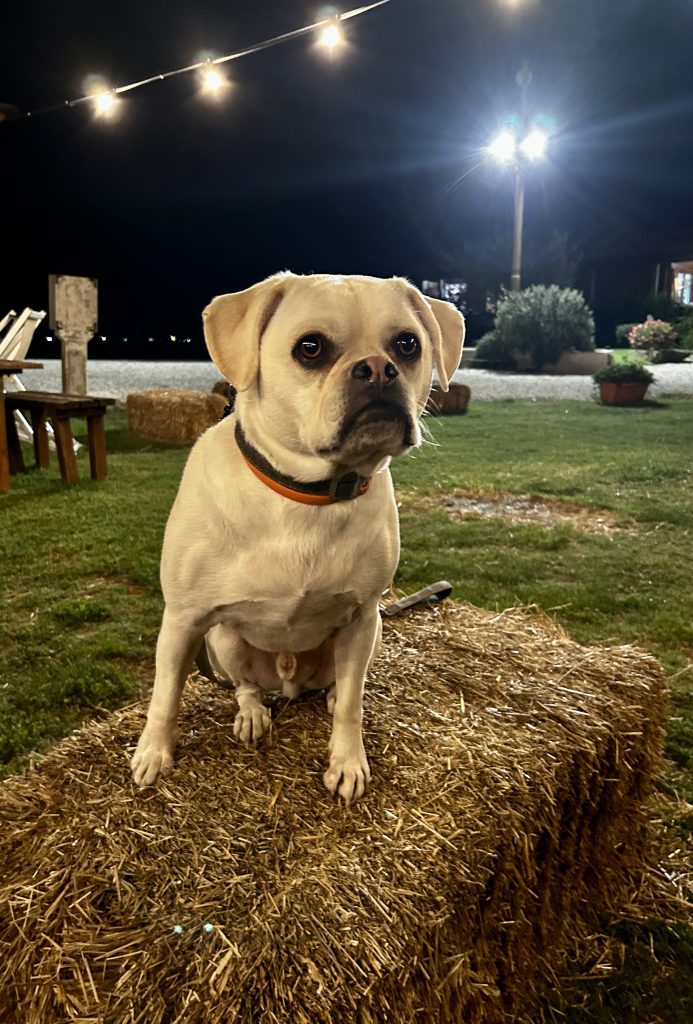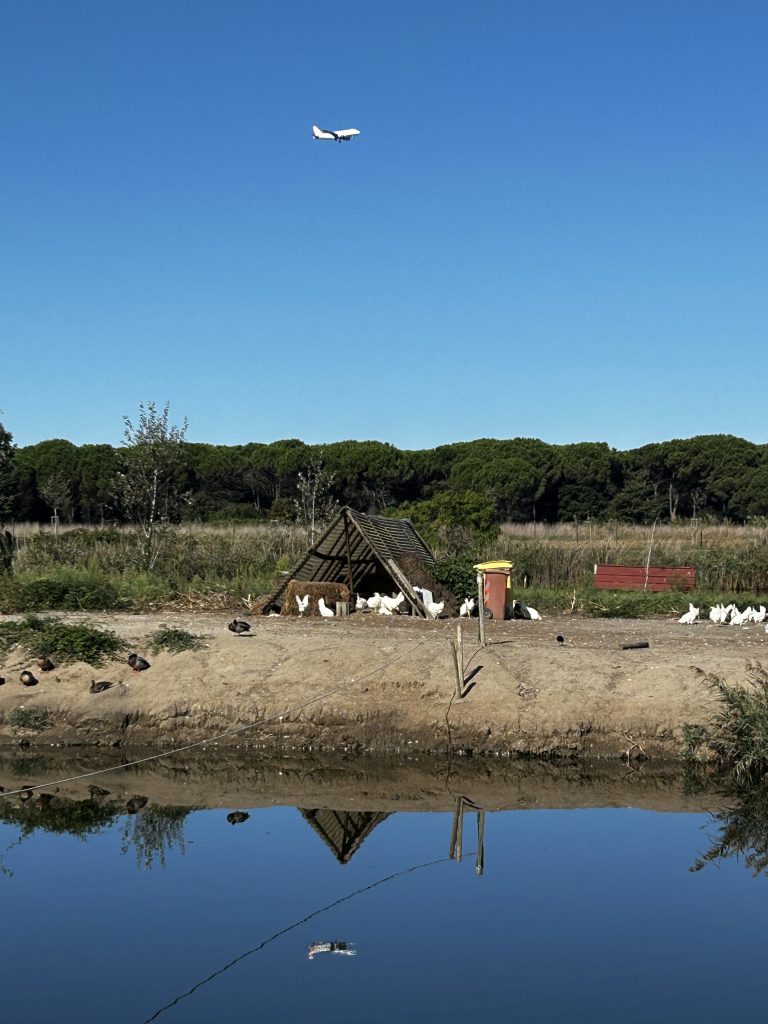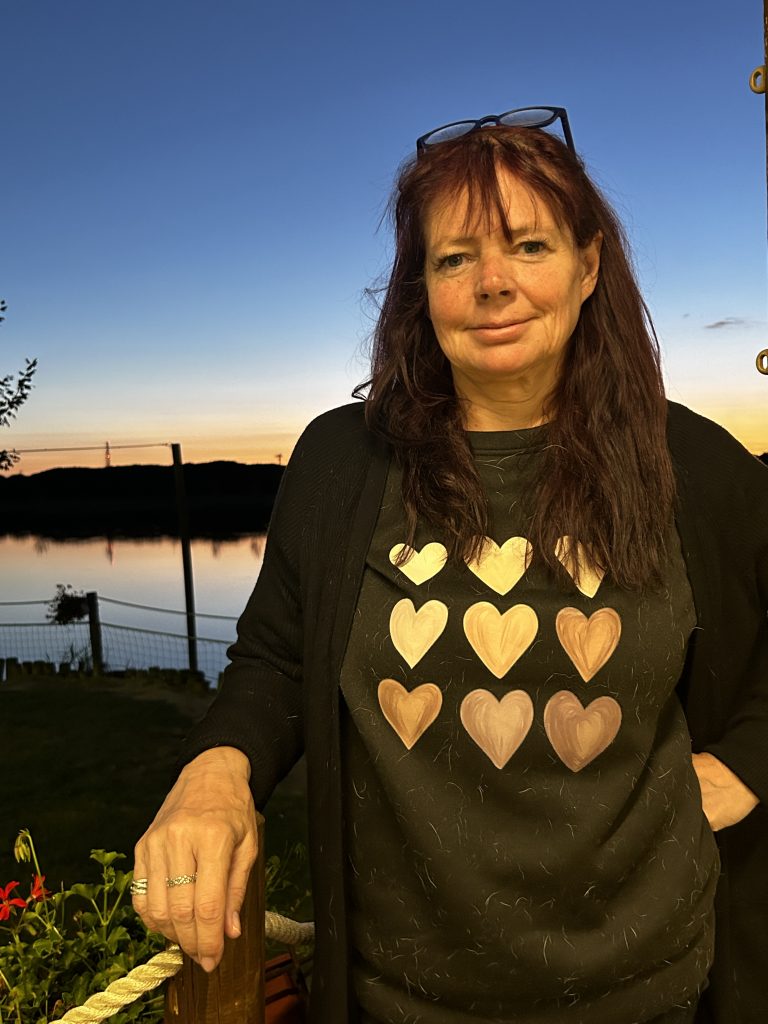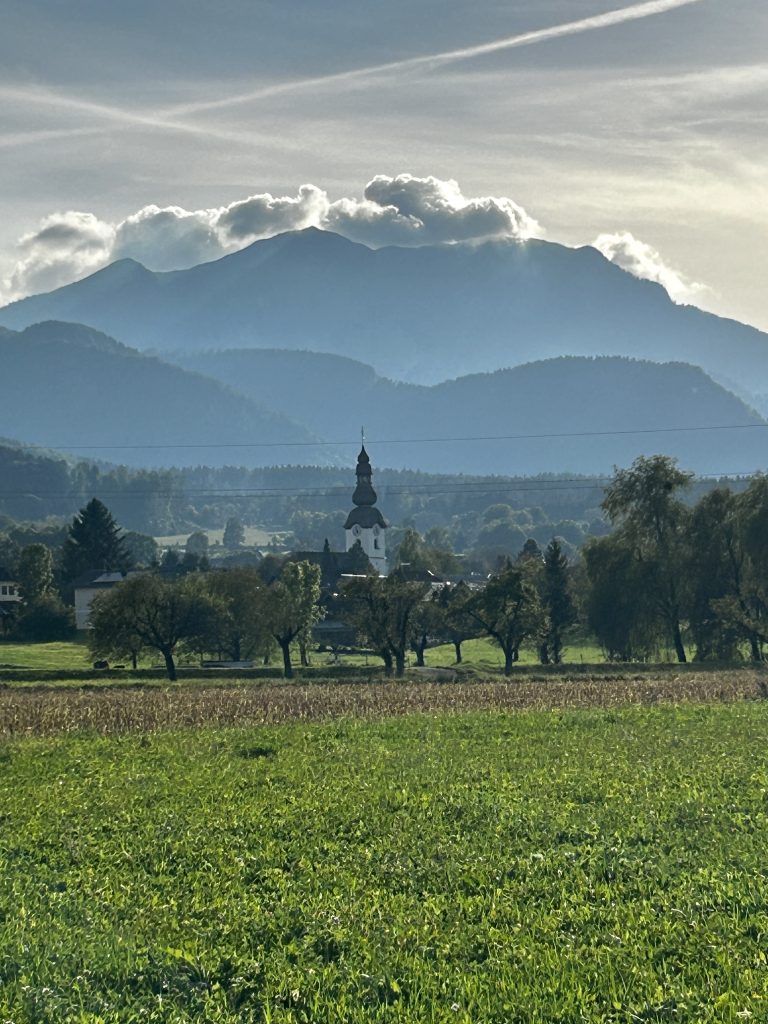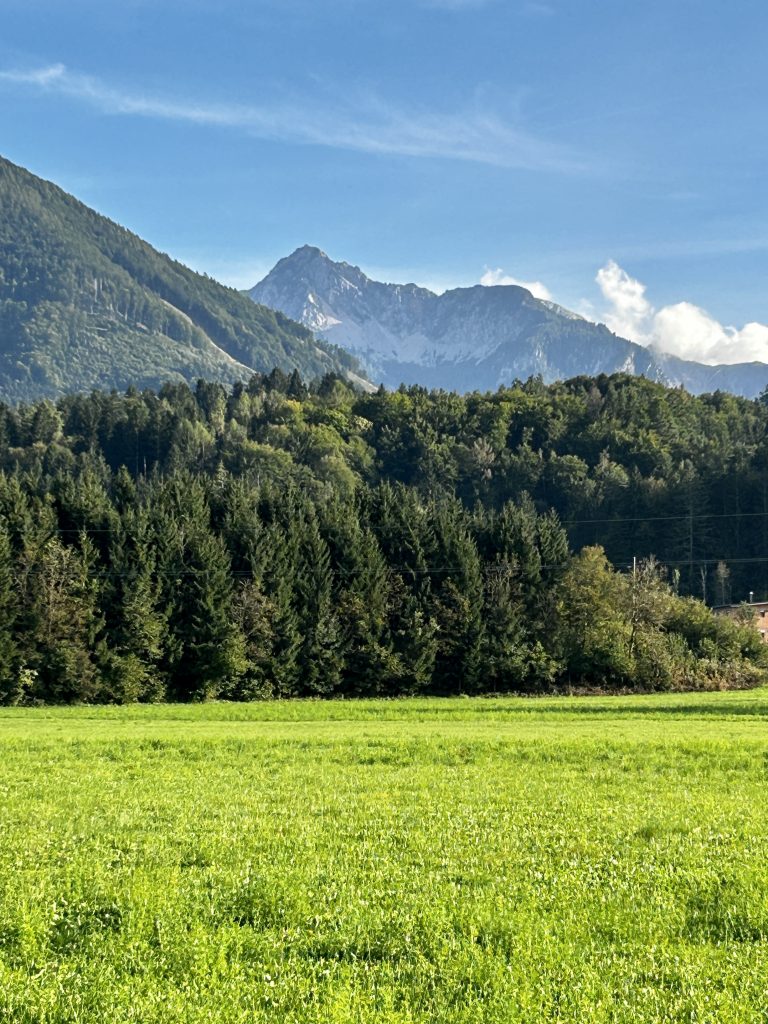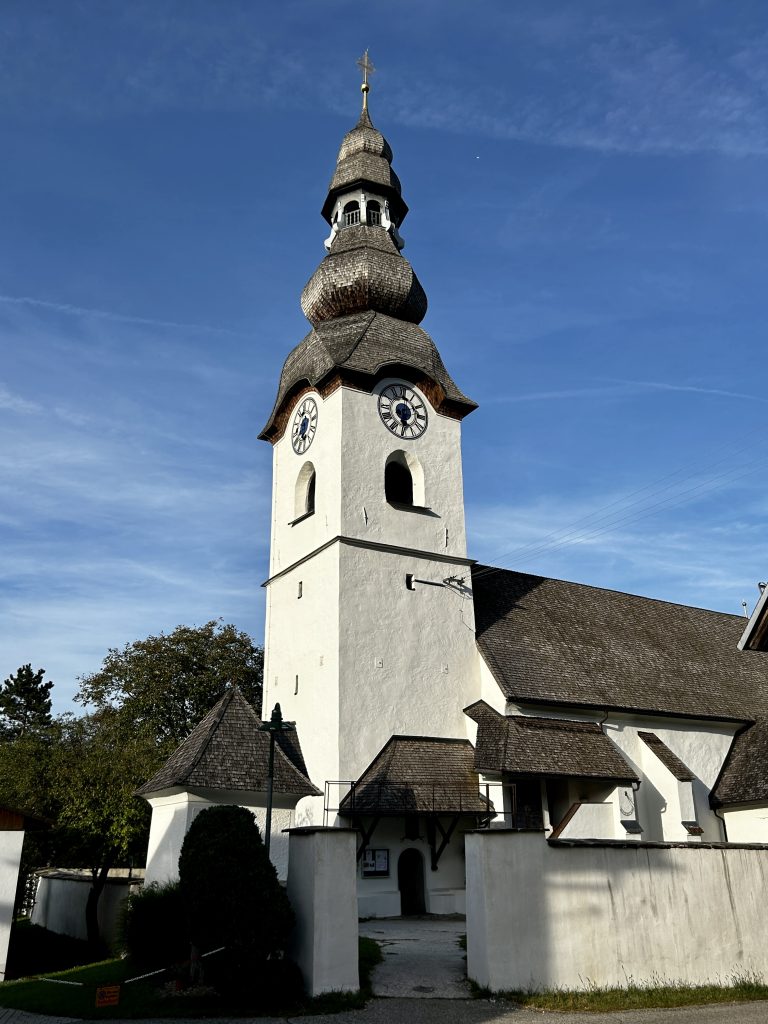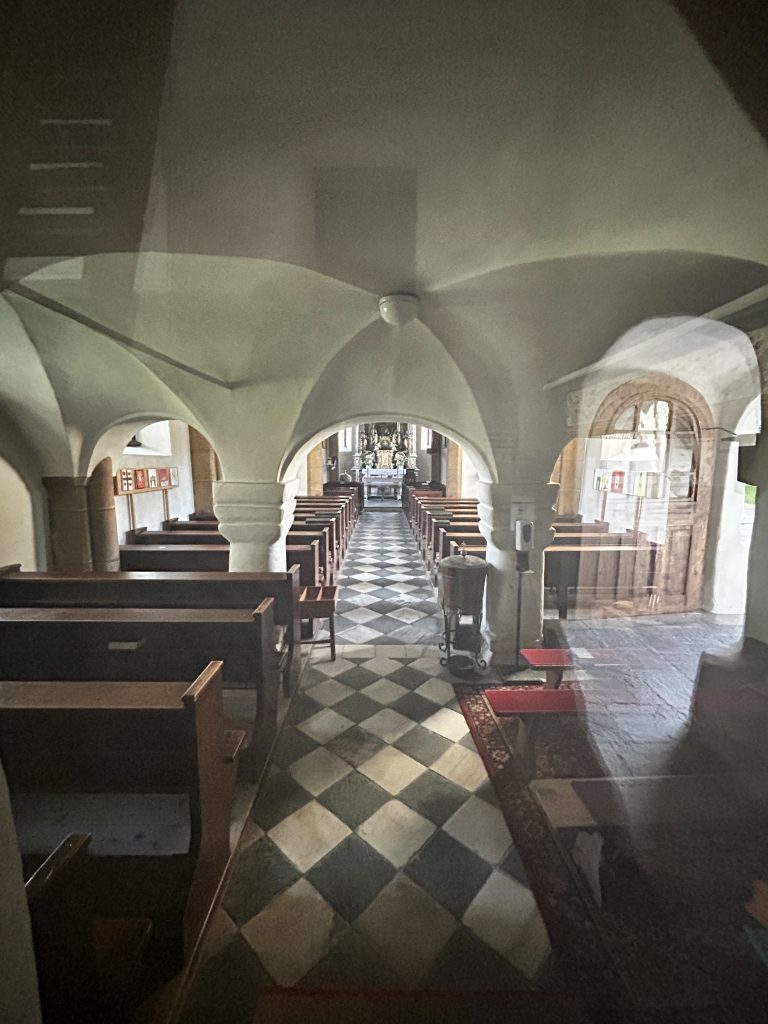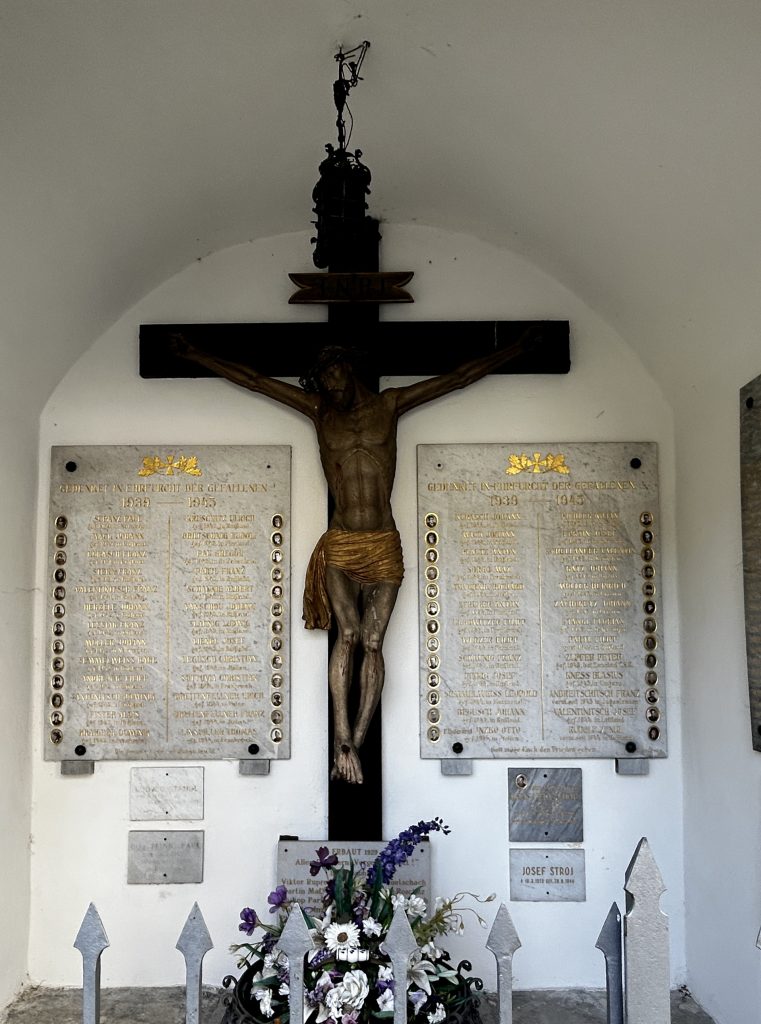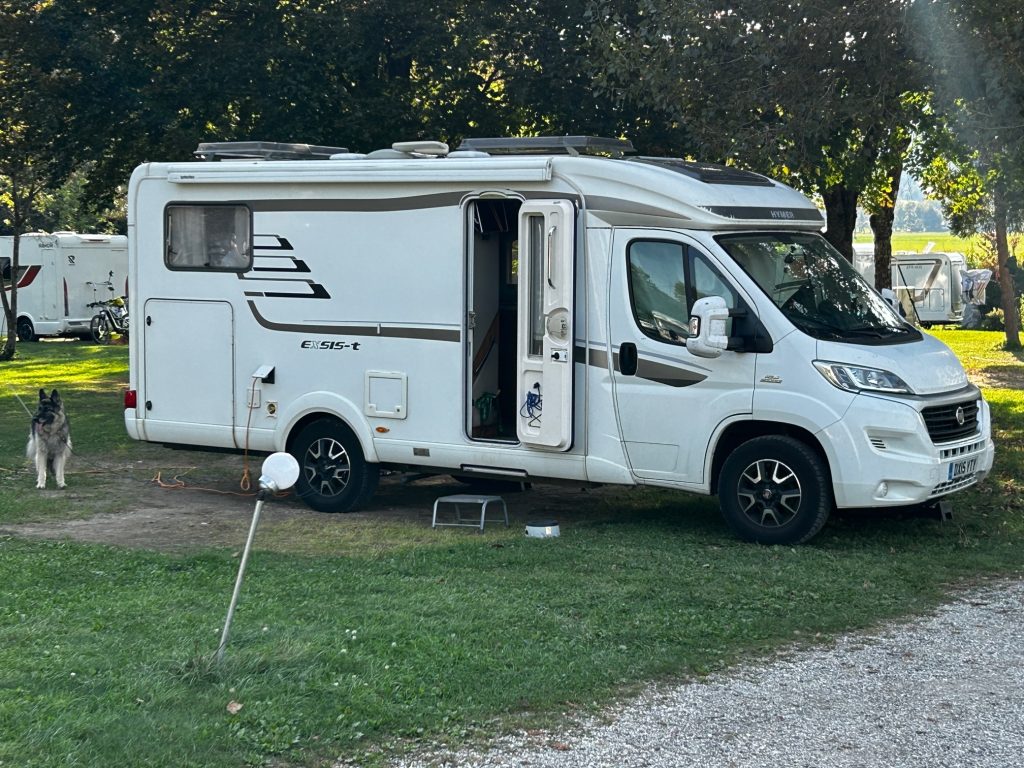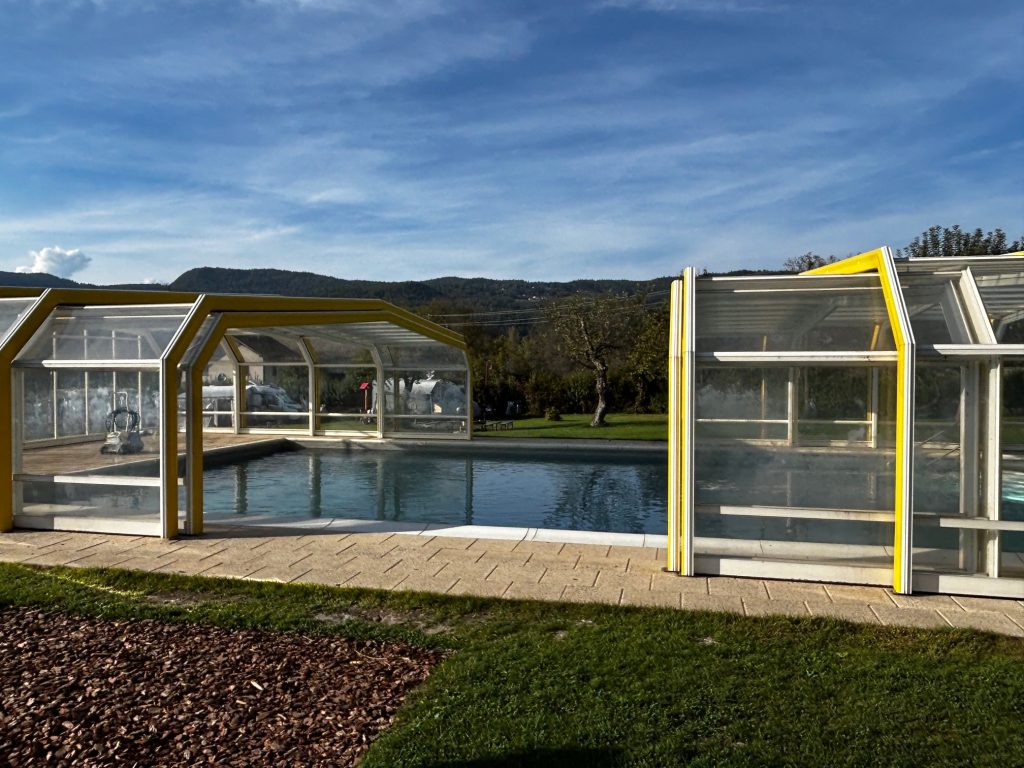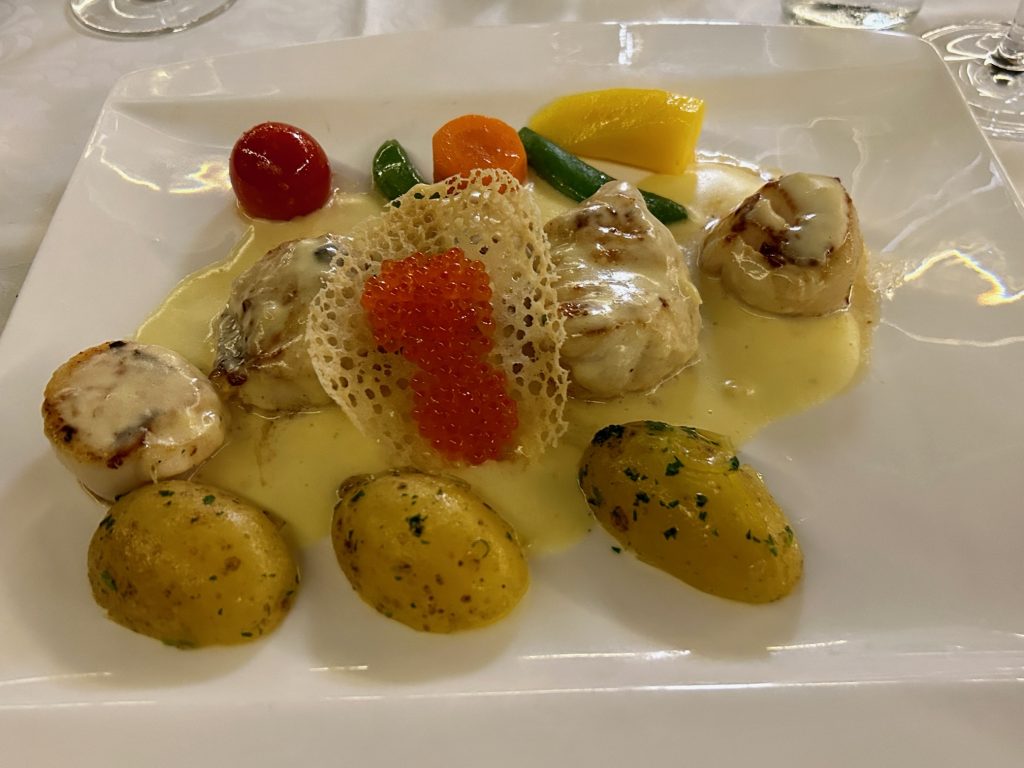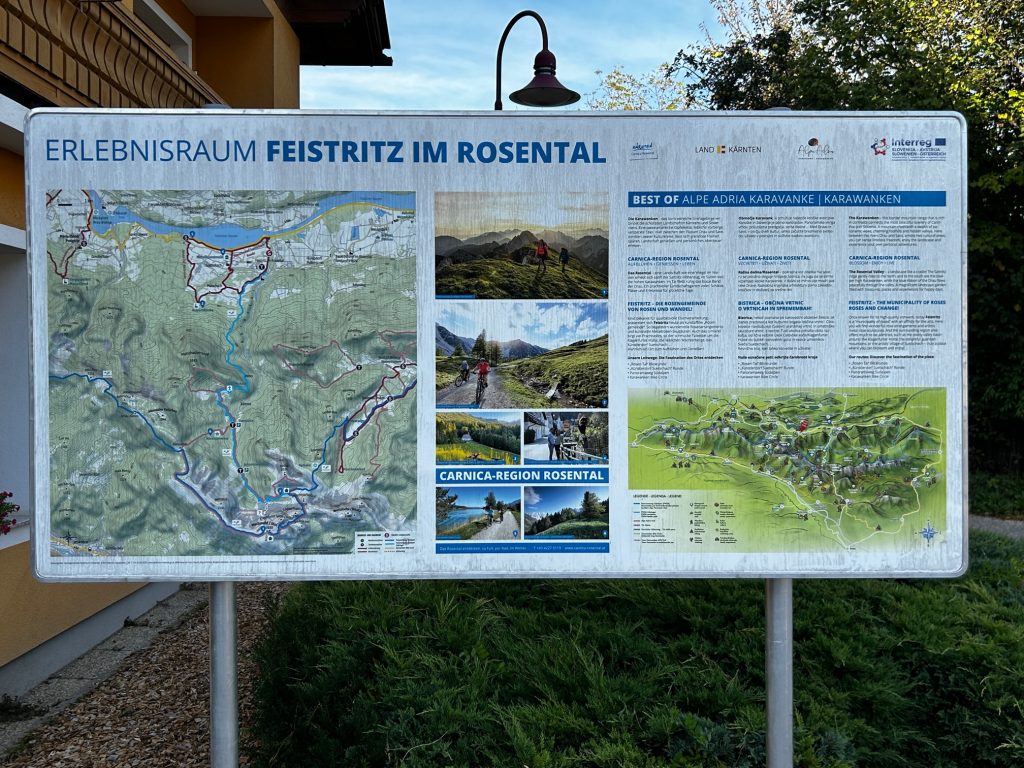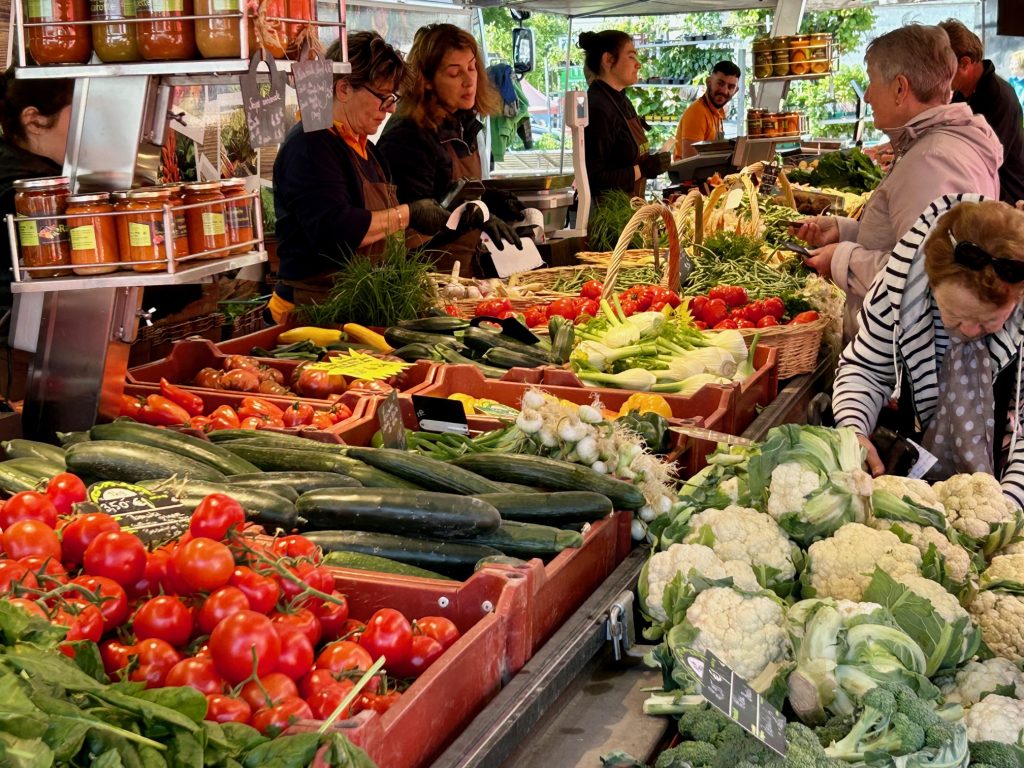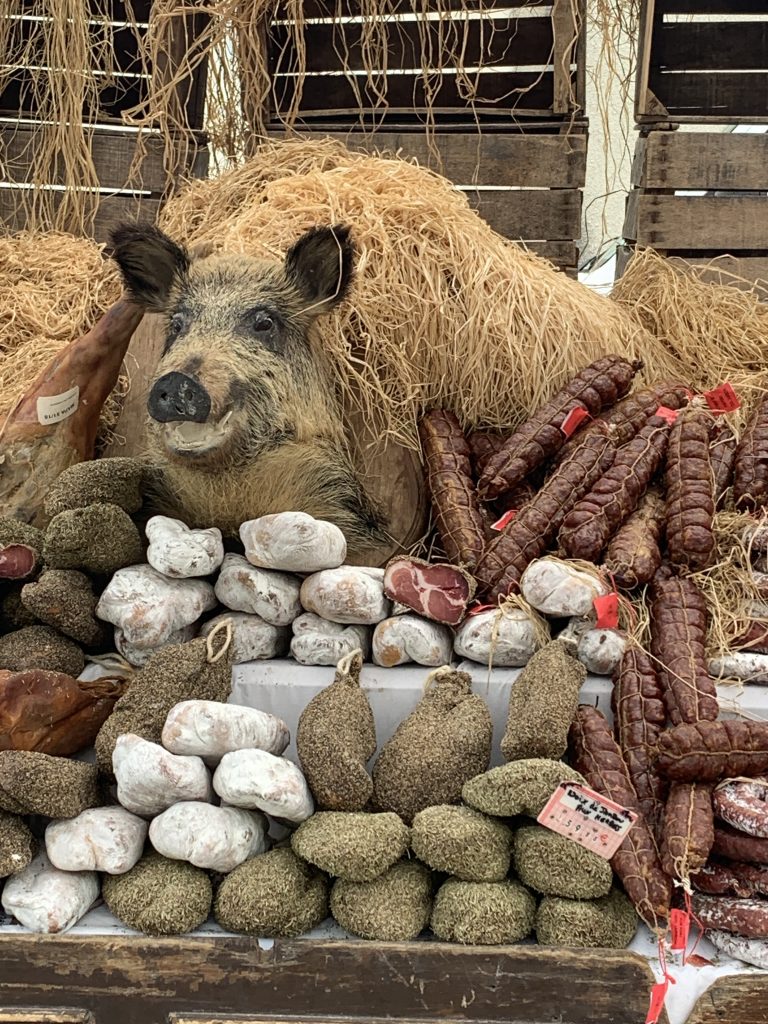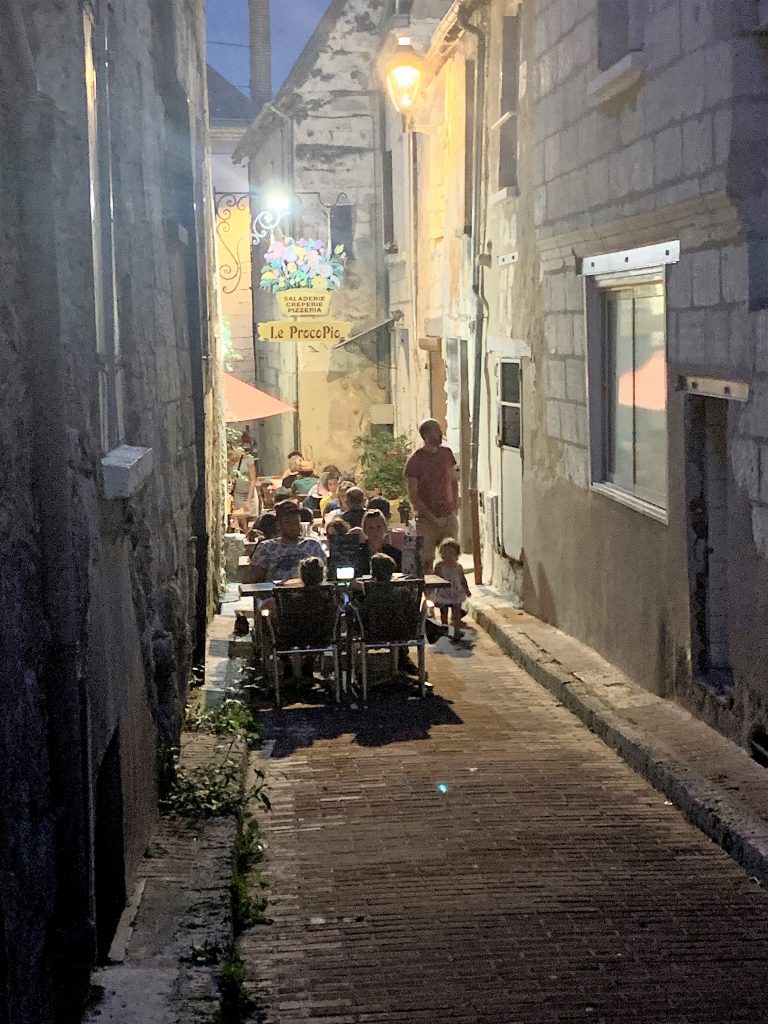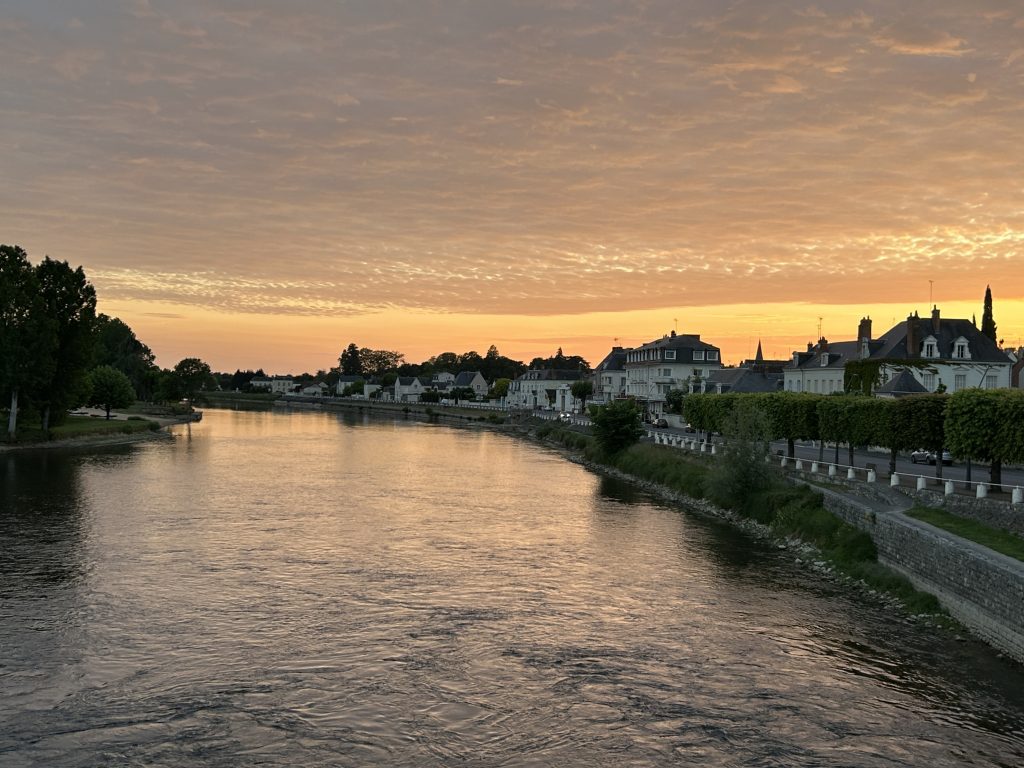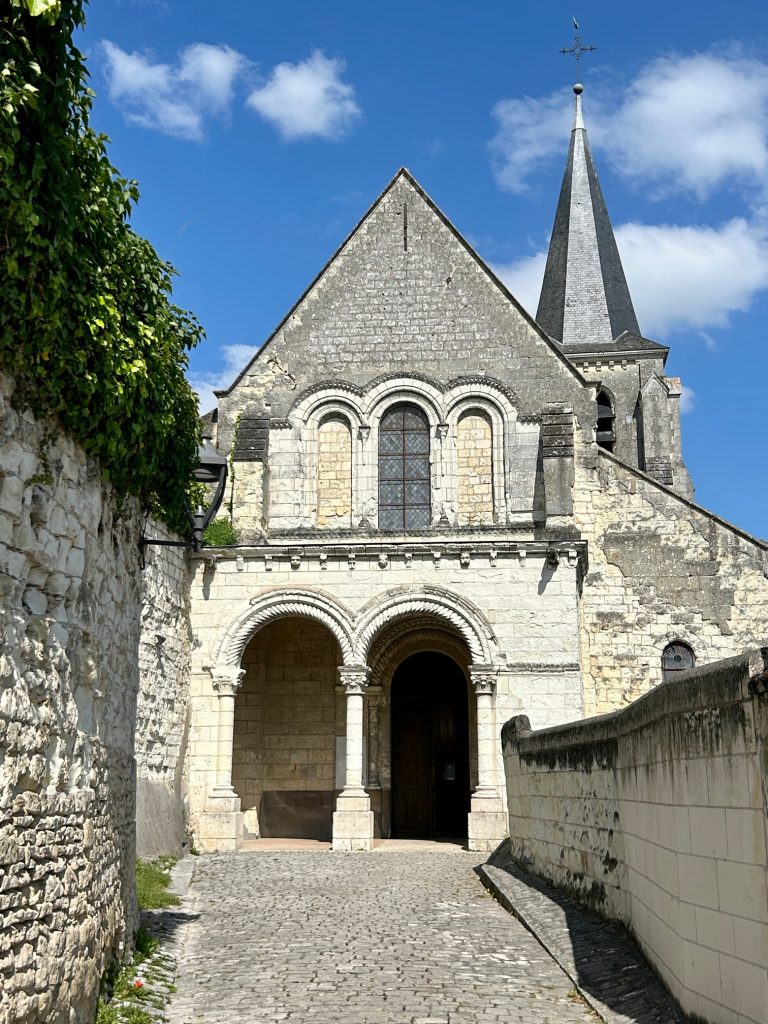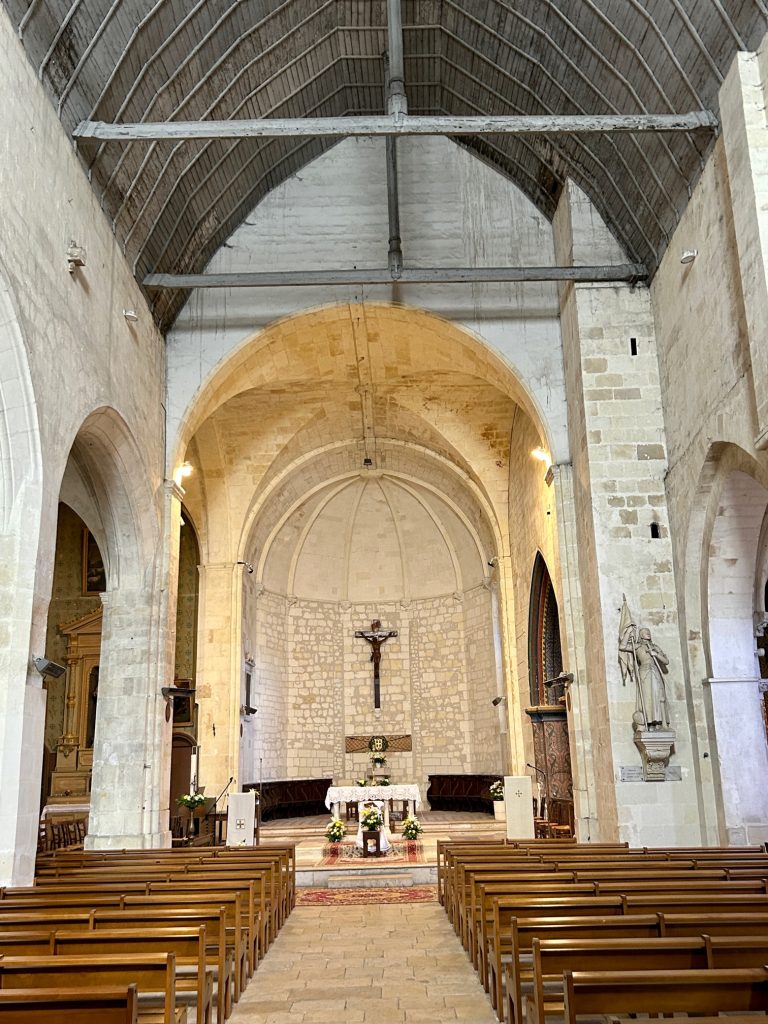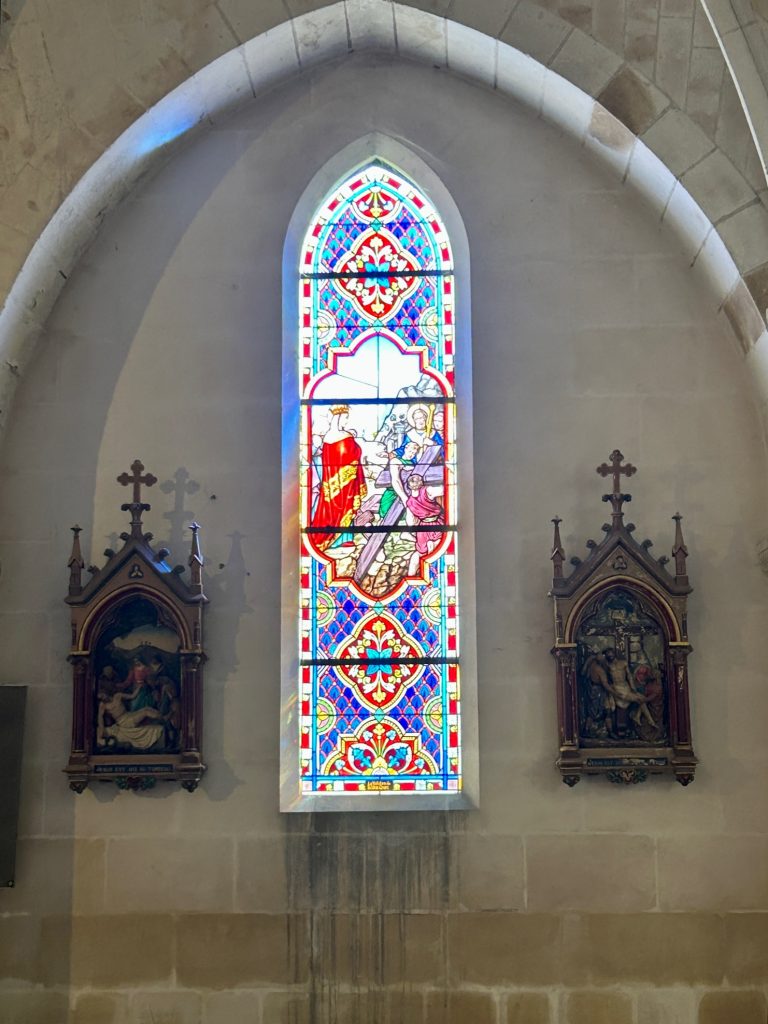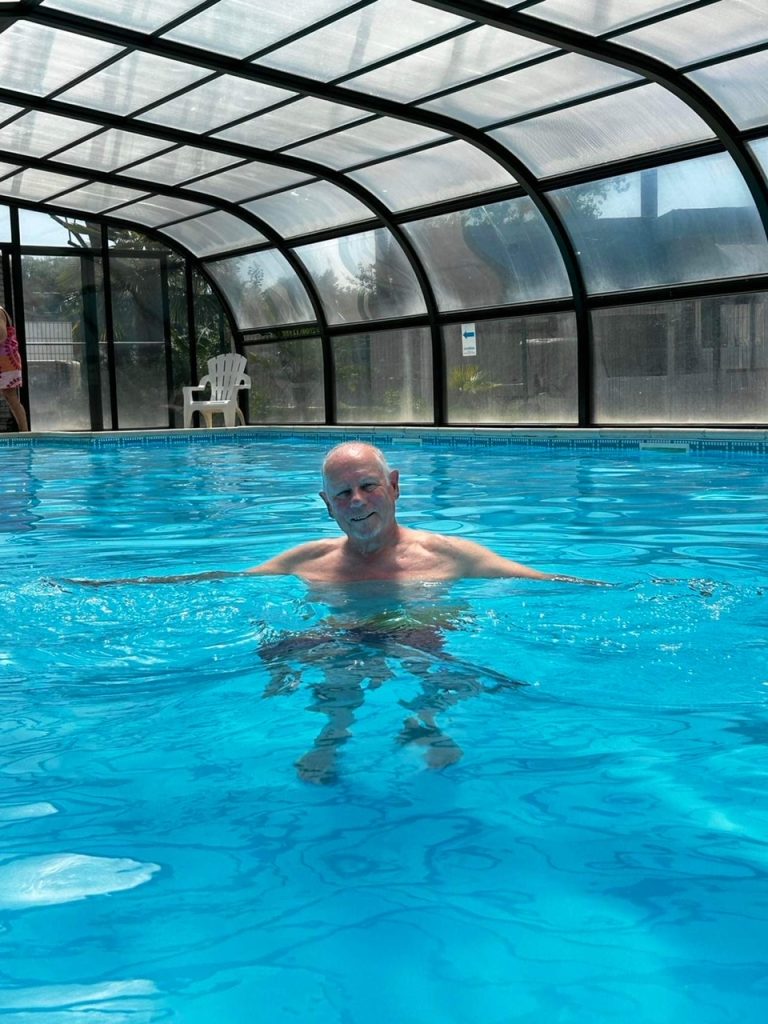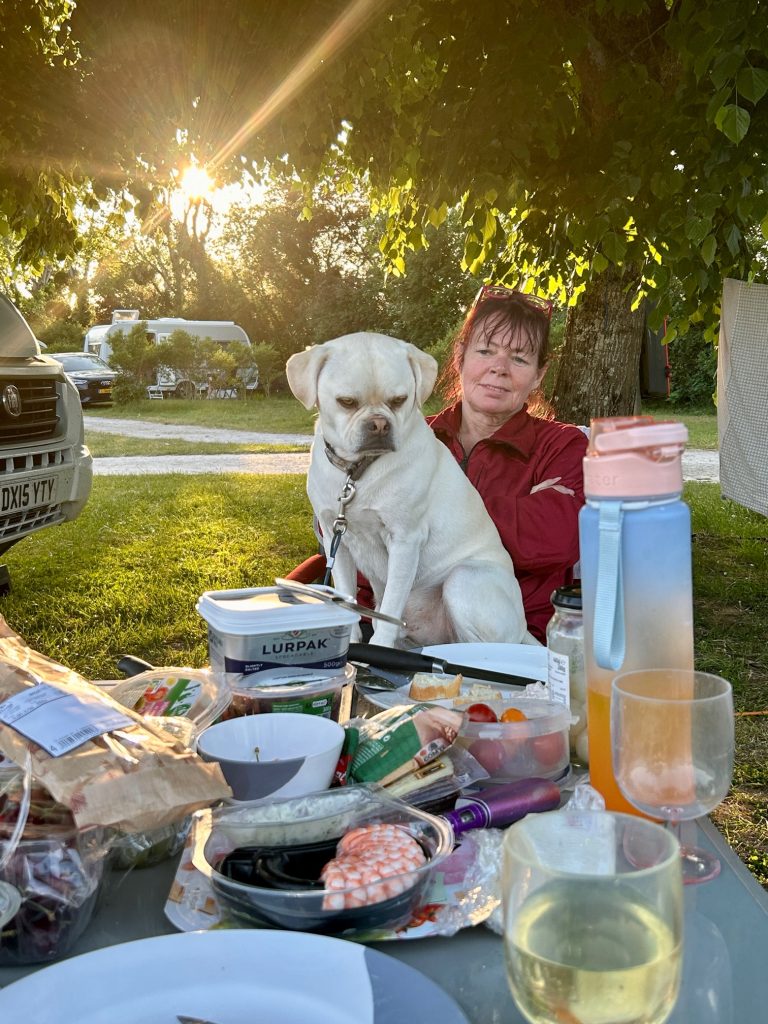Worsening weather (I cannot recall France ever being so wet) forced us further south to the small town of Bazas, some 60 kilometres south east of Bordeaux, in the Gironde Department of Nouvelle Aquitaine. The weather forecast was more promising and we decided to stay in Bazas for a couple of days and then move on to Spain. The campsite we chose, Capfun, has a rather impressive Water Park and; it was almost totally empty of people (this being a weekend out of season). We had to give the Water Park a go before moving on but, more of that later.
Bazas and the surrounding area is famous for it’s white wines and Bazadais Cattle (well, the resulting cooked beef anyway). In addition, the town was granted UNESCO World Heritage Site status in 1998 because of it’s Cathedral and it’s association with the Saint-Jacques Compostelle pilgrimage route. There’s certainly nothing wrong with the local white wine although being so close to Bordeaux I am inclined more towards red wines. I’ll not comment as to the Bazadais Cattle except to say that I saw plenty of them during our drive south but not yet had any opportunity to taste the beef. I did, however, get into Bazas and the Cathedral is beautiful.
Axtually, I made a couple of trips into the town; an exploratory trip on my own shortly after we arrived and a second with Vanya and the dogs on the following day which also happened to be market day (and our wedding anniversary). The exploratory trip was on foot by a back route from the campsite across the fields. Nala couldn’t follow that route with her wheels and Vanya wouldn’t want to but it suited me that first day because within 15 muddy minutes of leaving Capfun I arrived in the town’s main square, the Place de la Cathedrale.
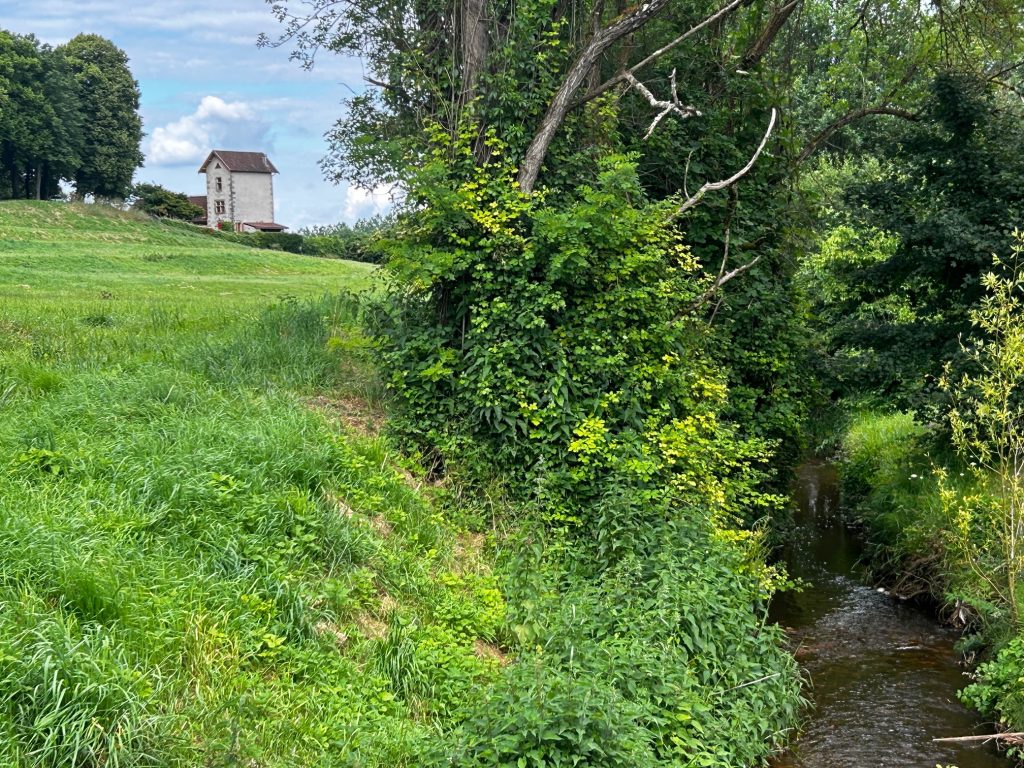

In Bazas, most things worth seeing are to be found on or near the fair sized arcaded Place de la Cathedrale and that includes the very majestic Saint John the Baptist Cathedral, the Hotel de Ville (this latter building having a most excellent entrance) and a range of 16th, 17th and 18th century mansions.
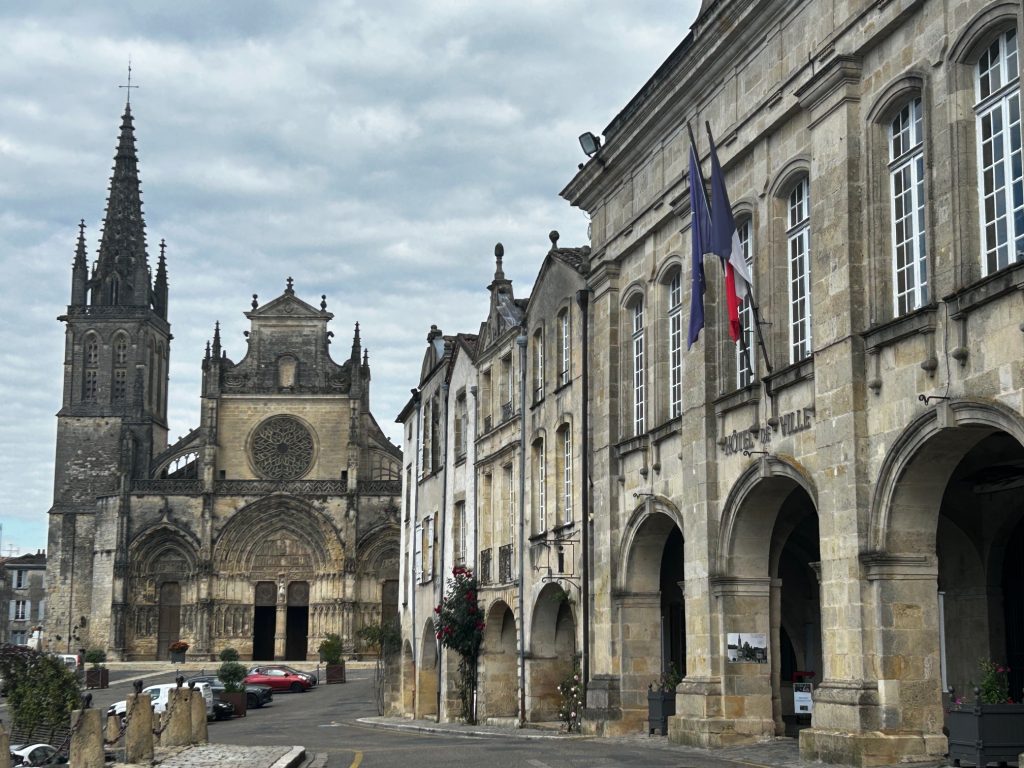
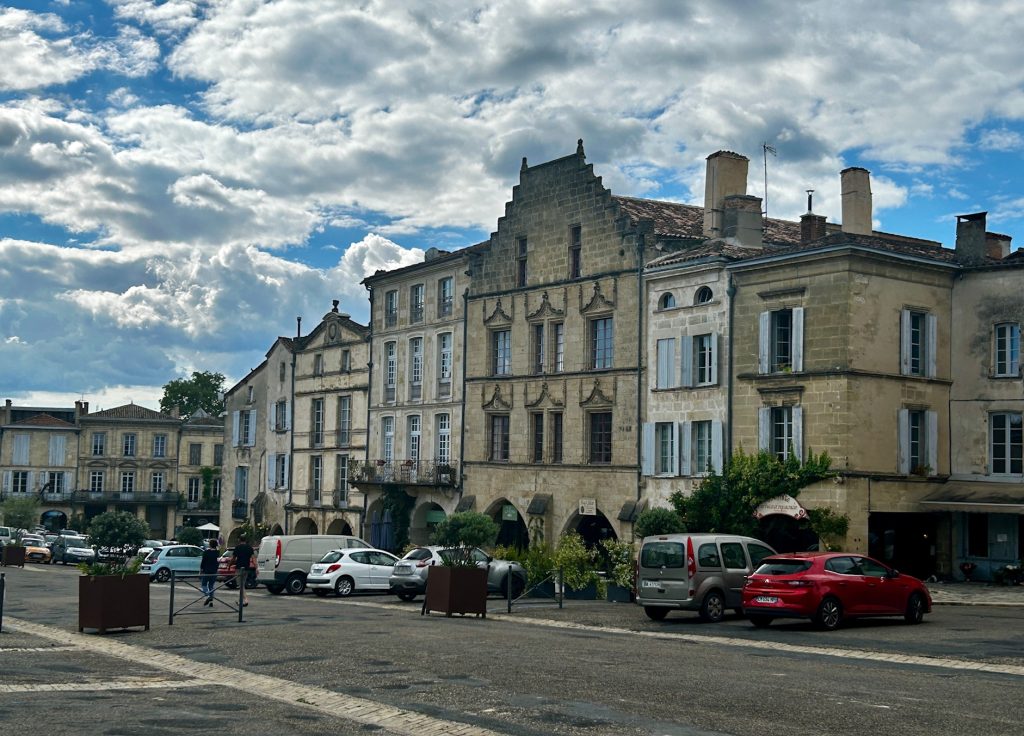


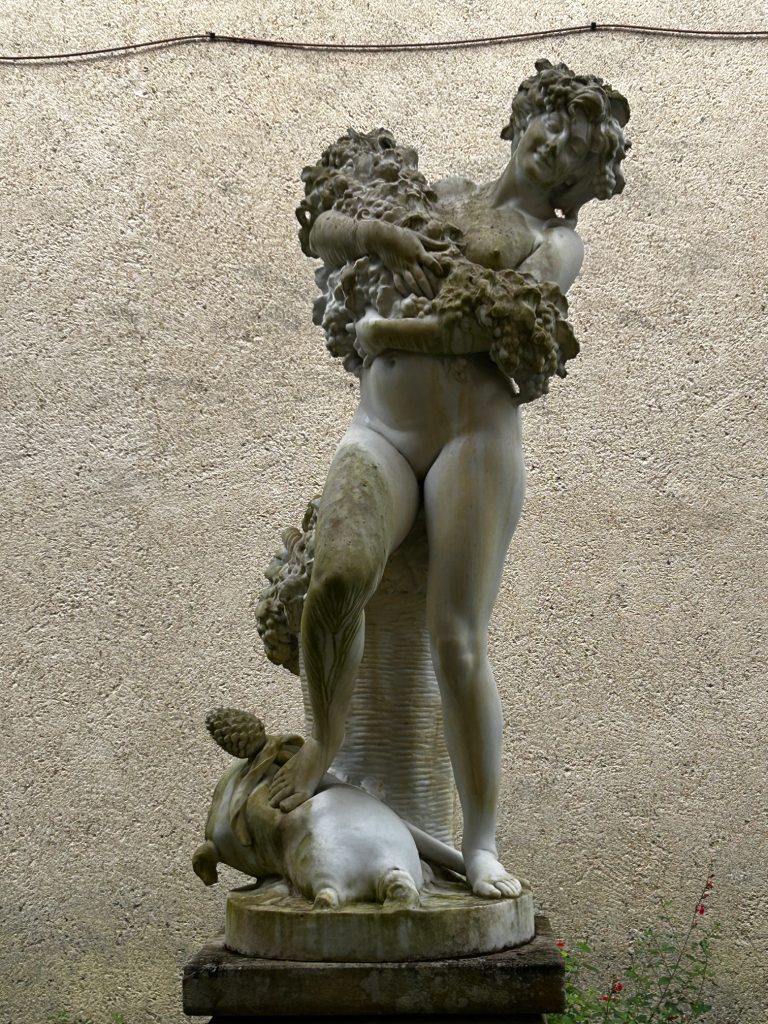
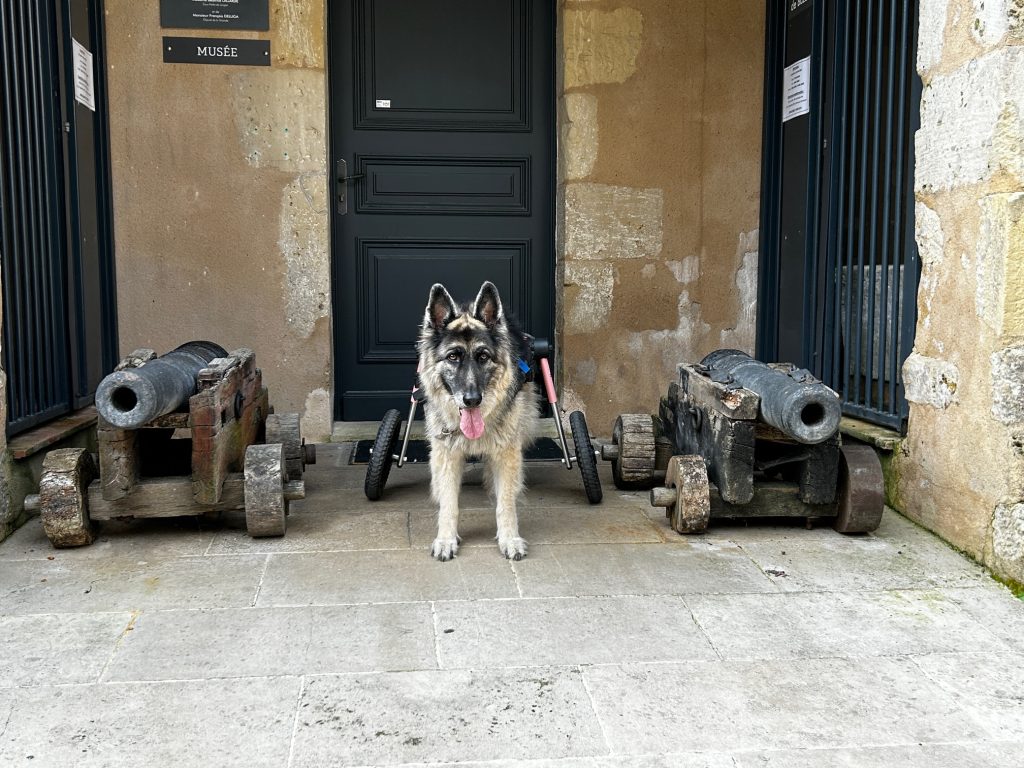
The ‘Belles Vendanges’ (or, in English, the Beautiful Harvest) is a work by the Parisien sculptor Lucien Pallez. Most of his known works seem to have been created between the 1870’s and the 1890’s but many have disappeared. All I know about this particular work is that it was donated to the town in 1911.
The most striking building in the square is the Cathedrale of Saint Jean Baptiste. Construction of this majestic building was started during the 13th century and it was sufficiently complete in time for Pope Urban II to urge the First Christian Crusade to the Holy Land from there. The structure was improved over the following years with the current finished product dating back to 1635. It is as good an example of Gothic architecture as I have seen.
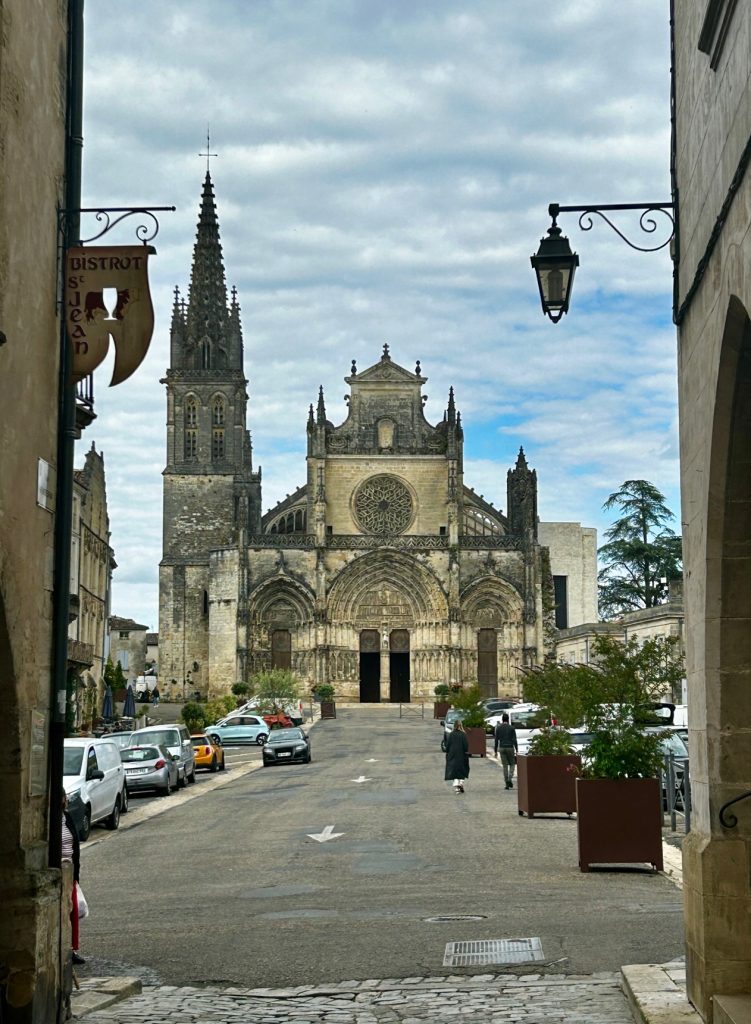
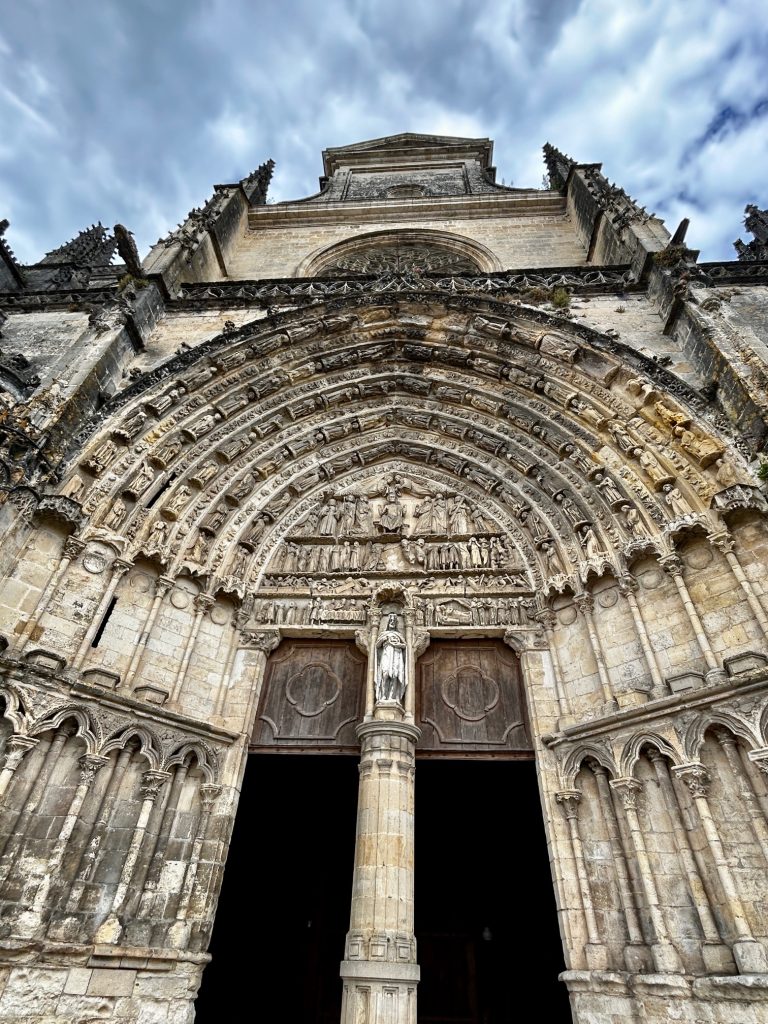

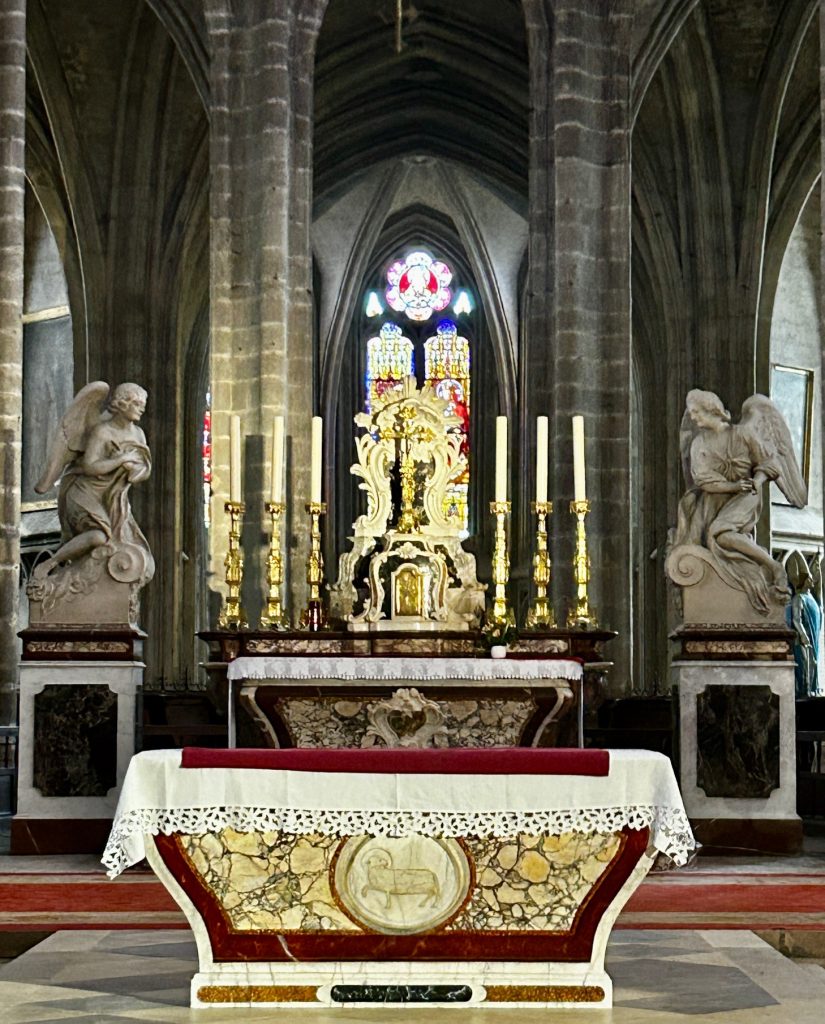
Unusually, the town’s war memorial to it’s fallen in WWI is inside the cathedral. This monument stopped me in my tracks. To see so many killed from such a small town and, perhaps more tragic still, to see so many with the same family name – eight men with the surname ‘St Marc’ are listed on this memorial. Think too of the others who were physically and/or mentally wounded but get no mention. I’ll not describe their sacrifice as a waste because a great many of those killed or injured, died doing what they felt was right at the time and I would never demean their actions but, I will say that it was unforgiveable they should have been called upon to make such a sacrifice. Sorry. Rant over. Moving on…
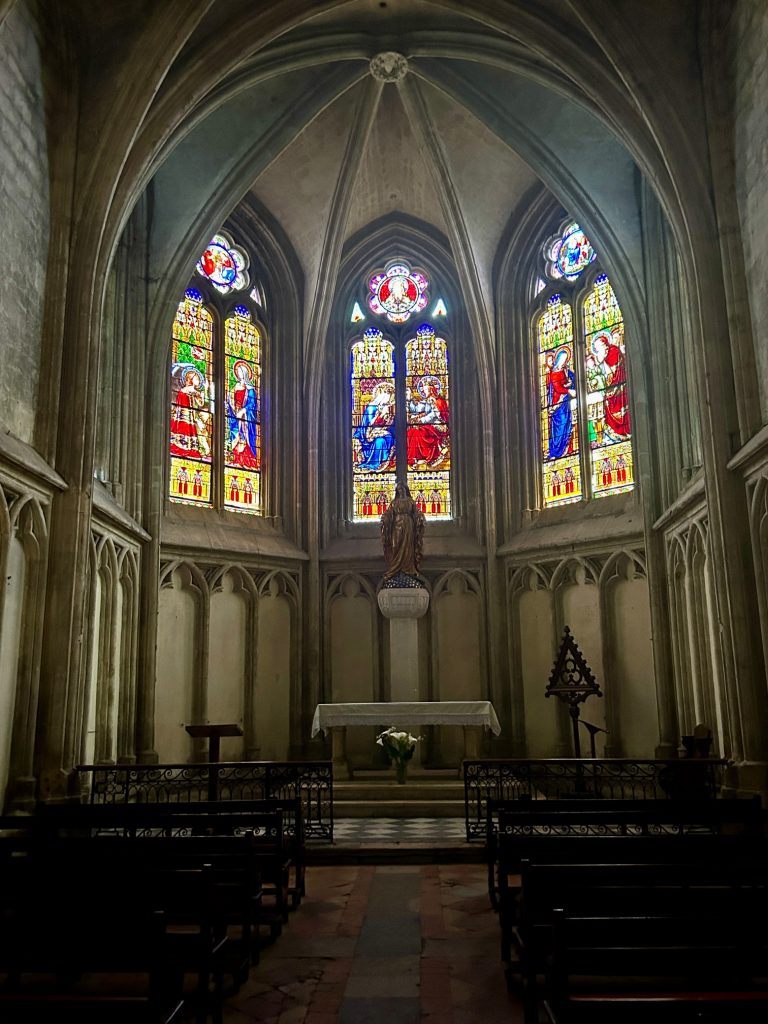
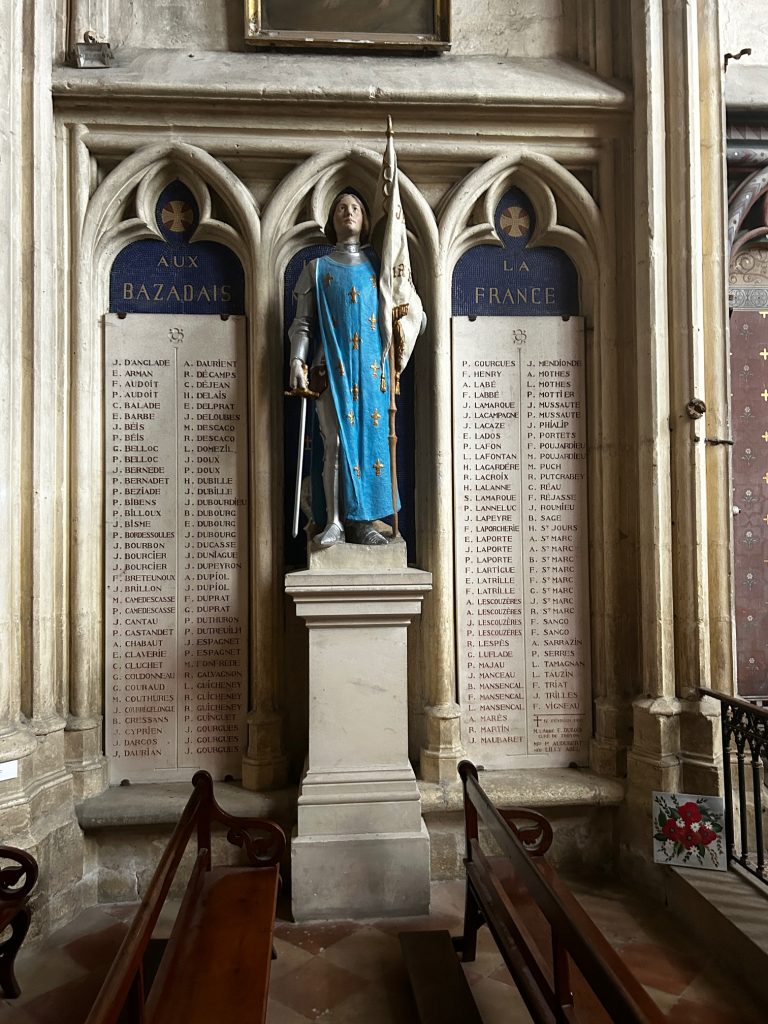
I drove Vanya and the dogs into Bazas fairly early on the Saturday morning to ensure we could get the Van parked up before the crowds arrived. It is never easy finding a parking spot on market days. Farmer’s Markets in France are almost an institution and invariably well attended. Bazas does not have a huge market (how large does it need to be to serve a town of less than 5,000 people) but it has the most incredible fish stall we have ever seen – such a selection of fresh fish! I’ll let some of my photos do the talking…



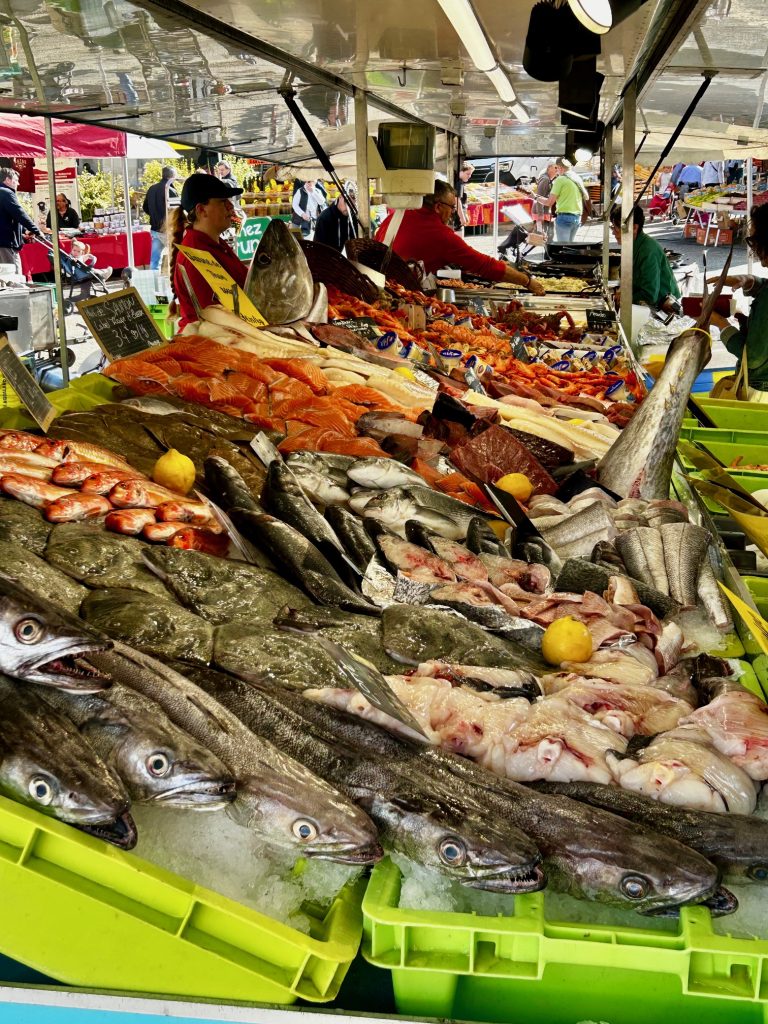
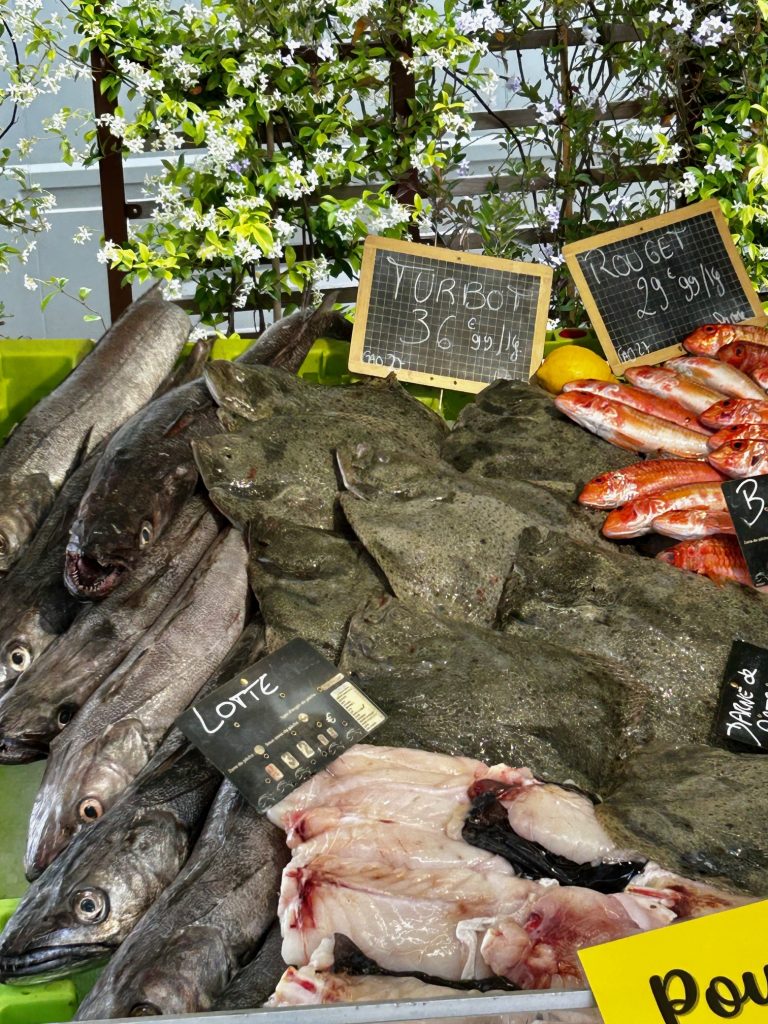

Unbelievable! We had a great morning sitting in the Place de la Cathedrale watching the world go by over coffee and pastries and listening to a fairly accomplished busker – he had a great voice. We must have walked the market two or three times and, towards the end of the morning, bought some fish, fruit, cheese and wine for supper that evening. Probably the quietest start to a wedding anniversary we have ever had but it must rank among the most pleasant and memorable and the shellfish we ate that evening was outstanding.

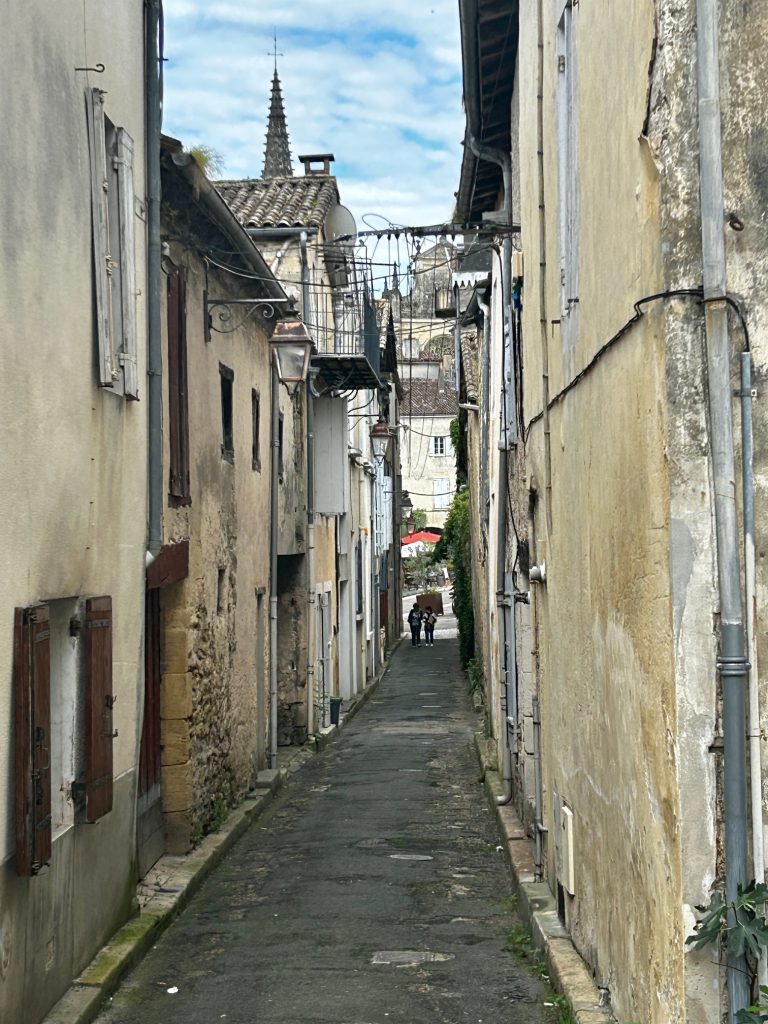
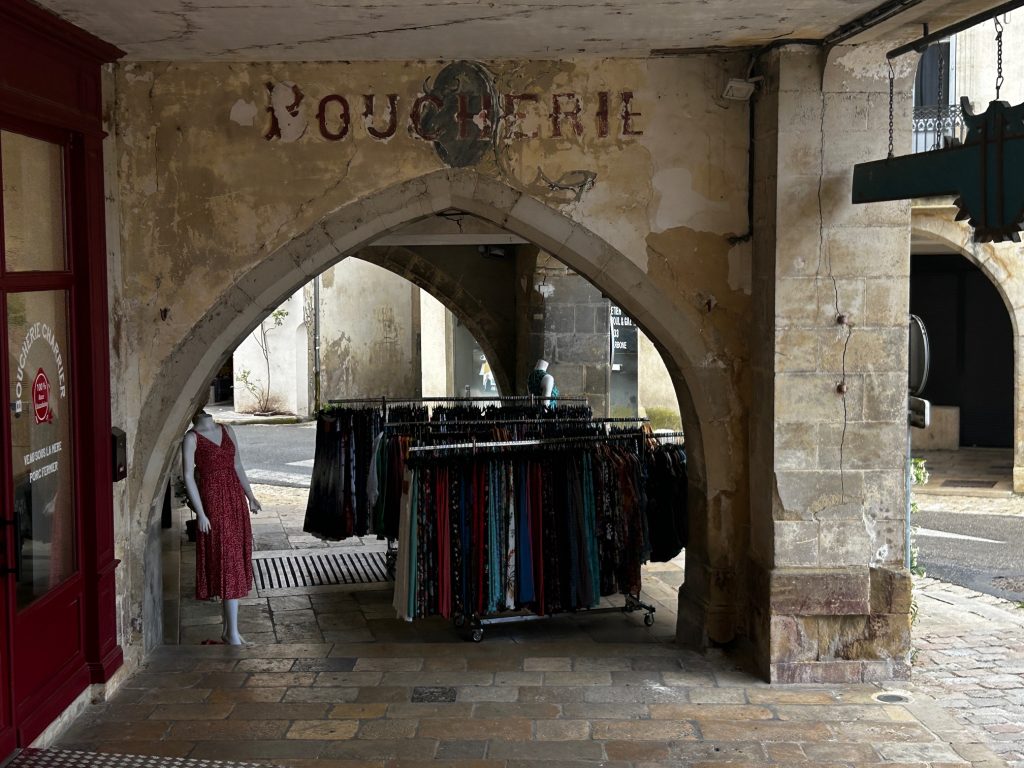
I mentioned that the campsite had it’s own Water Park. We did try it out. Well, I went into one of the pools while Vanya went in up to her ankles but not all of the slides were working. No surprise there because we were the only people on the admittedly quiet site (we are out of season) interested in using the facilities. If only it had been warmer.

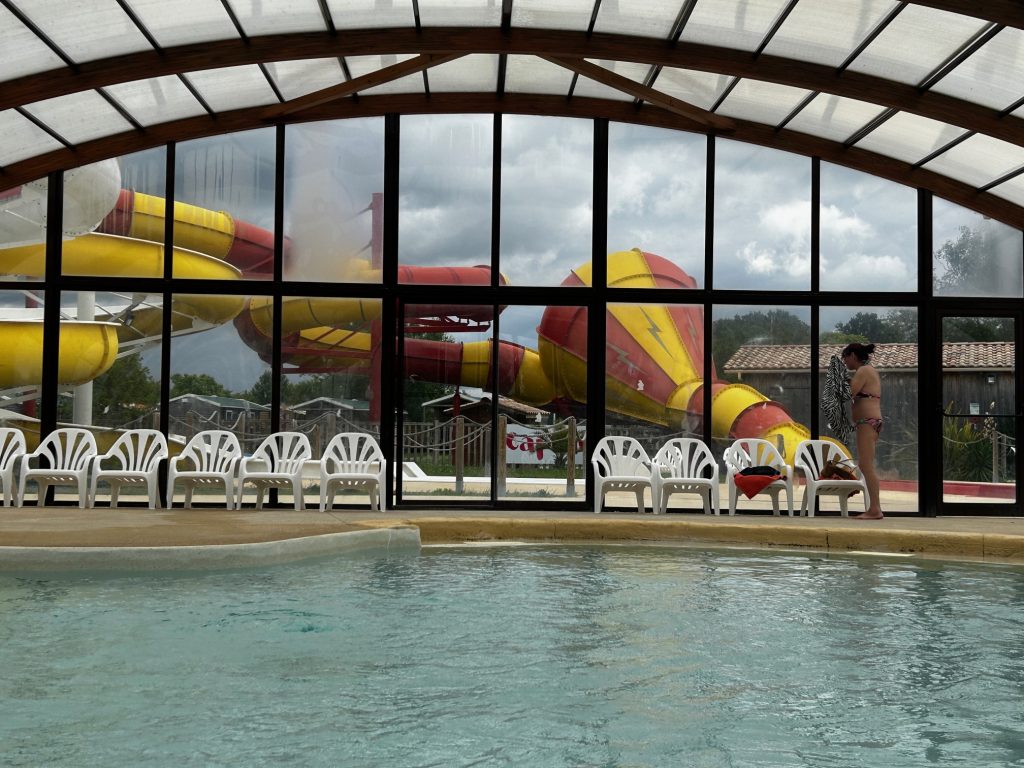
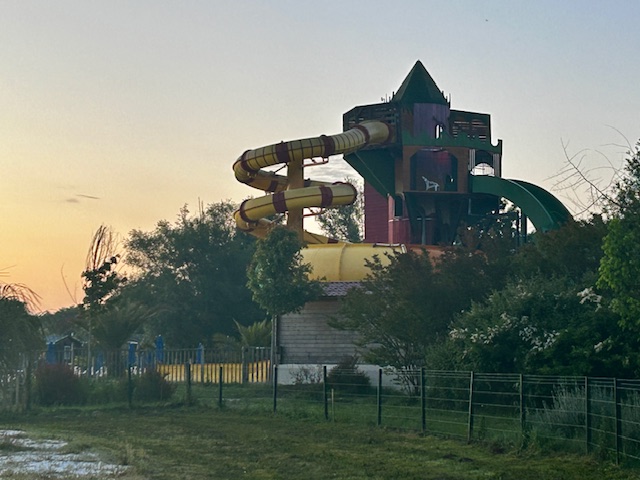
Oh, and we missed out on the Bardelaise Cattle and Steak au Poivre. Next time.
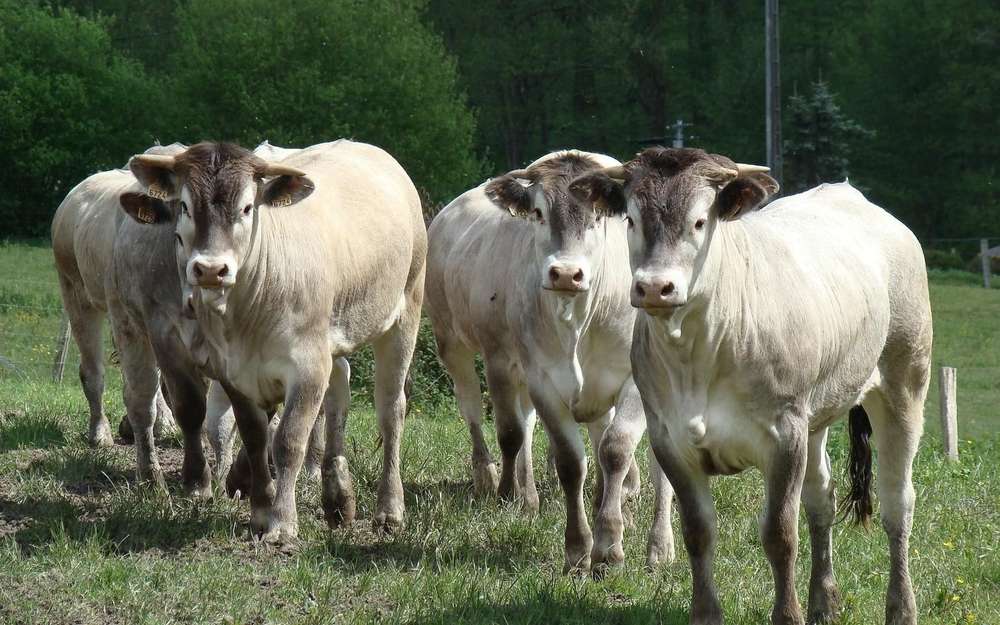

A last two pictures of Bazas. We’re off to Spain.
